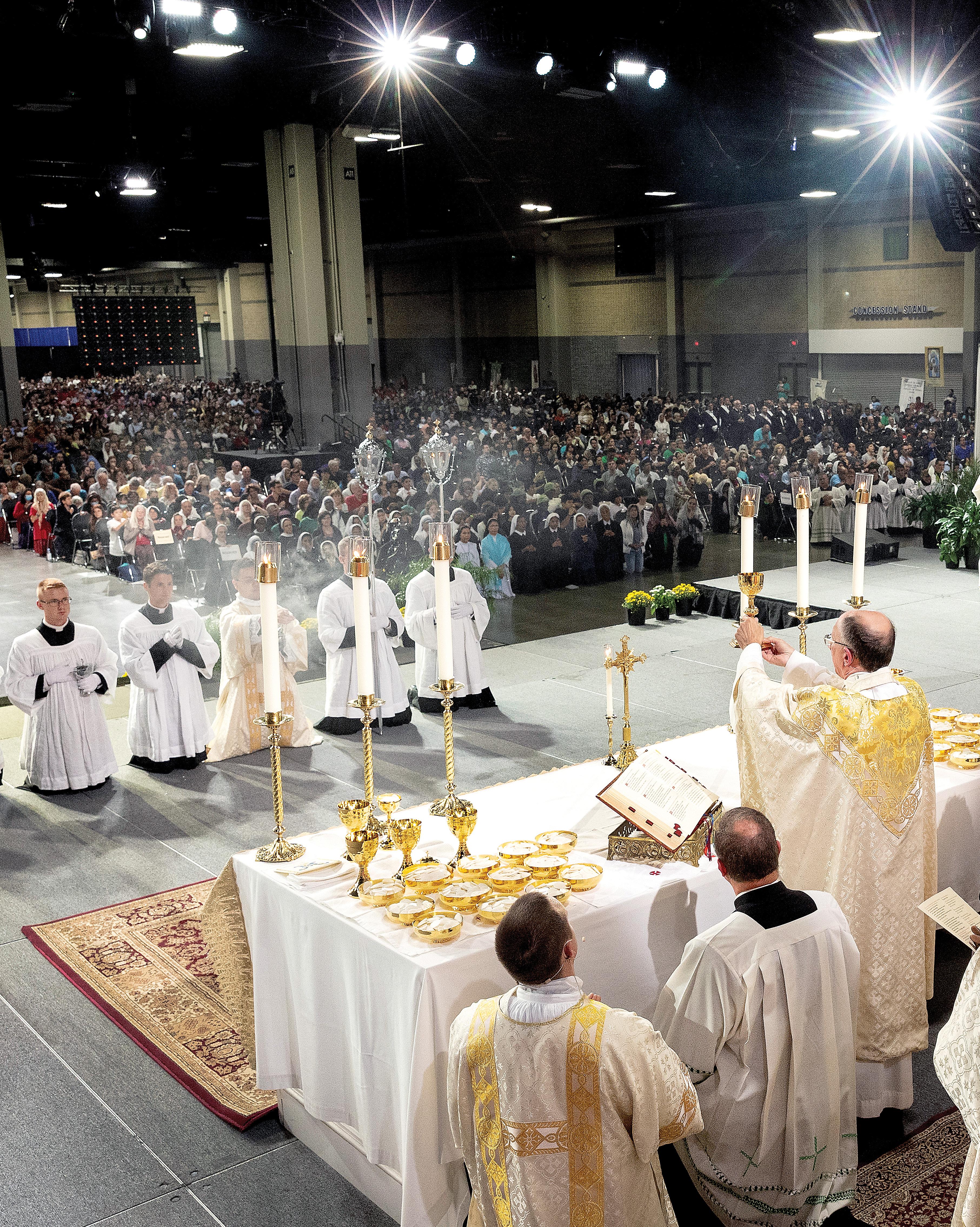




September 15, 2023
Volume 32 • NUMBER 25
1123 S. CHURCH ST. CHARLOTTE, N.C. 28203-4003 catholicnews@charlottediocese.org
704-370-3333
PUBLISHER
The Most Reverend Peter J. Jugis Bishop of Charlotte
Arts & Entertainment 6
Contact us 2
Español 8-11
Our Diocese 4-5, 12-21
Our Faith 3
Our Schools 7
Scripture 3, 10
U.S. news 22-23
Viewpoints 26-27
World news 24-25
EDITOR: Spencer K. M. Brown
704-808-4528, skmbrown@charlottediocese.org
ADVERTISING MANAGER: Kevin Eagan
704-370-3332, keeagan@charlottediocese.org
HISPANIC MEDIA MANAGER: César Hurtado
704-370-3375, rchurtado@charlottediocese.org
MULTIMEDIA DESIGNER: David Puckett
704-808-4521, dwpuckett@charlottediocese.org
EDITORIAL TEAM: Kimberly Bender
704-370-3394, kdbender@charlottediocese.org
Annie Ferguson 704-370-3404, arferguson@charlottediocese.org
Troy C. Hull
704-370-3288, tchull@charlottediocese.org
Christina Knauss, 704-370-0783, clknauss@charlottediocese.org
COMMUNICATIONS ASSISTANT/CIRCULATION: Erika Robinson 704-370-3333, catholicnews@charlottediocese.org
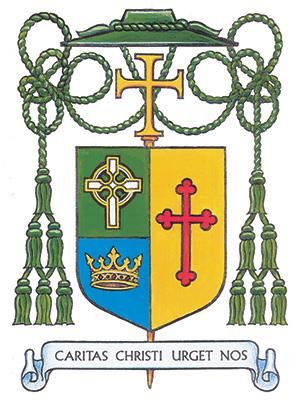
COMMUNICATIONS DIRECTOR: Liz Chandler 704-370-3336, lchandler@charlottediocese.org
ASSISTANT COMMUNICATIONS DIRECTOR: Patricia L. Guilfoyle 704-370-3334, plguilfoyle@charlottediocese.org
THE CATHOLIC NEWS HERALD is published by the Roman Catholic Diocese of Charlotte 26 times a year.
NEWS: The Catholic News Herald welcomes your news and photos. Please e-mail information, attaching photos in JPG format with a recommended resolution of 150 dpi or higher, to catholicnews@charlottediocese.org. All submitted items become the property of the Catholic News Herald and are subject to reuse, in whole or in part, in print, electronic formats and archives.
ADVERTISING: Reach 165,000 Catholics across western North Carolina! For advertising rates and information, contact Advertising Manager Kevin Eagan at 704-370-3332 or keeagan@charlottediocese.org. The Catholic News Herald reserves the right to reject or cancel advertising for any reason, and does not recommend or guarantee any product, service or benefit claimed by our advertisers.
SUBSCRIPTIONS: $16.75 per year for registered families of the Diocese of Charlotte and $25 per year for all others
POSTMASTER: Periodicals Class postage (USPC 007-393) paid at Charlotte, N.C. Send address corrections to the Catholic News Herald, 1123 S. Church St., Charlotte, N.C. 28203.
September is a fitting time to celebrate Our Lord in the Eucharist, especially during the Diocese of Charlotte’s Eucharistic Congress each year. St. Paul VI once said, “Perpetual Adoration extends its influence far beyond the individual adorers, touching their homes and families and reaching out to the parish community and beyond.” Between the start of lay Eucharistic Adoration and important dates in the stories of Eucharistic saints, this month holds plenty of ways to keep devotion to the Real Presence of Jesus in the Eucharist going strong, even after Charlotte’s Eucharistic Congress, held Sept. 8-9.
LEARN THE ORIGINS OF LAY ADORATION
Eucharistic Adoration by laypeople formally began in Avignon, France, in September 1226. In reparation for the sacrileges of the Albigensian heresy, King Louis VIII built a church in Avignon near the Sorgue River to honor the Blessed Sacrament. On the Feast of the Exaltation of the Cross, the king planned a Eucharistic procession around the city. Dressed in sackcloth and with a rope around his waist, he led the procession. Because of the throngs of adorers, the Blessed Sacrament was exposed throughout the night. As the practice continued in the days and nights that followed, the bishop declared that Adoration would continue there. Perpetual Adoration continued for 200 years – then a Eucharistic miracle occurred during a massive flood. What was that miracle? Read more at www.therealpresence.org
PRAY AND GIVE LIKE ST. VINCENT DE PAUL
St. Vincent de Paul, whose feast day is Sept. 27, is a prime example of realizing the beneficial impacts of Eucharistic Adoration. Completely devoted to the poor, he established hospitals, religious orders and lay organizations to help as many people as possible. He was known to make a Holy Hour requesting God’s blessings on important business transactions, and he returned to thank Him afterward. The work of this great saint continues around the world today thanks to the Society of St. Vincent de Paul, the Daughters of Charity and at churches dedicated to him, such as St. Vincent de Paul Parish in Charlotte, where Eucharistic Adoration takes place every Friday in the Holy Family Chapel.
ADORE OUR LORD WITH ST. THÉRÈSE
St. Thérèse of Lisieux, who died on Sept. 30, 1897, was an ardent adorer of Jesus in the Eucharist. “I loved especially the
ENTERTAINMENT
ARTS AT THE ABBEY PRESENTS ‘WHEEL OF THE INNOCENTS’: 8 p.m. Monday, Sept. 18, Abbey Basilica, 100 Belmont-Mt. Holly Road, Belmont. A free concert by the well-known Venetian Ospitale della Pietà, a charitable community known for its female orchestra of “orphans” led by a number of performer/ composers including Vivaldi. Come hear a performance of 17th-century Venetian music and readings, featuring strings, theorbo, guitar, dulcian and bassoon. For details, go to www. heartlandbaroque.org.
PRAY THE ROSARY: 7:30 p.m. Saturday, Oct. 7, Riverside Park, 305 Tappan St., Spruce Pine. Come for a candlelit rosary procession through the Town of Spruce Pine and for the special intention of the conversion of our mountains to the faith. For details, email jacqueline.hinshaw@outlook.com.
ROSARY RALLY FOR OUR NATION : 11:30 a.m. Saturday, Oct. 14, Latta Park Pavilion, 601 E. Park Ave., Charlotte. Enjoy faith
Detail of a photo of St. Thérèse of the Child Jesus, taken in the courtyard of the monastery of Lisieux on Easter Monday, April 15, 1894 – three years before her death at the age of 24.
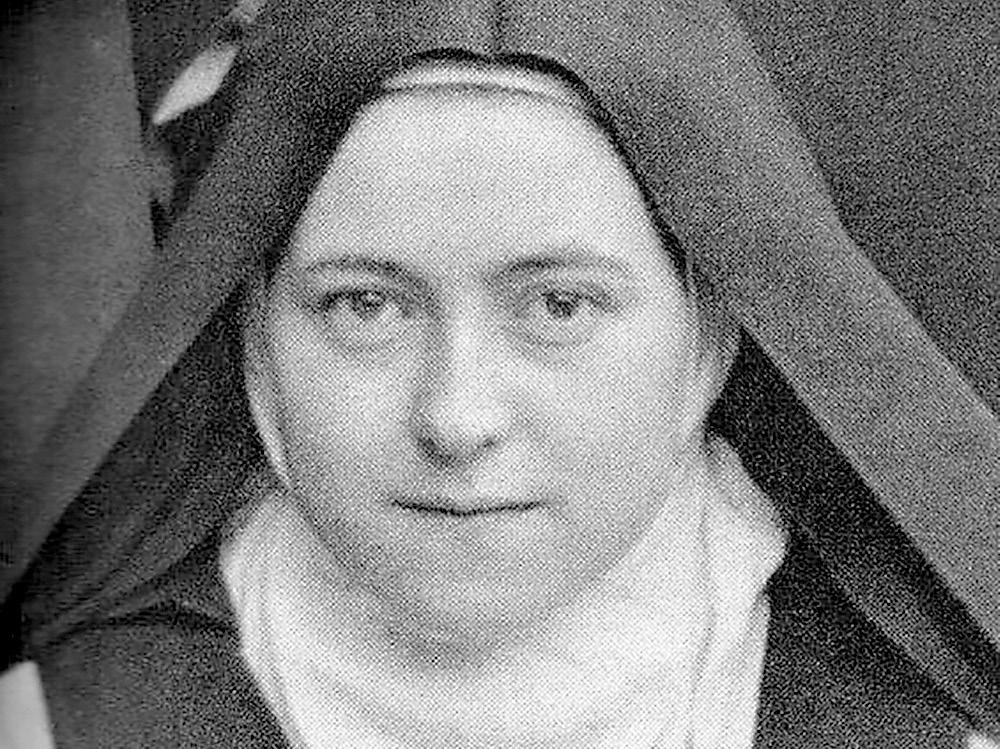
processions in honor of the Blessed Sacrament. What a joy it was for me to throw flowers beneath the feet of God! Before allowing them to fall to the ground, I threw them as high as I could, and I was never so happy as when I saw my roses touch the sacred monstrance,” she wrote in her autobiography “Story of a Soul.” Introduce young children to St. Thérèse in the first six books of the classic Treasure Box series by the Maryknoll Sisters, available at www. tanbooks.com. Charming illustrations of St. Thérèse’s childhood complement the stories of love and lessons learned. Fun activities follow each installment of the series.
— Annie FergusonScan the QR code for this week’s recommended books, resources and more:

and fellowship as we seek Our Lady’s intercession and pray the rosary. Drinks and snacks provided.
CATHOLIC HEALTH PROFESSIONALS OF CHARLOTTE : 6:30 p.m. Friday, Sept. 29, St. Patrick Cathedral, 1621 Dilworth Road East, Charlotte. Catholic healthcare workers and spouses are invited to a dinner and discussion. The event will feature Katy Faust, president of Them Before Us, a children’s rights organization. The discussion, BioTechnology: A Threat to Children’s Rights?, will examine current and emerging biotechnologies and their impact on children. RSVP by Wednesday, Sept. 27, at catholichealthcharlotte@gmail.com.
A LIFE DEFENDER VIGIL MEETING : 7 p.m. Wednesday, Sept. 27, Aquinas Hall at St. Thomas Aquinas Church, 1400 Suther Road, Charlotte. Panelists include: Father Peter Ascik of the diocesan Office of Family Life, Elizabeth Harris of Sidewalk Advocates for Life, and Jerry Nymberg from Fraternity of St. Joseph. For details, go to www.fsjjourneymen.com/life-defenders.
Bishop Peter J. Jugis will participate in the following events:
SEPT. 15 – 10 A.M.
Parish Pastoral Planning Meeting for St. Dorothy Church Pastoral Center, Charlotte
SEPT. 21 – 10 A.M.
Parish Pastoral Planning Meeting for St. Jude Church Pastoral Center, Charlotte
In our Sept. 1 article “Vicar of Hispanic Ministry to visit vicariates, promote pastoral priorities,” Sister Joan Pearson’s title was misstated. She is assistant to the vicar for Hispanic Ministry. We regret the error.
The feast of Our Lady of Sorrows commemorates the profound union of heart that existed between Mary and her Son Jesus. As the mother of the Savior, she experienced many sorrows as a consequence of His mission – particularly during His Passion and death.
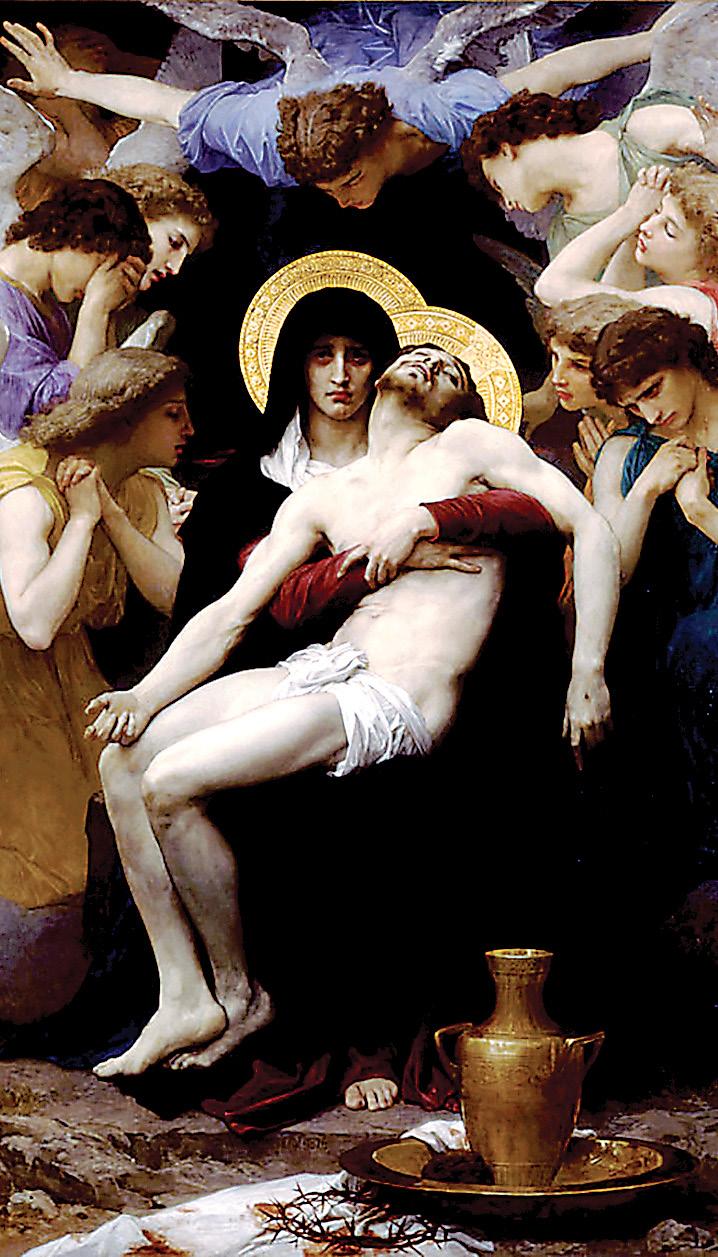
From the early days of Jesus’ life, Mary suffered maternal anxieties. She was warned about the pain to come when she and St. Joseph took Jesus to be presented in the Temple in Jerusalem, according to Jewish law. There, they met an old man named Simeon, who told Mary that during her life she would feel the agony of seven swords piercing her soul.
Soon after, the Holy Family was forced to flee to Egypt to save Jesus from the murderous King Herod. Mary and St. Joseph also suffered the pain of fearing for Jesus when He went missing for three days and they later found Him in the Temple in Jerusalem. When her Son embarked on His mission, the opposition of so many people to Him must also have been a tremendous sorrow for her. All of this culminated at the Cross, where she saw Him tortured and crucified in front of a mocking crowd.
The title “Our Lady of Sorrows” therefore, honors the trials that the Mother of the “Suffering Servant” – as described in Isaiah 52:13-53:12 – faced. Because of its link to Jesus’ Passion and death, this feast is the day after the Exaltation of the Holy Cross on Sept. 14.
WHY DO WE CELEBRATE A FEAST ABOUT SORROW?
Like all feast days, this feast gives thanks to God for the saving work He has accomplished. In this case, we give thanks to God for His greatest creation, Mary, whose “yes” to becoming the mother of Jesus enabled our salvation.
The day also reminds us that Mary’s maternal love is here for us today – as intercessor, model of Christian discipleship, and as Mother of the Church.
St. Louis de Montfort once wrote, “If you put all the love of all the mothers into one heart, it still would not equal the love of the heart of Mary for her children.” This means that she suffers for us as well, and we can turn to her as we would turn to our biological mothers, in both joy and sorrow.
WHAT WAS THE PROPHECY OF SIMEON?
God has provided His people with many prophets, including an old man named Simeon, whose prophecy about Mary is recounted in detail in Luke’s Gospel:
“Now there was a man in Jerusalem, whose name was Simeon, and this man was righteous and devout, looking for the consolation of Israel, and the Holy Spirit was upon him. And it had been revealed to him by the Holy Spirit that he should not see death before he had seen the Lord’s Christ. And inspired by the Spirit he came into the temple; and when the parents brought in the child Jesus, to do for him according to the custom of the law, he took him up in his arms and blessed God and said, ‘Lord, now lettest thou thy servant depart in peace, according to thy word; for mine eyes have seen thy salvation which thou hast prepared in the presence of all peoples, a light for revelation to
SEPT. 17-23
Sunday: Sirach 27:30-28:7, Romans 14:79, Matthew 18:21-35; Monday: 1 Timothy
2:1-8, Luke 7:1-10; Tuesday (St. Januarius):
1 Timothy 3:1-13, Luke 7:11-17; Wednesday (Sts. Andrew Kin Tae-gon and Paul Chong Ha-sang and Companions): 1 Timothy 3:1416, Luke 7:31-35; Thursday (St. Matthew):
Ephesians 4:1-7, 11-13, Matthew 9:9-13; Friday:
1 Timothy 6:2c-12, Luke 8:1-3; Saturday (St. Pius of Pietrelcina): 1 Timothy 6:13-16, Luke
8:4-15

Christians are not called to merely notice and criticize the social, economic and political issues of the day, but, like Blessed José Gregorio Hernández, they must “get their hands dirty” and commit themselves to action, Pope Francis said.
“So many talk about (issues), so many criticize and say that everything is going wrong. But Christians are not called to that, but rather to deal with them and get their hands dirty,” the pope said during his general audience Sept. 13 in St. Peter’s Square. He held up the example of Venezuela’s “doctor of the poor” as someone who, by caring for sick people unable to afford medical care, “puts into practice the will of God, helping the needy, giving hope to the poor, bearing witness to faith not with words but by example.”
Continuing his series of talks on apostolic zeal, Pope Francis said the 19th-century doctor was motivated by an “interior fire” to live in service of God and neighbor; and that fire was sparked by his mother.
“Mothers are the ones who transmit the faith; faith is conveyed in dialect, that is, in the language of mothers,” the pope noted. Although Blessed José Gregorio Hernández wanted to become a priest, health problems forced him to leave the seminary on two occasions. Yet, the pope said, those health problems “made him more sensitive to the needs of others” in his vocation as a doctor.
“This is apostolic zeal; he does not follow his own aspirations, but is open to God’s plans,” he said. “How important it is not to suffer things passively, but, as Scripture says, to do all things in a good spirit to serve the Lord.”
SEPT. 24-30
Sunday: Isaiah 55:6-9, Philippians 1:20c24, 27a, Matthew 20:1-16a; Monday: Ezra
1:1-6, Luke 8:16-18; Tuesday (Sts. Cosmas and Damian): Ezra 6:7-8a, 12b, 14-20, Luke
8:19-21; Wednesday (St. Vincent de Paul): Ezra 9:5-9, Tobit 13:2-4, 7-8, Luke 9:1-6; Thursday (St. Wenceslaus, St. Lawrence Ruiz & Companions): Haggai 1:1-8, Luke
9:7-9; Friday (Sts. Michael, Gabriel and Raphael): Daniel
John
SORROWS, SEE PAGE 28
OCT. 1-7
Sunday: Ezekiel 18:25-28, Philippians
Matthew 21:28-32; Monday (The Holy Guardian Angels): Zechariah 8:1-8, Matthew
While working as a prominent physician, university professor and scientist in Caracas, Venezuela, Hernández was “above all a doctor close to the weakest,” and one who is said to have treated poor people for free and tended to contagious patients during a flu outbreak.
“To the riches of money, he preferred that of the Gospel, giving his existence to help those in need,” Pope Francis said. “In the poor, the sick, migrants, the suffering, José Gregorio saw Jesus.”
Blessed José Gregorio Hernández’s ability to care for those in need came, in part, through the recognition of his own need for grace, the pope said.
“It was natural for him to care for those who were begging on the streets and were in dire need of the love he freely received from Jesus every day. This is where he drew strength from: intimacy with God.”
For the latest news 24/7: catholicnewsherald.com
CHARLOTTE — Award-winning journalist
Christina Lee Knauss, who has more than 20 years of experience covering faith and religion, has joined the diocese as a writer/content producer for a variety of print and digital platforms.
Knauss will cover news at the diocese’s parishes, schools and ministries for the Catholic News Herald’s print and online publications. She will also help manage other external and internal communication initiatives.
Knauss spent 15 years as the statewide reporter for the Diocese of Charleston’s newspaper, The Catholic Miscellany, and has written for Catholic News Service. She has also worked for numerous local, regional and national publications, including the Myrtle Beach Sun News, The State in Columbia, S.C., and most recently, the Columbia Regional Business Report.
— Catholic News Herald
CLEMMONS — Two young parishioners from Holy Family Parish recently received special honors.
Vivian Do (pictured above with her family and Holy Family’s clergy) was awarded the 2023 St. Timothy Award, presented annually to one high school youth in each parish of the diocese, recognizing them for their public witness to their community.


Jonathan Perez Ramirez (pictured below with his family and Holy Family’s clergy) received the 2023 Bishop Michael J. Begley Award, given to one youth in the diocese in recognition of their outstanding service to the Church, community, school and youth program.
Father James Stuhrenberg, pastor, wrote in his recommendation letter, “Jonathan Perez has been a shining example of servant leadership at Holy Family.” Jenn Barlow, parish youth minister, added, “Jonathan is one of the most giving teens I’ve encountered in my 12 years as a youth minister.”
— Catholic News Herald
As part of their monthly MANNA Community Market in Woodfin, volunteers deliver food for about 30-40 families at the Black Locust mobile home park. The location serves as a satellite distribution center as part of the monthly event. The Black Locust mobile home park is a few miles from the Woodfin Community Center.
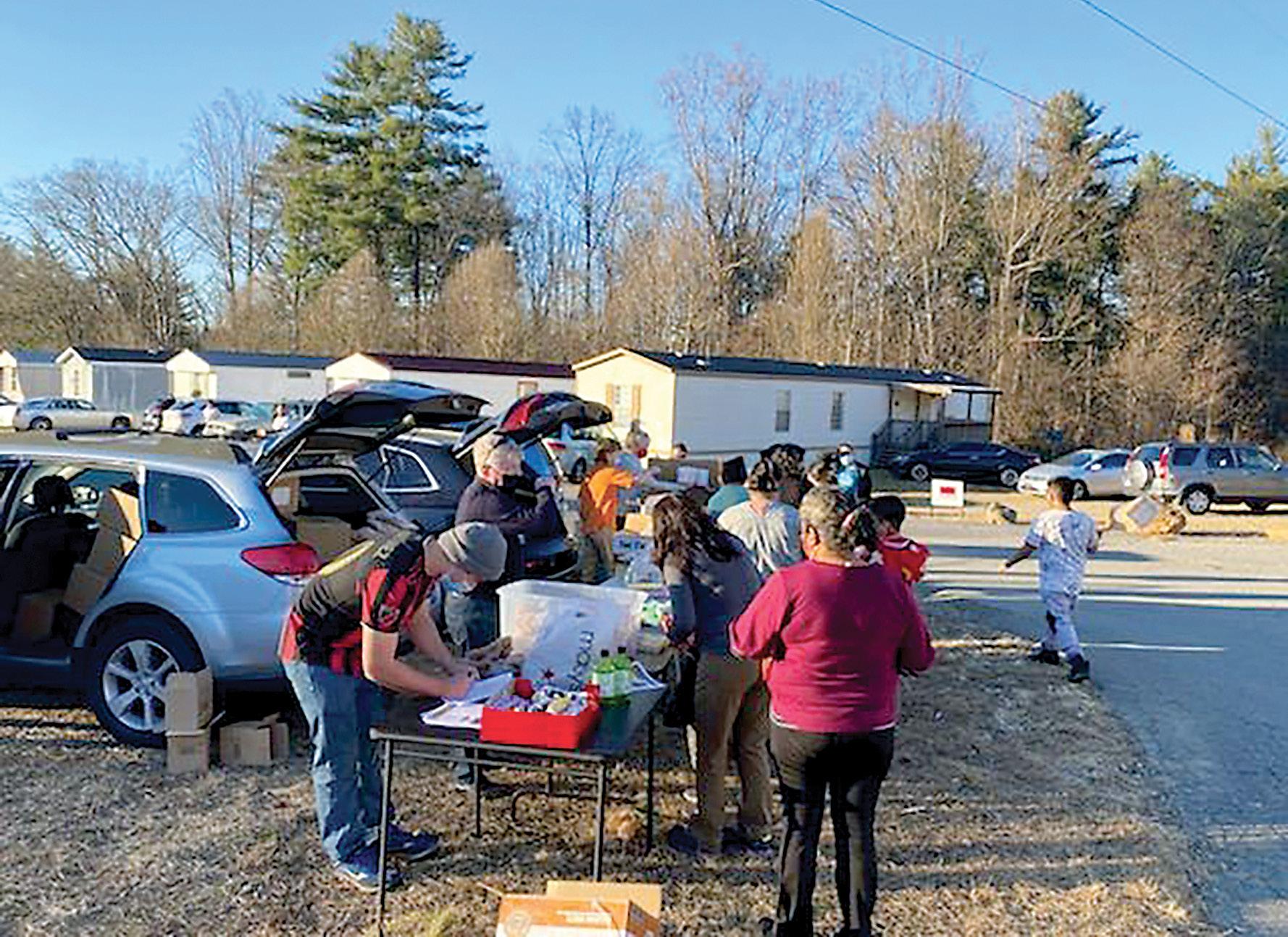
ASHEVILLE — Teamwork truly makes the dream work, especially when that dream is supporting those in need during a time of high inflation.
Fourteen years ago, the Western Region Office of Catholic Charities Diocese of Charlotte began partnering with MANNA FoodBank to supply its weekly food pantry distribution – in a program that dramatically increases its purchasing power and ability to put food on people’s tables.

MANNA (Mountain Area Nutritional Needs Alliance) is a regional food bank that links the food industry with more than 200 partners and human service organizations, such as Catholic Charities, to get food to thousands of families. Thanks to its relationships and network, MANNA can provide food to its distribution partners at reduced prices.
“If someone gives Catholic Charities a can of corn, we’re very grateful they spent a dollar in the store to give us that food. There is value in that experience, especially when you involve your children,” says Jesse Boeckermann, Western Region Office director. “In addition, through our partnership with MANNA, if you give Catholic Charities a dollar, we could buy four cans of corn, so your dollar goes further. It’s amazing.”
MANNA serves 16 counties in western North Carolina. The food bank is a member of the national Feeding America Network and has been in operation since 1983. Its service area overlaps with Catholic Charities’ Western Region Office, which serves people in need in the 12 westernmost counties of North Carolina – making the partnership something like a “one-two punch.”
Each week, Catholic Charities western region food pantry receives between 1,500 and 3,000 pounds of food from MANNA –paying roughly $200 weekly for what amounts to about 90 percent of the food it distributes each Wednesday to more than 100 people. Boeckermann says their costs have been increasing, noting they paid less than $100 for the same amount of food prior to the pandemic and continuing inflation.
“Partnerships like this are so important,” Boeckermann says. “Since COVID, it’s a new world. Inflation is something everybody is feeling when they go to the grocery store. We
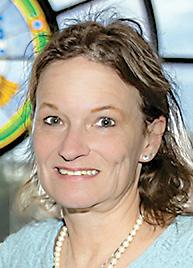
Donations of food and non-food items can be delivered to Catholic Charities’ Western Region Office between 9:30 a.m. and 4 p.m. Monday through Thursday at 50 Orange St. in Asheville. Financial donations can be made securely online at www.ccdoc.org/give and via check made payable to Catholic Charities and mailed to Catholic Charities, 50 Orange St., Asheville, N.C. 28801.
Interested in lending a hand? Volunteers for the monthly MANNA events or weekly food pantry should contact Hilary Kalisch at HRKalisch@ccdoc.org.
couldn’t do what we do without MANNA.” Through this effort, MANNA and Catholic Charities also help families pay for monthly housing expenses, such as mortgages and utilities, by saving them one or two trips to the grocery store, he adds. The organizations work well together for the weekly food pantry distribution and two more monthly events. For the food pantry, which has been operating since 1998, Catholic Charities volunteers pick up the food from MANNA FoodBank
KERNERSVILLE — The Diocese of Charlotte’s annual Family Life Conference offers the faithful a chance to learn more about the Church’s teachings on marriage, family and the sanctity of life and how to apply them in today’s world.
This year’s conference, scheduled for 9 a.m. to 4 p.m. Sept. 30 at Holy Cross Catholic Church in Kernersville, combines powerful speakers with worship and fellowship.
“Every year the conference is different, focused on different aspects of the topics of family life and marriage,” said Jessica Grabowski, director of the Respect Life program for the diocese. “We try to bring in different national speakers each year who focus on topics that are very current.”
The day will start with Mass celebrated by Monsignor Patrick Winslow, vicar general and chancellor for the Diocese of Charlotte.
Two guest speakers this year will present timely topics, considering recent events in a culture that is rapidly becoming more secular and distancing itself from traditional ideas of marriage and family, Grabowski added.
Katy Faust will speak on “Defending Children’s Right to their Mother and Father.”
Faust is founder and president of Them
Before Us, a global movement defending children’s right to a mother and father. The movement promotes a child-centric perspective of marriage and family, and defends the rights of children in daily life and in the courts. Based in Seattle, Faust is an author whose articles have appeared in a wide array of publications including Newsweek, USA Today and The Federalist.
Grabowski noted that one of Faust’s concerns is the effect that in vitro fertilization (IVF) has on the relationship children have with their parents.
Mario A. Sacasa, a licensed marriage and family therapist with a Charlotte practice, will discuss “The Virtue of Hope in Family Life.” Sacasa travels the country lecturing on themes of marriage, relationship, sexuality, hope, and positive psychology, including appearances for the Theology of the Body Institute and the National Catholic Singles Conference. He also hosts the “Always Hope Podcast,” which focuses on helping listeners grow in emotional and spiritual health.
Grabowski said Sacasa’s talk will be useful for those who are seeking “where to find hope in today’s culture,” including ways to discover the hope intrinsic to the Church’s teachings on family life.
Dr. Faith Daggs, a Catholic OB/GYN based in Cary, will discuss “Pro-Life Laws and Women’s Health.” Father Noah Carter, pastor of Holy Cross Church, will offer a talk on “Christian Ordering of the Family.”
There will also be a discussion panel and a Q&A session featuring all the speakers as well as Father Peter Ascik, director of the diocesan Office of Family Life, providing attendees with a chance to more deeply explore themes discussed earlier in the day.
Holy Cross Church is located at 616 South Cherry St. in Kernersville. Registration is required, and the cost of the conference is $20 for students, $30 for adults and $100 for vendors.
For details
At www.charlottediocese.org/2023-family-lifeconference : Register and get more information about the upcoming Family Life Conference.


CHARLOTTE — After several months of planning, St. Thomas Aquinas Parish’s new Perpetual Eucharistic Adoration – continuous exposition of the Blessed Sacrament occurring every hour of every day – began in its chapel Sept. 1. This newest Perpetual Adoration is one of only six available in the diocese, and the second in Charlotte. Father Matthew Codd, pastor, led a procession of the Blessed Sacrament from the

church to the new chapel after the 8 a.m. Mass to inaugurate Perpetual Adoration. Besides Eucharistic Adoration in the chapel, Adoration will occur in the church during Benediction. All other opportunities of exposition will be held in the chapel. For details, call the parish office at 704-549-1607 or go to www.stacharlotte.com.
— Catholic News Herald, photos by Anina Puccio and Tim Flynn
CHARLOTTE — Churches across the Diocese of Charlotte will take up a special collection at weekend Masses Sept. 23-24 to support the diocese’s retired priests.
In a letter to the faithful, Bishop Peter Jugis shared that the 37 retired priests can still be found visiting the sick and imprisoned, praying daily for the people they serve, helping with confessions, and celebrating Mass in parishes throughout the diocese.
“These men remain Shepherds for Life, and now we can respond with gratitude,” he added.
Monsignor Richard Bellow, who turned 80 in August, is one such priest. He is featured in this year’s campaign materials with a photo taken in the prayer garden named in his honor at his former parish, St. Mark Church in Huntersville.
“I told everybody I will not be old until I turn 80,” he says with a laugh. “We had a great celebration with my friends, who I consider my family down here now, and it was a wonderful day.”
Despite entering his self-defined old age, Monsignor Bellow remains active in his ministry, celebrating Mass every Saturday at 4 p.m. for the Catholics at Arbor Ridge in Huntersville, the senior living community he calls home.
He also offers Mass at 10:30 a.m.
Sundays at Williams Place in Davidson and lends a listening ear to those who need it. When residents at Arbor Ridge die, he makes sure to attend the funeral or memorial services for Catholics and non-Catholics alike.
Shortly after his retirement in 2013, he served as dean of students at St. Mark School and decided to retire in earnest in 2018. Since then, he has enjoyed having ample time to celebrate the Eucharist, pray, think and meditate.
“Our most important job as retired priests is to pray every day that we have more vocations because, since we are older, we need younger men to take our places,” he says. “Vocations to the priesthood – that’s the most vital thing we have in the diocese.”
Monsignor Bellow began his ministry as a Franciscan priest in 1970, serving at parishes in New Jersey and upstate New York before serving as director of St. Francis Seminary in Staten Island, N.Y.
Then, in 1987, he made the move to the Diocese of Charlotte to be closer to his ailing mother. His first assignment in the diocese was as pastor of St. John Neumann Church in Charlotte. He later served alongside Father Edward Sheridan at St. Gabriel in Charlotte before becoming pastor at St. Mark, where he helped guide the construction of the current church in 2009.
“When I came down here, they didn’t even have a collection for the retired priests. Now we have one every year
because some of the diocese’s priests are beginning to feel the thing of age,” he says. The diocese needs to raise $1.8 million in this year’s collection for retired priests to stay on track to provide future pension income and supplemental retiree health insurance for the 162 priests serving the Church in western North Carolina.
Parishioner gifts are the primary source of funding, and the annual amount needed is calculated by actuaries factoring in inflation and growth of the diocese’s pension and health trusts. The funds also help support the diocese’s 37 retired priests.
“We still have a task to do as retired priests,” Monsignor Bellow says. “That is to pray every day to continue to bless this stage of our vocation, to bless all those who have taken our place, and to pray in a special way for those who will take not only our place but their place as well.”
Unable to attend Mass the weekend of Sept. 23-24 to make an in-person donation? Your donation can also be made by mail or securely online. You can mail checks to: Priests’ Retirement Fund, Diocese of Charlotte, 1123 S. Church St., Charlotte, N.C., 28203. Online, go to your parish website if it offers online giving or visit www.charlottediocese.org/donate, then click “Priests’ Retirement & Benefits Collection.” Your gift will be credited to your parish.



CHARLOTTE — Charlotte-based TV anchor Sarah French is used to telling stories through her role as a reporter and anchor for WCNC-TV. Recently, however, she turned her storytelling skills to the printed page to help children get back to the Christian origins of a now secularized Christmas holiday.
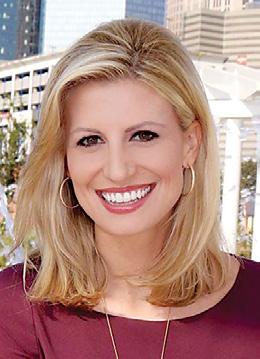
“I was looking for a book for my kids that told the story of Jesus’ birth but also explained the origin of Santa Claus in the very real person who was St. Nicholas, and I couldn’t find one,” French said. “So, I decided to write my own.”
The result is her new, colorful children’s book “A Beautiful Story: Jesus and St. Nick,” which tells the narratives of both Jesus’ birth and the life of St. Nicholas. Born in the third century to a wealthy family, the early Christian bishop became known for his tradition of distributing his family’s wealth through secret gift-giving to the needy, which eventually evolved into the modern secular figure of Santa Claus, or, more

affectionately, “St. Nick.”
“I have two kids and I love history, so I enjoy teaching them about why we celebrate certain holidays and traditions,” French said.
“I was amazed people didn’t realize that St. Nicholas was a real person. I wanted my kids and others to know that the man behind the tradition of Santa Claus was a real follower of Christ.”
She first wrote up the story about two years ago, using a scrapbooking website to create the layout she envisioned for the book.
French eventually got connected with illustrator Robert Sauber, who worked with her to bring her initial visions to life on the printed page.
Released Sept. 12, the book also explores the origins of common holiday traditions such as hanging up stockings and the Dec. 6 feast day of St. Nicholas, which includes the custom of children leaving their shoes outside their doors so the visiting saint can leave gifts in them.
“When I first held the book, I remember thinking that I hope it’s a blessing for the people who read it,” French said. “The heart of the story is both Jesus and St. Nicholas, a man who thought about other
people and gave to other people. My goal is to have my kids show Christ’s love to others – that’s our job as parents – and I hope this book can help teach other kids not only about our traditions, but also a lesson about sharing and giving.”
French’s late grandmother, who passed away in March, was one of her main
inspirations for the book because she was a strong woman of faith who loved Christmas, often keeping her decorations up all year long, French said.
The book is currently available online through Amazon and Barnes & Noble and will soon be on sale at select local bookstores.
‘I wanted my kids and others to know that the man behind the tradition of Santa Claus was a real follower of Christ.’
Sarah French TV anchor and authorFrench



CHARLOTTE — In remembrance of 9/11, students, teachers and faculty of St. Gabriel School held their first allschool flag ceremony, honoring those who lost their lives on that tragic day. The school’s own Cub Scout Pack 174 raised the flag as those in attendance stood saluting the colors. All students were reverent and prayerful during the blessing, read by Deacon Michael Goad, and two poems read by Elizabeth Jenkins and Michele Snoke.
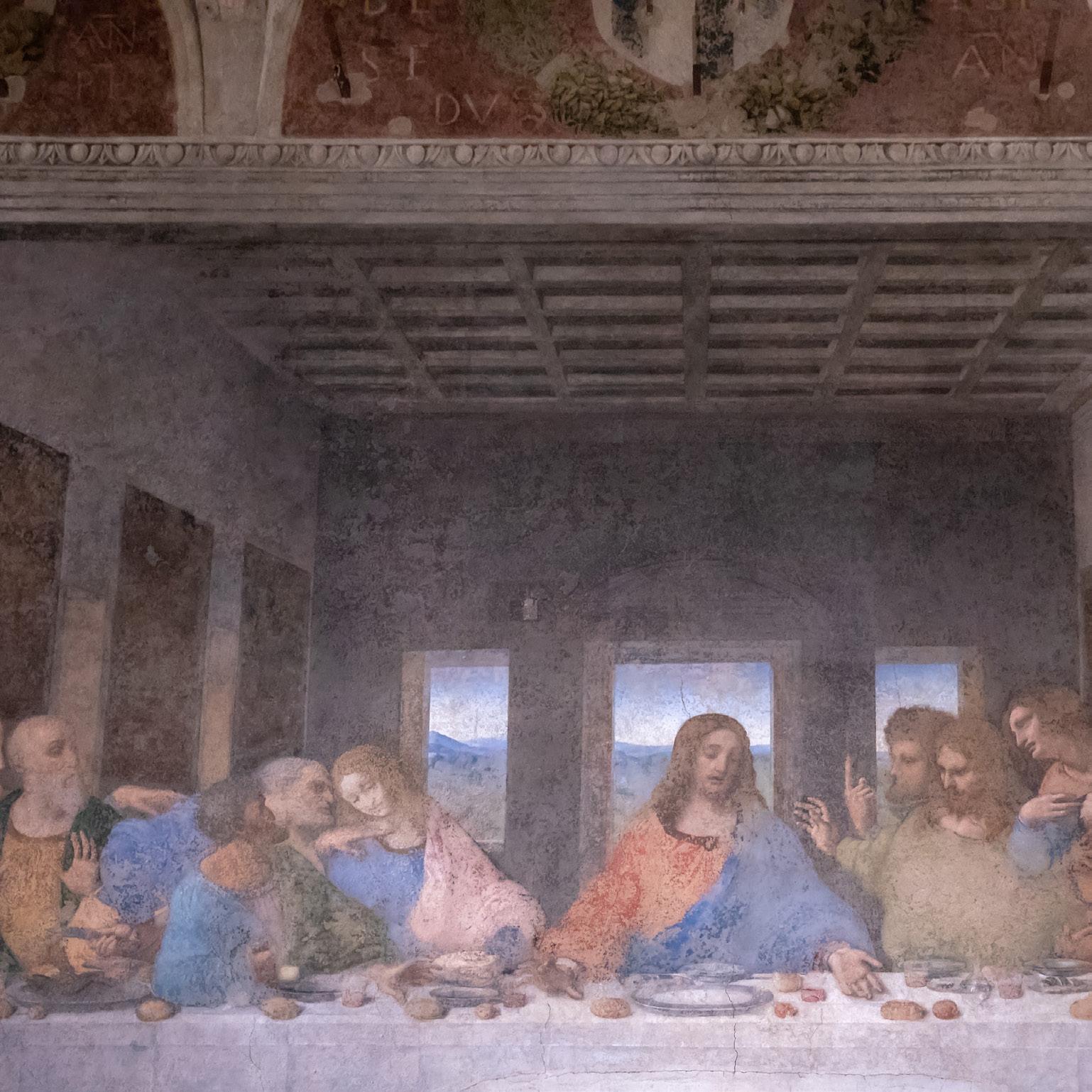
CHARLOTTE — On Sept. 8, students at St. Ann Elementary School celebrated the Feast of the Nativity of the Blessed Virgin Mary in their classes. In addition to the all-school Mass for the feast day, each class brought bouquets of flowers to one of the statues of Mary at the school and parish. They enjoyed special birthday treats in honor of Mary in the afternoon. Students also honored St. Ann, the school’s patron, as the mother of Mary. Other activities for the feast day in various classes included making a donut rosary, Mary’s “birthday trivia,” drawing and coloring pictures of Mary, making birthday gifts for Mary, and devotional walks. Several students were spotted stopping to pray individually as they passed statues of Mary on campus.
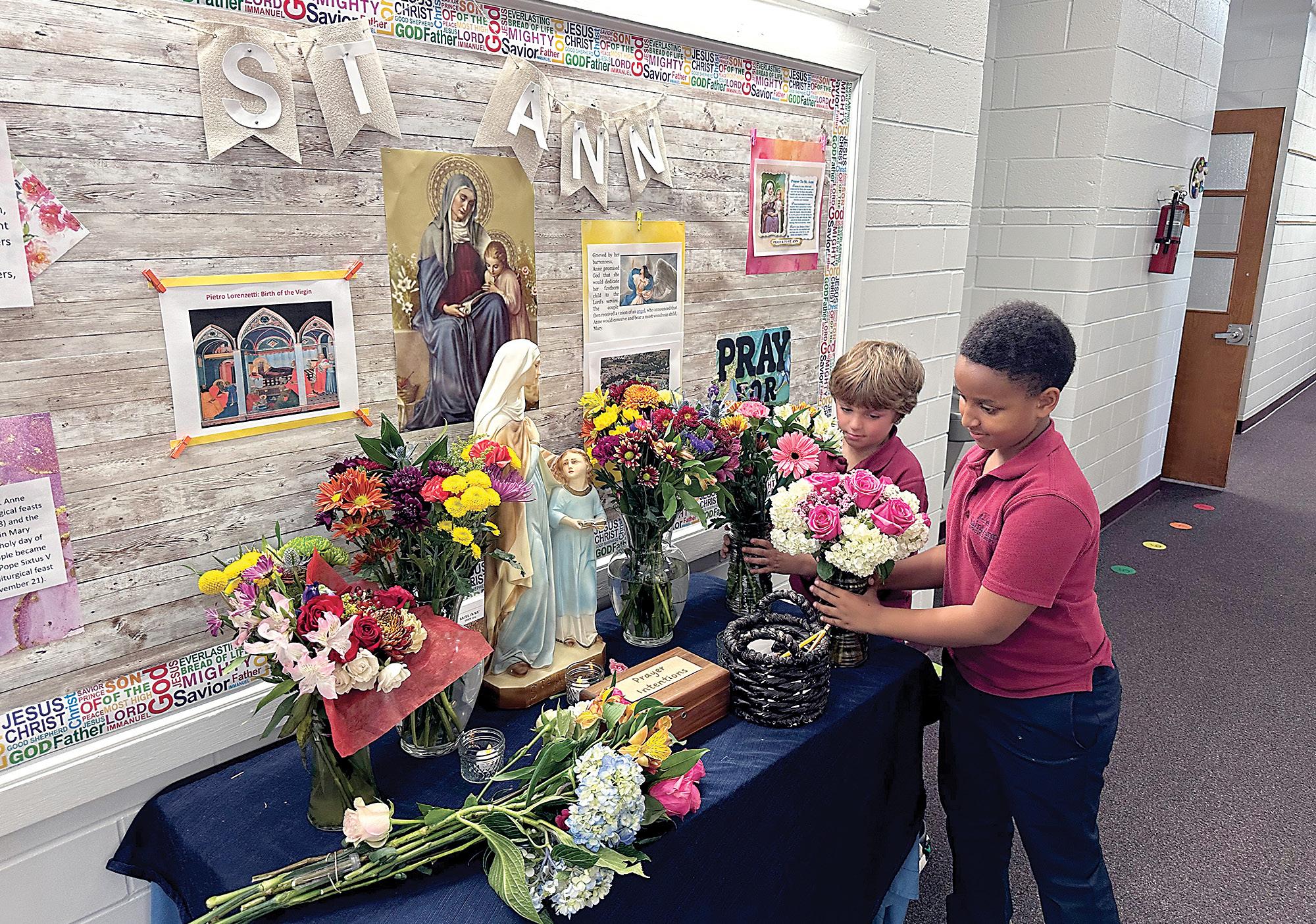
Habiendo concluido hace pocos días el Congreso Eucarístico, no me queda más que expresar mi gratitud a Dios por todas las gracias que derrama sobre todos nosotros. Mi gratitud a nuestro Obispo por ser constante en este evento y saber distinguir lo que verdaderamente importa, es decir, la fe de los fieles que vienen al Congreso año tras año para ser alimentados de una manera muy especial.
Mi gratitud a todos los voluntarios que con profundo amor y gran entusiasmo dan su tiempo, sus talentos y sus tesoros para que este evento se realice. Ellos tendrán un tesoro grande en el cielo.
Mi gratitud a nuestros conferencistas que con tanto cariño se preparan para dar el alimento espiritual a nuestros fieles.
Pero, sobretodo, quiero darle gracias a mi buen Dios por toda esta multitud de fieles que llegaron a adorar al Señor. Ellos son los principales protagonistas, los que hacen posible este evento, a quienes se dirige y se realiza con tanto amor. Ellos son los hijos, los niños de Dios. Ellos hacen eco a las palabras de Cristo: dejen que los niños vengan a mi y no se lo impidan, porque de ellos es el reino de los cielos.
Toda esa piedad que se ve en el congreso, esa alegría santa, esa paz de tanta gente conviviendo con el Señor, solo puede ser fruto de ese Dios que sigue activo entre nosotros.
Recuerdo que hace 19 años, cuando iniciamos el congreso, teníamos un salón hispano que podría acoger 800 personas y de los cuales llegaron alrededor de 600. Hoy es otra realidad, la comunidad latina sigue respondiendo al llamado del Obispo, de sus pastores y sobre todo al gran llamado de Dios a venir, a hacer la prueba y ver lo bueno que es el Señor. Ellos salen muy motivados a seguir viviendo su vida cristiana y con la gran misión de invitar a otros a experimentar esta gran alegría.
Con este pequeño mensaje, animo a todos los que asisten al congreso a que el próximo año inviten a mucha mas gente para que Cristo sea más conocido, más amado, más adorado y se siga extendiendo esta llama de su amor por el mundo.
Gracias por todo.
EL PADRE JULIO C. DOMÍNGUEZ es Vicario Episcopal del Ministerio Hispano.
CÉSAR HURTADO rchurtado@charlottediocese.org
CHARLOTTE — Un importante grupo de integrantes de la Pastoral de Salud y la Pastoral de Duelo del Vicariato de Charlotte asistieron a una sesión de capacitación sobre violencia doméstica programada por Fe y Salud, Coalición Latina, una coalición de organizaciones de fe en la que participa el Ministerio Hispano del Vicariato de Charlotte.
En la jornada, que tuvo lugar en la Iglesia Metodista San Andrés, al sur de Charlotte, participaron como expositoras Stephanie Escobar, defensora de víctimas de la División Especial de Víctimas del Departamento de Policía de Charlotte Mecklenburg (CMPD, por sus siglas en inglés), y María Zuluaga, Supervisora Clínica de los Servicios de Apoyo Comunitario del Condado Mecklenburg.
¿QUÉ ES VIOLENCIA DOMÉSTICA
Según la define la Organización Panamericana de la Salud y la Organización Mundial de la Salud, la violencia en la familia es la agresión física, psicológica o sexual cometida por el esposo, esposa o conviviente, abuelos, padres, hijos, hermanos, parientes civiles u otros familiares. También, comprende a los tutores o encargados de la custodia.
En Estados Unidos, las leyes federales y estatales criminalizan la violencia doméstica y reconocen a todas las víctimas sin importar su raza, color, religión, sexo, edad, entidad, origen o estatus migratorio o de ciudadanía.

En 1994, el Congreso promulgó la Ley de Violencia contra la Mujer (VAWA por sus siglas en ingles), que financia programas contra la agresión sexual y violencia doméstica en todo el país. VAWA se reautorizó en 2022, demostrando el compromiso continuo del gobierno de los Estados Unidos de ayudar a las víctimas de violencia doméstica.
La Comisión del Gobernador de Carolina del Norte contra el Crimen publicó en marzo de este año, una investigación realizada por su Centro de Análisis de Justicia Penal que entrega luces sobre la violencia doméstica y familiar denunciada en el estado. El informe, ‘Revisión del análisis de la justicia: identificación de la violencia doméstica en Carolina del Norte’, revela que durante tres años consecutivos, entre 2019 y 2021, 21.199 incidentes de agresión agravada y homicidio fueron cometidos por una pareja íntima o un familiar actual o anterior. En en mismo plazo, 138.375 denuncias de agresión simple hicieron de este el tipo más común de violencia doméstica y familiar denunciada. Siete de cada diez de las víctimas de violencia doméstica y familiar en 2021 fueron mujeres; y ocho de cada diez de los incidentes de violencia doméstica y familiar en 2021 ocurrieron en una residencia u hogar.
Los asistentes se mostraron sumamente preocupados por la alta
incidencia de este problema en nuestra sociedad.
El Diácono Eduardo Bernal, coordinador del ministerio hispano del vicariato de Charlotte e integrante de la directiva de Fe y Salud, Coalición Latina, dijo que en su labor pastoral, con suma frecuencia, se encuentra con casos de violencia en la familia. “Incluso nuestros líderes, que llevan una vida enfocada en sus familias e iglesias, no están exentos de experimentar este problema”, señaló.
La expositora María Zuluaga advirtió especialmente sobre los efectos de la violencia doméstica en los niños. “No todos los niños muestran efectos de la violencia doméstica en sus vidas”, dijo. “Pero, muchos de ellos, podría decirse en el mayor número de casos, los niños se ven afectados. Ya sea con violencia directa hacia ellos o como efecto de ver a su mamá o papá envueltos en un trato violento”.
La defensora Escobar, dijo que la parroquia Nuestra Señora de Guadalupe en Charlotte, reconociendo la importancia de prevenir la violencia doméstica, ofrece capacitación constante a sus miembros a través de charlas e incluye una conferencia sobre el tema en la formación a las parejas que buscan contraer el sacramento del matrimonio.
María Zuluaga, Supervisora Clínica de los Servicios de Apoyo Comunitario del Condado Mecklenburg, se dirige a los más de veinte participantes en la jornada de capacitación sobre violencia doméstica. Los asistentes son miembros de Fe y Salud Coalición Latina, un ente que reúne a diversas organizaciones de fe de la región de Charlotte, entre ellas nuestra Diócesis de Charlotte.
CÉSAR HURTADO | CATHOLIC NEWS HERALD
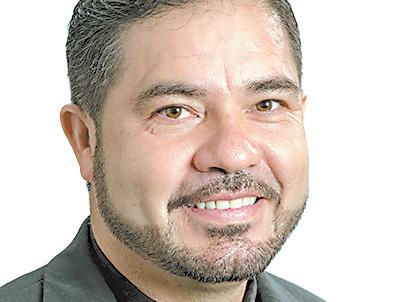
La oficial invitó a otras parroquias a aunarse al esfuerzo preventivo y solicitar la charla para sus parroquianos. “Hablamos de relaciones saludables de pareja y cómo reconocer los signos que delatan la presencia de violencia en la familia”, añadió. CMPD, reconociendo la magnitud del problema, cuenta con una Unidad de Violencia Doméstica compuesta por un sargento, seis detectives y cuatro defensores de víctimas. Los detectives y defensores de víctimas trabajan en un esfuerzo coordinado para utilizar los recursos comunitarios disponibles para ayudar a las víctimas de violencia doméstica a romper el ciclo de abuso.
El Condado Mecklenburg ha publicado una guía de recursos disponibles para las víctimas de violencia doméstica entre las que destacan Línea de Crisis: 980-771-4673; Línea nacional de violencia doméstica: 800-799-7233; Línea nacional para jóvenes en relaciones abusivas: 866-331-9474; Policía/ambulancia: 911; Programa Confianza para adultos/niños: 704-336-3210; Centro de visita supervisada y segura: 980-314-8680. También se cuenta con asistencia en educación para los agresores: 980-314-3991.

SERGIO LÓPEZ selopez@charlottediocese.org
BOONVILLE — El pasado 22 de Julio, durante la visita pastoral del Vicario Episcopal del Ministerio Hispano, Padre Julio César Domínguez, a la vicaría de Winston-Salem, se otorgó el Premio Obispo William G. Curlin de atención pastoral al grupo juvenil Adiodato de la Parroquia Divino Redentor en Boonville. El premio fue entregado de propias manos del Rev. Julio Domínguez a los asesores y coordinadores del grupo, Laura Mendoza, Nazario Serrano y Brenda Salazar, ante la presencia del coordinador del ministerio hispano en ese vicariato. La nominación del grupo juvenil fue hecha por la oficina del Ministerio Hispano Diocesano para la vicaria de WinstonSalem el pasado 12 de mayo de 2023, bajo la supervisión del entonces párroco de Divino Redentor y pastor del mismo grupo juvenil, Rev. Jean Pierre Usumanu Lhoposo. Este premio reconoce a personas, grupos y/o parroquias sobresalientes que ejemplifican los principios del amor de Cristo en el ministerio de la atención pastoral.
En sus bases especifica que el/los candidato/s deben haber respondido a un problema pastoral importante en la parroquia o comunidad con compasión
e integridad; proporcionado apoyo y/o consejo a individuos, familias y/o grupos que se enfrentan a problemas o presiones tales como negligencia, abuso, abuso de sustancias, crisis familiar/comunitaria, etc; y debe estar en actividad en la parroquia.
El grupo juvenil “Adiodato” se formó en 2014 y ha continuado trabajando con los diferentes retos de la evangelización en la juventud, tales como el retiro anual de jóvenes 2014-2022, llegando en estos últimos nueve años a 700 jóvenes de la comunidad y zonas aledañas.
Además ha realizado retiros de preparación para Cuaresma y Adviento y apoyado en diferentes eventos parroquiales.
El grupo juvenil actualmente acompaña y asesora a los jóvenes con temas de relevancia en la sociedad, promoviendo conversatorios sobre el abuso de sustancias, la Teología del Cuerpo, y dialogando con ellos sobre la presión académica, social y religiosa en diferentes ambientes escolares. Hay que resaltar que la mayoría de los jóvenes asisten a escuelas públicas donde hay mucha desinformación y presión hacia la espiritualidad católica.
El grupo de jóvenes ‘Adiodato’ también ha podido proyectar cómo involucrar a los jóvenes en diferentes aspectos de la participación en la iglesia, tales como arte y cultura, ya que tuvieron un grupo de
danza folclórica. Adicionalmente, cada año preparan carteles y pancartas para la procesión del Congreso Eucarístico, y varios jóvenes participan en el coro músical.
Los líderes del grupo juvenil han llevado a los jóvenes a diferentes actividades diocesanas, incluyendo la peregrinación del Obispo y la celebración del 50 Aniversario de la Diócesis.
De otra parte, el grupo juvenil ‘Adiodato’ ha ayudado a otros grupos juveniles en el vicariato de Winston-Salem, asistiendo en la organización de sus retiros juveniles, especialmente para los jóvenes que están en clases en confirmación o que acaban de realizar su confirmación, y como continuación de su educación en la fe, con la esperanza de que estos jóvenes fortalezcan su fe, permanezcan practicándola, sigan enamorándose de ella y continúen esos ciclos. Siempre bajo el lema ‘Jóvenes, evangelizando jóvenes’.
El jóven matrimonio de Nazario Serrano y Brenda Salazar, como ya dijimos, dos de los coordinadores de ‘Adiodato’, es uno de los frutos vocacionales de dicho grupo, ya que ellos comenzaron en el proyecto desde el día uno y hoy en día se han convertido en guías del grupo juvenil.
Quizás ustedes, estimados lectores, piensen: ¡Pero esto es lo que hacen nuestros grupos juveniles también! Por ello quiero
invitarlos a que el año entrante nominen a sus grupos juveniles. Si no saben como hacerlo, acérquense a sus coordinadores de ministerio hispano.
Deseo cerrar este artículo dando un mensaje a todos los asesores y coordinadores juveniles que están batallando en sus parroquias o en sus grupos. Quiero decirles que no están echando su trabajo por la borda. Nunca piensen que lo que hacen no tendrá frutos por que eso no es verdad. Tienen que ser fuertes, y como Moisés (Deuteronomio 32:49-52), aceptar que quizás no podrán ver los frutos, pero tarde o temprano vendrán. No están solos, acérquense a sus coordinadores diocesanos.
En esta área, donde la misión de la recordada Hermana Andrea Inkrott fue extensa, se sembraron semillas de fe que no surgieron hasta después. En algún momento comprendí que su trabajo, su semilla, no cayo en terreno infértil, porque a nosotros nos tocó ver los frutos y la cosecha sigue creciendo en ustedes, los asesores y coordinadores.
¿Quieren saber algo más? Yo nunca conocí personalmente a la hermana. Sin embargo, creo firmemente que cargamos su semilla en nuestros hombros, y asimismo, todo ese trabajo que llevaron a cabo los que comenzaron esta misión, entre ellos el Obispo William G. Curlin.
La Antorcha Guadalupana partió el pasado sábado 2 de septiembre a las 6 de la mañana de la Basílica Nuestra Señora de Guadalupe. La carrera de postas que recorre territorio mexicano y estadounidense, debe llegar el 12 de diciembre al Parque Central en Nueva York, donde es esperada por una multitud en el día central de celebración de la Morenita del Tepeyac. Hasta el momento no se conoce la fecha precisa en que recorrerá nuestro territorio diocesano, ni tampoco las parroquias que visitará llevando la luz de la esperanza y fe de los migrantes divididos por una frontera común. En la gráfica, la comitiva que lleva la antorcha y las imágenes de San Juan Diego y la Santa María de Guadalupe arriba a la parroquia de Guadalupe en Charlotte en 2022.
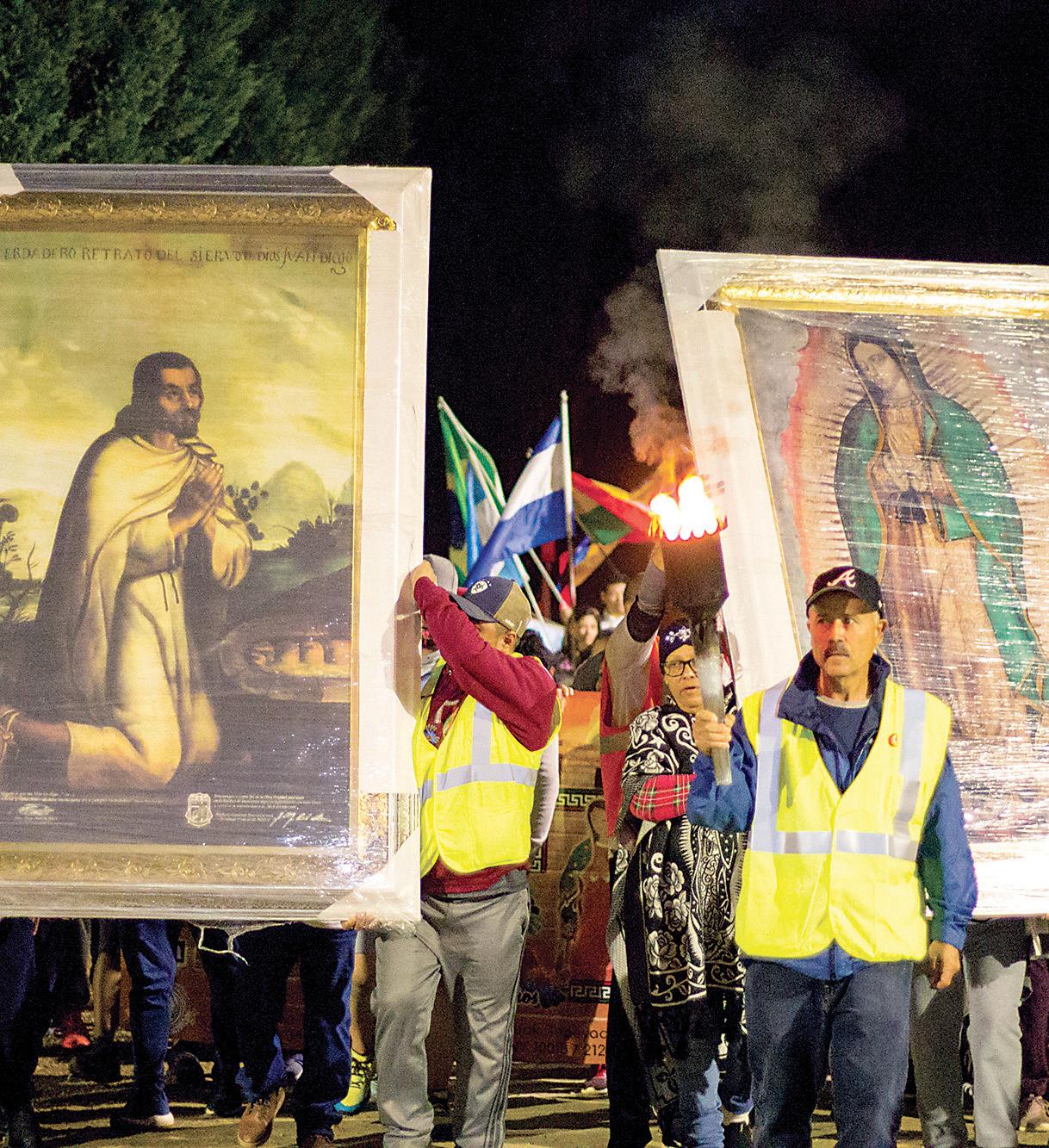
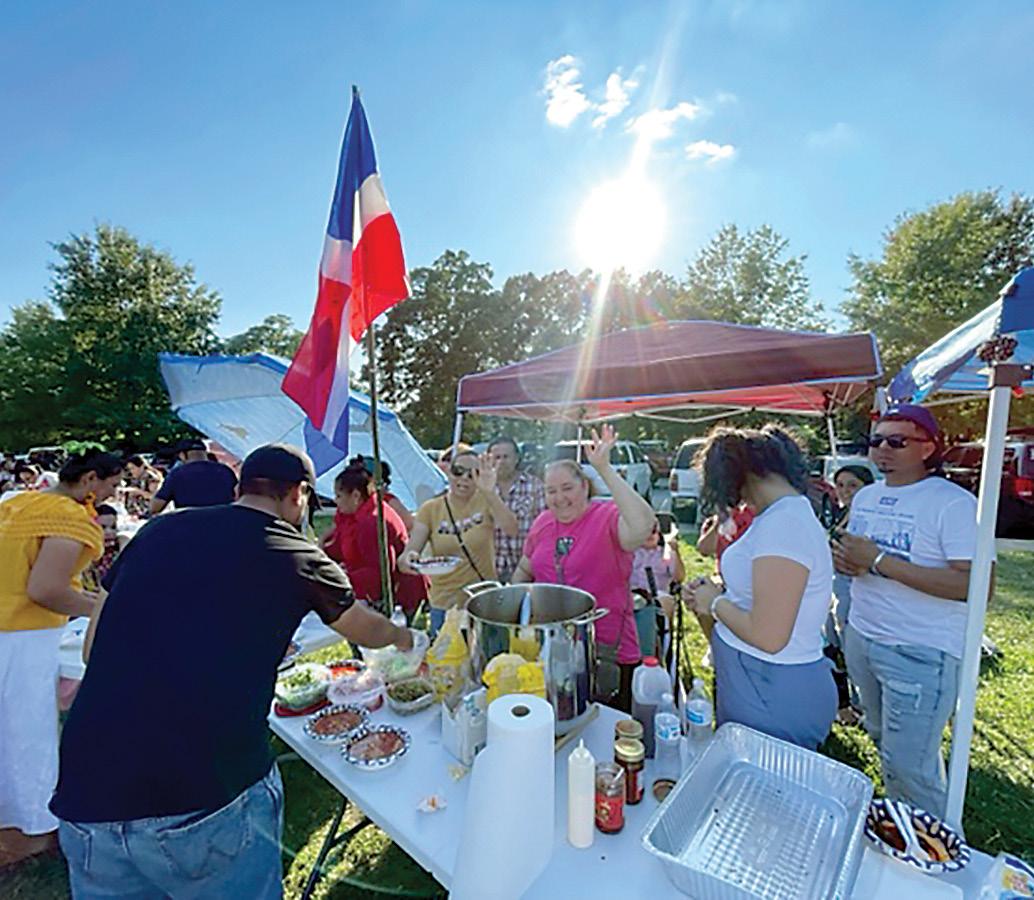
GREENSBORO — Por primera vez se celebró en la Iglesia Santa María una fiesta para celebrar la Hispanidad el pasado domingo 3 de septiembre. El evento fue organizado por vicario parroquial, Padre Eric Sánchez C.M y participaron en la actividad los líderes de los diferentes ministerios, en conjunto con voluntarios de la comunidad. Inició con una Santa Misa concelebrada por el párroco, John Timlin y los vicarios, Padre Joseph Nguyen y Padre Eric Sánchez, a cargo de la comunidad Vietnamita e Hispana, respectivamente. El propósito de la celebración fue recordar las raíces hispanas y conocer las diferentes nacionalidades hispanas que concurren a la parroquia y alrededores. “Fue una experiencia maravillosa el poder recordar nuestras raíces, ver el folclor y disfrutar de la gastronomía latina presente en nuestra comunidad de Santa María. Definitivamente fue un evento que me recordó el amor que le tengo a mi tierra natal Costa Rica, dijo Evelyn Bermúdez, parroquiana.
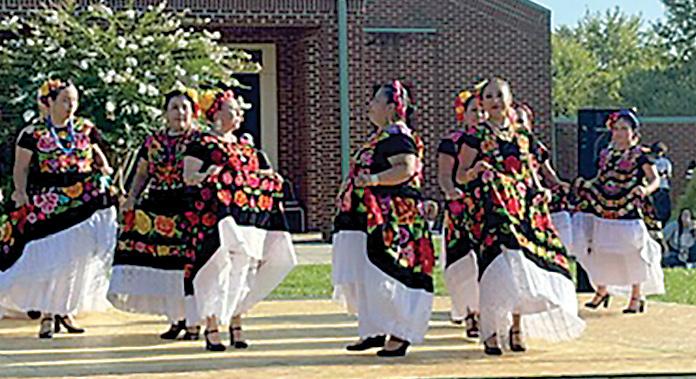
SEPTIEMBRE 17-23
Domingo: Eclesiastés 27:33–28:9, Romanos 14:7-9, Mateo 18:21-35; Lunes: 1
Timoteo 2:1-8, Lucas 7:1-10; Martes (San
Genaro Obispo y mártir): 1 Timoteo 3:1-13, Lucas 7:11-17; Miércoles (San Andres
Kim Taegon, presbítero, y San Pablo
Chong Hasang y compañeros, mártires):
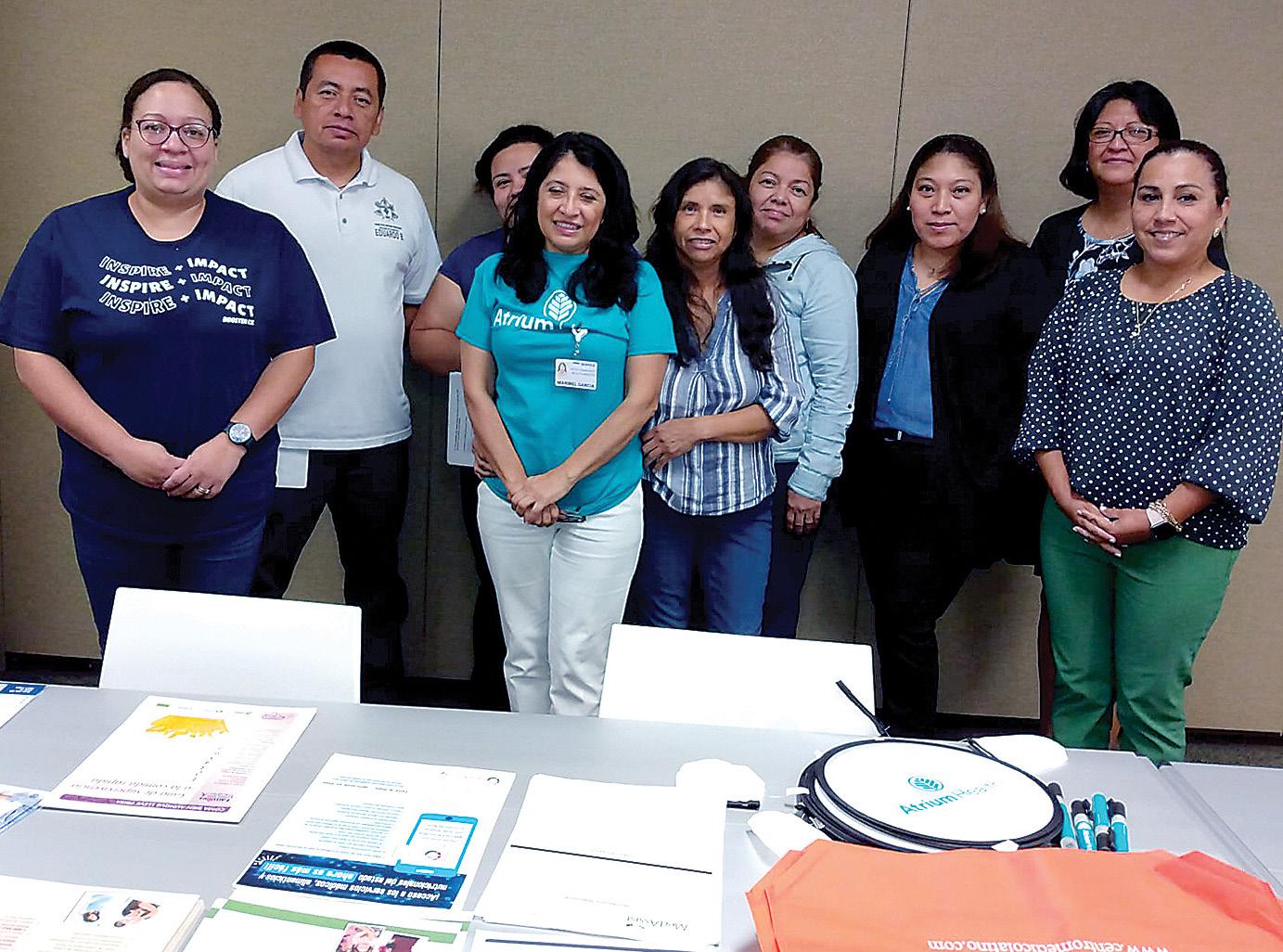
1 Timoteo 3:14-16, Lucas 7:31-35; Jueves (Fiesta de San Mateo, Apóstol y evangelista): Efesios 4:1-7, 11-13, Mateo
9:9-13; Viernes: 1 Timoteo 6:2-12, Lucas
8:1-3; Sábado (San Pio de Pietrelcina): 1
Timoteo 6:13-16, Lucas 8:4-15
SEPTIEMBRE 24-30
Domingo: Isaías 55:6-9, Filipenses 1:2024, 27, Mateo 20:1-16; Lunes: Esdras 1:1-6, Lucas 8:16-18; Martes (Santos Cosme y Damián, mártires): Esdras 6:7-8. 12, 1420, Lucas 8:19-21; Miércoles (San Vicente de Paúl, presbítero): Esdras 9:5-9, Lucas 9:1-6; Jueves (Santos Wenceslao y Lorenzo Ruiz): Hageo 1:1-8, Lucas
9:7-9; Viernes (Fiesta de los santos
Arcángeles Miguel, Gabriel y Rafael):
Daniel 7:9-10, 13-14, Juan 1:47-51; Sábado (San Jerónimo, presbítero): Zacarías 2:59, 14-15, Lucas 9:43-45
OCTUBRE 1-7
Domingo: Ezequiel 18:25-28, Filipenses 2:1-11, Mateo 21:28-32; Lunes (Memoria de los Santos Ángeles
Custodios): Zacarías 8:1-8, Mateo 18:1-5,
10; Martes: Zacarías 8:20-23, Lucas
9:51-56; Miércoles (San Francisco de Asís): Nehemías 2:1-8, Lucas 9:57-
62; Jueves (Beato Francisco Javier Seelos y Santa Faustina Kowalska):
Nehemías 8:1-4, 5-6, 8-12, Lucas 10:1-

12; Viernes (San Bruno, Beata María
Rosa Durocher): Baruch 1:15-22, Lucas
10:13-16; Sábado (Nuestra Señora del Rosario): Baruch 4:5-12, 27-29, Lucas
10:17-24

CHARLOTTE — Durante una reunión del liderazgo de la Pastoral de Salud del vicariato de Charlotte, realizada el pasado martes 5 de septiembre en el Centro Pastoral de la Diocesano, las coordinadoras de cinco diferentes parroquias rindieron un informe de actividades y programaron las venideras, comentó el Diácono Eduardo Bernal, coordinador del ministerio hispano de este vicariato y motor de esta pastoral. “Hemos realizado dos ferias de salud recientemente, una en la parroquia Nuestra Señora de Guadalupe y otra en la parroquia Nuestra Señora de la Asunción, ambas con una gran participación de la comunidad”, dijo. A fines de este mes, adelantó, se llevará a cabo una capacitación en prevención de salud mental dirigida a las coordinadoras y promotoras. Ya son ocho son las parroquias del vicariato de Charlotte que participan en este servicio al pueblo de Dios. La Pastoral de Salud, aparte de sus actividades, forma parte de Fe y Salud Coalición Latina, un esfuerzo de las organizaciones de fe de la región de Charlotte por la salud de los feligreses.

FOTO PROPORCIONADA
CONCORD — Se espera que decenas de jóvenes participen en el próximo retiro juvenil que se realizará en la parroquia Santiago el Mayor el 30 de septiembre de 9 de la mañana a 5 de la tarde. Según informó Ibis Centeno, coordinadora del ministerio hispano del vicariato de Salisbury, el encuentro de jóvenes será presentado por el grupo juvenil Adeodato de Boonville y tendrá como orador principal a Gustavo Mejía, psicólogo y profesor de SEPI, que hablará en la sesión en español sobre Antropología Cristiana y la Teología del Cuerpo que desarrolló el Papa San Juan Pablo II. El retiro es bilingüe y dirigido a jóvenes entre 13 y 17 años de edad. Las sesiones en inglés serán presentadas por Emmanuel Arias, misionero nacional e internacional que trabaja en Juventud con Net, Beatitude Missions y el Comité Juvenil Rise Up para el Día Mundial de la Juventud. Para informes e inscripciones, contacte con Gustavo Gallo al teléfono 704-720-0600 extensión 720.
FOTO ARCHIVO
Cada 23 de septiembre la Iglesia Católica celebra a San Pio de Pietrelcina, fraile y sacerdote de la Orden de los Hermanos Menores Capuchinos (O.F.M. Cap.), a quien afectuosamente el mundo sigue llamando ‘Padre Pio’.
Este franciscano italiano recibió los estigmas de Cristo, quien quiso asociarlo de manera especial a su Pasión. Semejante don supera toda explicación científica o cálculo humano.
Probablemente, solo sea posible acercarse un poco a este misterio a través de las palabras del propio santo: “Oh Jesús, mi suspiro y mi vida, te pido que hagas de mí un sacerdote santo y una víctima perfecta” (San Pío de Pietrelcina).
A los cinco años tuvo una primera visión de Cristo, quien se le presentó como el Sagrado Corazón de Jesús. El Señor, entonces, posó su mano tiernamente sobre su cabeza. En respuesta, le prometió que
Otro de los dones del Padre Pío fue su extraordinaria capacidad para entender el alma humana, al punto que podía leer los corazones y las conciencias de quienes se le acercaban. Esa capacidad para penetrar y desnudar el interior oculto, lo ayudó a ser un confesor único.
Así como el Padre Pío recibió los estigmas de Jesucristo en las manos, los pies y el costado, así se hizo célebre por haber obrado milagros en vida y por los dones extraordinarios que Dios le concedió conforme a su providencia.
El Padre Pío, asimismo, fue un hombre preocupado por los más necesitados. El 9 de enero de 1940 convenció a sus grandes amigos espirituales para fundar un hospital. Uno que sirva para sanar los “cuerpos y también las almas” de la gente necesitada de su región. “Casa Alivio del Sufrimiento” se inauguró el 5 de mayo de 1956.
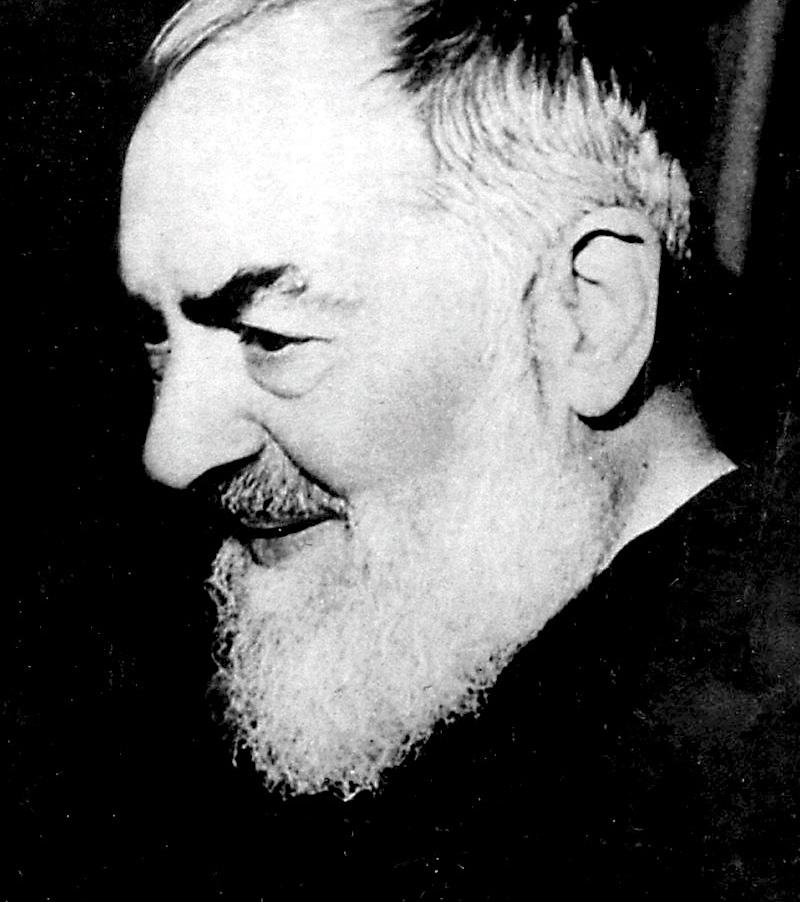
El Padre Pio aparece en esta foto tomada en una fecha no determinada. El Papa San Juan Pablo II beatificó al fraile capuchino italiano el 2 de mayo de 1999 y canonizó el 16 de junio de 2002. El sacerdote, conocido muldialmente por su santidad y experiencia mística de la fe, falleció en 1968.
sería su servidor siguiendo las huellas de San Francisco de Asís. Desde aquel instante, el futuro fraile cultivaría una estrechísima relación con Jesús y su Madre, la Virgen María. Ella también se le aparecería en distintos momentos a lo largo de su vida.
Cumplidos los 15 años, se presentó para ser admitido en el convento franciscano de Morcone. En ese lugar vivió años muy intensos, marcados por repetidas visiones del Señor, en las que le mostraba las luchas que tendría que librar contra el demonio el resto de sus días. El 10 de agosto de 1910, el entonces Fray Pío sería ordenado sacerdote.
Poco después, el Padre Pío enfermó de fiebres y dolores muy fuertes, los que obligaron a sus superiores en Morcone a enviarlo a Pietrelcina para su recuperación. Años más tarde, en 1916, Pío sería trasladado al monasterio de San Giovanni Rotondo. El Padre Provincial, al ver que su salud había mejorado, le manda permanecer en ese convento, tras cuyas paredes recibió la gracia de los estigmas.
El Padre Pío fue fundamentalmente un santo de lo “ordinario”. Era un hombre como cualquiera, con defectos y fragilidades. Entonces, ¿dónde estuvo la diferencia?: el Padre Pío solo quiso responder al amor de Dios con amor.
No son pocos los testimonios que señalan que fue el fraile franciscano quien, en confesión, le predijo a Karol Wojtyla que llegaría a ser Papa.
De acuerdo a una carta enviada por el Papa Peregrino a los frailes de San Giovanni Rotondo unos tres años antes de morir (2002), cuando aún era un joven sacerdote, conoció al Padre Pio y se confesó con él.
El contenido de la carta se hizo público – de acuerdo a la voluntad del Pontífice –luego de su muerte en 2005. En ella, Juan Pablo II llamaba al Padre Pío “generoso dispensador de la gracia divina, siempre a disposición de todos”.
Esto en contraposición a ciertos círculos en los que se afirmaba que era un confesor excesivamente riguroso, que trataba con dureza a los peregrinos. Claro está que éstos siempre regresaban y convocaban a otros. Gracias al santo muchos se hicieron más conscientes de la gravedad de su pecado, y, por eso, se mostraban genuinamente arrepentidos.
El Padre Pío partió a la Casa del Padre el 23 de septiembre de 1968, después de varias horas de agonía, repitiendo con voz débil “¡Jesús, María!”.
Durante la ceremonia de su canonización, celebrada el 16 de junio de 2002, San Juan Pablo II afirmó: “Oración
y caridad, esta es una síntesis sumamente concreta de la enseñanza del Padre Pío, que
hoy vuelve a proponerse a todos”.
— Condensado de ACI Prensa
Friday, September 29th, 6pm – 11pm

Saturday, September 30th, 2pm – 10pm

St. John Neumann Catholic Church
8451 Idlewild Road Charlotte, North Carolina 28227 Friends, Family
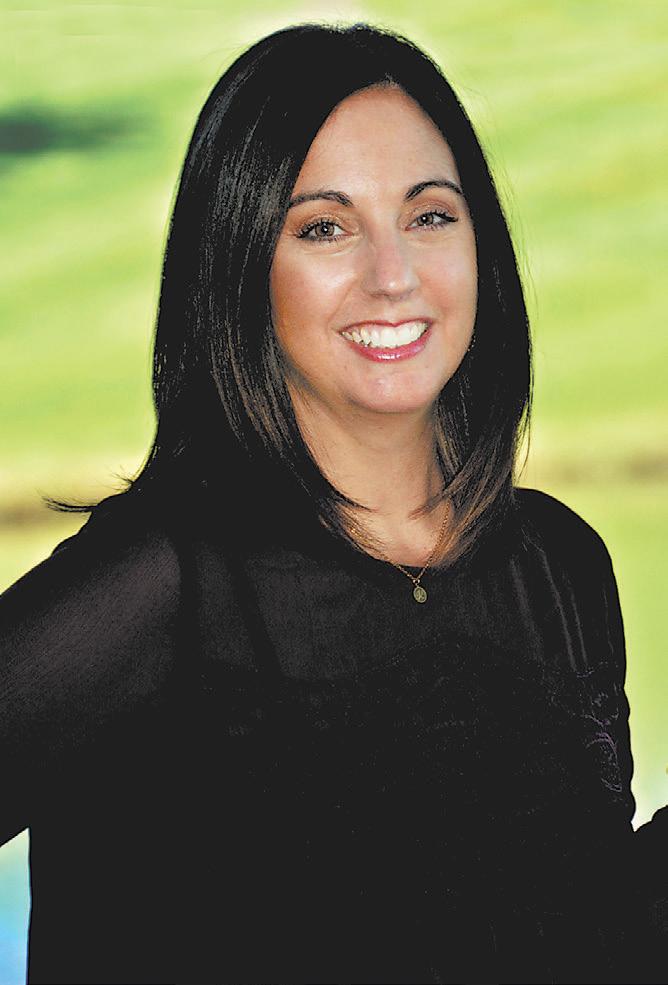
CATHOLIC NEWS HERALD STAFF
CHARLOTTE — With a standing-room-only crowd of nearly 10,000 in attendance, Bishop Peter Jugis challenged Catholics from across the Diocese of Charlotte to “deepen your relationship with Jesus” by spending more time visiting with Him at church and beyond.
Bishop Jugis reminded the faithful gathered for the 19th annual Eucharistic Congress of the Lord’s promise that “I am always with you,” taken from the Gospel of Matthew as the theme of this year’s Congress, held Sept. 8-9 at the Charlotte Convention Center.
“He is with us in the sacraments” – when you are baptized, confessing your sins, attending Mass – and in so many other ways, the bishop said. “Jesus says that He is with you always, meaning that it is a forever promise to be with you. You are always the object of His love, at any time of day, through all the hours of the night, through all the days of your life.”
“He is especially with us in a totally unique way in the Holy Eucharist,” the bishop said, and he challenged the faithful to take notice – by going to church, Eucharistic
Adoration or Mass besides weekly Sunday Mass.
“You are probably very busy, as most people are nowadays. But there is someone waiting for you at church, in the tabernacle,” the bishop said. “And I do say SomeOne, not some-thing. It is the Lord Jesus who is waiting for you. Don’t you need to visit someone who loves you?”
The bishop’s message brought to a conclusion the diocese’s “family reunion” that featured two days of faith, fellowship and festivities – including dramatic testimony from two priests imprisoned in Nicaragua and a procession that drew approximately 8,000 people to walk and proclaim their faith through the streets of uptown Charlotte.

From Greensboro to Asheville, the faithful filed onto buses before dawn Sept. 9 to make the trek to the diocese’s signature celebration. Dressed in colorful T-shirts, traditional garb or uniforms, they carried banners representing more than 81 parishes, with children, grandparents, friends and fellow parishioners in tow. At 9 a.m., servers rang altar bells as the bishop carried the Blessed Sacrament out of St. Peter Church onto Tryon
Bishop Jugis reminded the faithful gathered for the 19th annual Eucharistic Congress of the Lord’s promise that “I am always with you,” taken from the Gospel of Matthew as the theme of this year’s Congress, held Sept. 8-9 at the Charlotte Convention Center.

Street. On their knees, people lined the streets as the Blessed Sacrament passed, then fell in line to follow Jesus.
The procession covered almost a mile and included dozens of clergy, men and women religious, and people of all ages and backgrounds, some walking in silence while others strolled behind parish banners, singing, dancing, playing music and praying the rosary.
After 75 minutes, the last of the procession filed through the elephant doors into the cavernous Charlotte Convention Center, past vendors sharing information and selling religious art, crucifixes, and T-shirts bearing slogans such as “Got Mary?”
During the Holy Hour that followed, Father Matthew Kauth urged people to be open to the presence of God in their lives, and he noted how the Eucharistic Congress helps cultivate sensitivity to God.
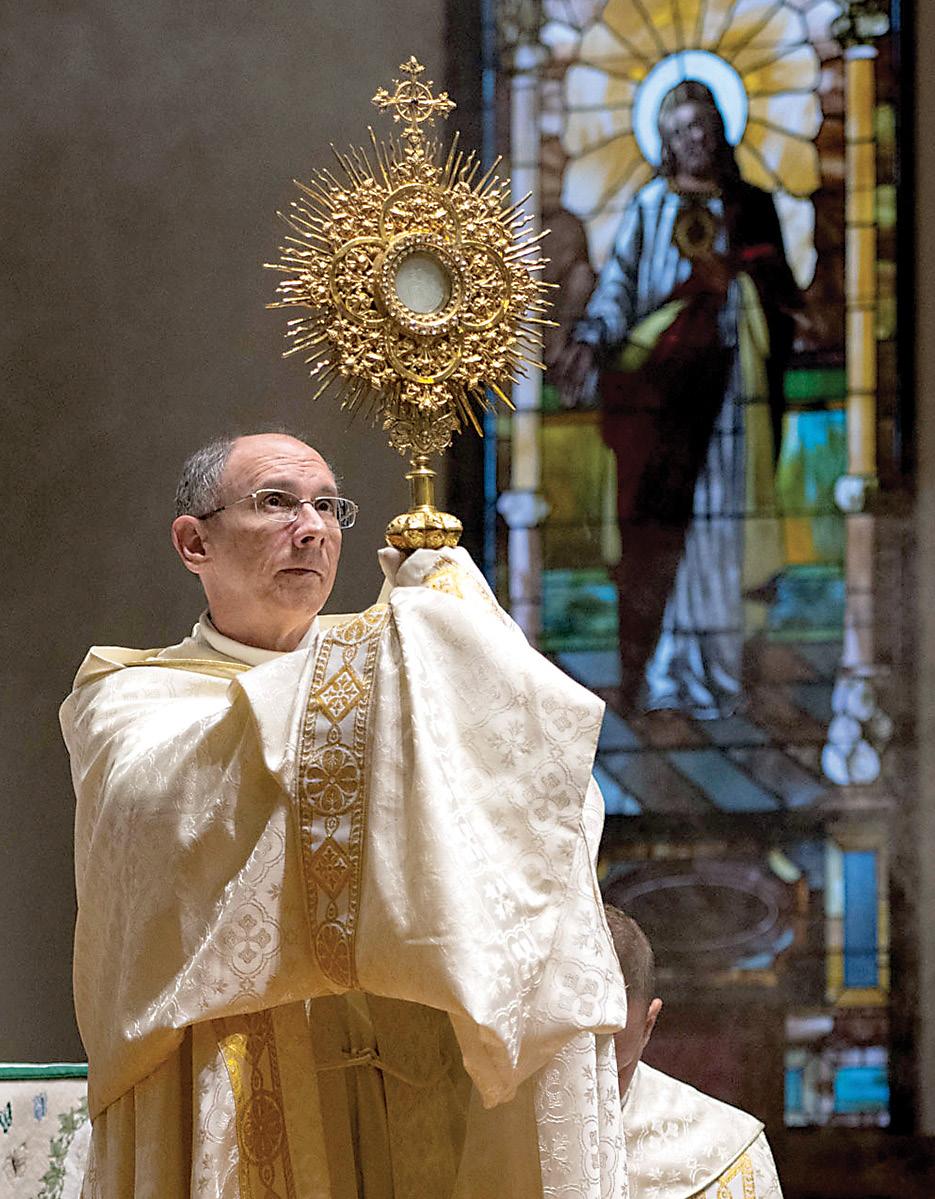
“We walked the streets with the Body of Christ. We worship Him because we know Him. We are sensitive to His Eucharistic Presence, and we love Him,” said Father Kauth, rector of St. Joseph College Seminary in Mount
ALWAYS, SEE PAGE 21
CHARLOTTE — Ante un auditorio de casi 10.000 personas, el Obispo Peter Jugis desafió a los católicos de toda la Diócesis de Charlotte a “profundizar su relación con Jesús” pasando más tiempo visitándolo en la iglesia y la Adoración. El Obispo Jugis recordó a los fieles reunidos en el XIX Congreso Eucarístico anual la promesa del Señor de estar con nosotros todos los días, tomada del Evangelio de Mateo como tema del Congreso de este año, celebrado el 8 y 9 de septiembre en el Centro de Convenciones de Charlotte.
“Él está con nosotros en los sacramentos”, cuando nos bautizamos, confesamos nuestros pecados, asistimos a Misa, y de muchas otras maneras, dijo el obispo. “Jesús dice que Él está con nosotros siempre, lo que significa que es una promesa de siempre estar con nosotros. Siempre somos el objeto de Su amor, a cualquier hora del día, a través de todas las horas de la noche, a través de todos los días de nuestra vida”.
“Él está especialmente con nosotros de una manera totalmente única en la Sagrada Eucaristía”, dijo el obispo, y desafió a los fieles a tomar nota, yendo a la iglesia, a la Adoración Eucarística o a Misa, además de la misa
dominical semanal.
“Probablemente estén muy ocupados, como la mayoría de la gente hoy en día. Pero hay alguien esperándolos en la Iglesia, en el tabernáculo”, dijo el obispo. “Y digo Alguien, no algo. Es el Señor Jesús quien los está esperando. ¿No necesitan visitar a alguien que los ama?”
El mensaje del obispo concluyó la “reunión familiar” de la diócesis que contó con dos días de fe, compañerismo y festividades, incluido el dramático testimonio de dos sacerdotes encarcelados en Nicaragua y una procesión que atrajo a aproximadamente 8,000 personas para caminar y proclamar su fe por las calles del Uptown de Charlotte.
Desde Greensboro hasta Asheville, los fieles subieron a autobuses antes del amanecer del 9 de septiembre para hacer el viaje a la celebración de la diócesis. Vestidos con camisetas coloridas, atuendos tradicionales o uniformes, llevaban pancartas que representaban a más de 81 parroquias, con niños, abuelos, amigos y feligreses a cuestas.
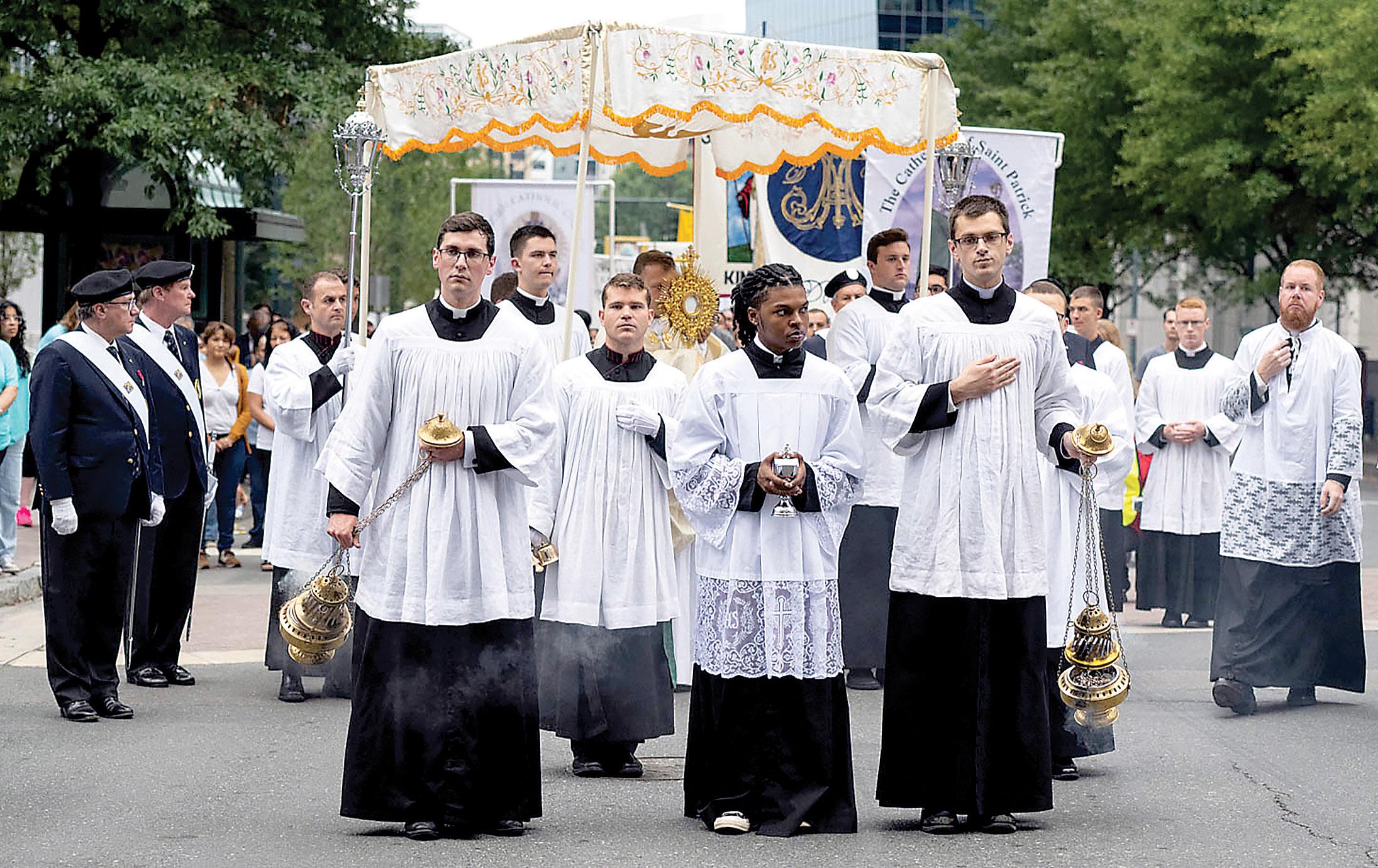
A las 9 de la mañana sonaron las campanillas, mientras el obispo llevaba el Santísimo Sacramento desde la Iglesia
San Pedro a la calle Tryon. De rodillas, la gente esperó en las calles el paso del Santísimo Sacramento, para luego unirse a la procesión que seguía a Jesús.
La procesión cubrió casi una milla e incluyó a docenas de clérigos, religiosos, religiosas y personas de todas las edades y orígenes, algunos caminando en silencio, mientras otros iban detrás de pancartas parroquiales, cantando, bailando, tocando música y rezando el rosario.
Después de 75 minutos, el último participante de la procesión atravesó las gigantescas puertas del Centro de Convenciones de Charlotte, pasando por puestos que compartían información y vendían arte religioso, crucifijos y camisetas con lemas como “¿Tienes a María?”.
Durante la Hora Santa que siguió, el Padre Matthew Kauth instó a las personas a estar abiertas a la presencia de Dios en sus vidas, y señaló la forma en que el Congreso Eucarístico ayuda a cultivar la sensibilidad a Dios. “Caminamos por las calles con el Cuerpo de Cristo. Lo adoramos porque lo conocemos. Somos sensibles a Su Presencia Eucarística y lo amamos”, dijo el Padre Kauth, JESÚS, PASA A LA PÁGINA 21
During the diocese’s annual uptown Charlotte. The procession danced, prayed, sang and carried the Blessed Sacrament passed by, then
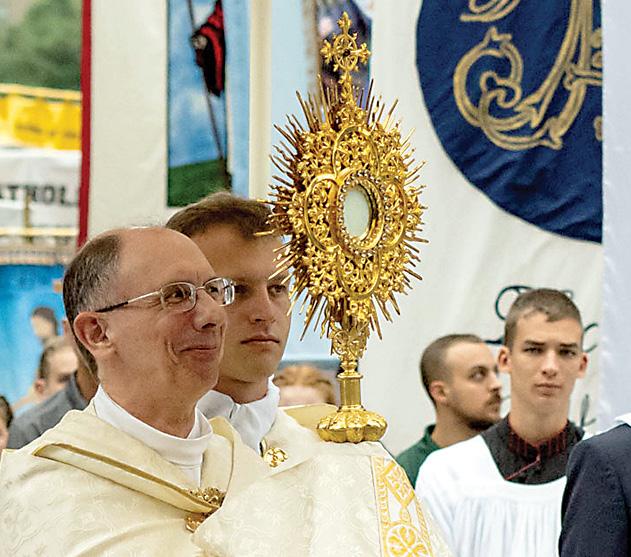
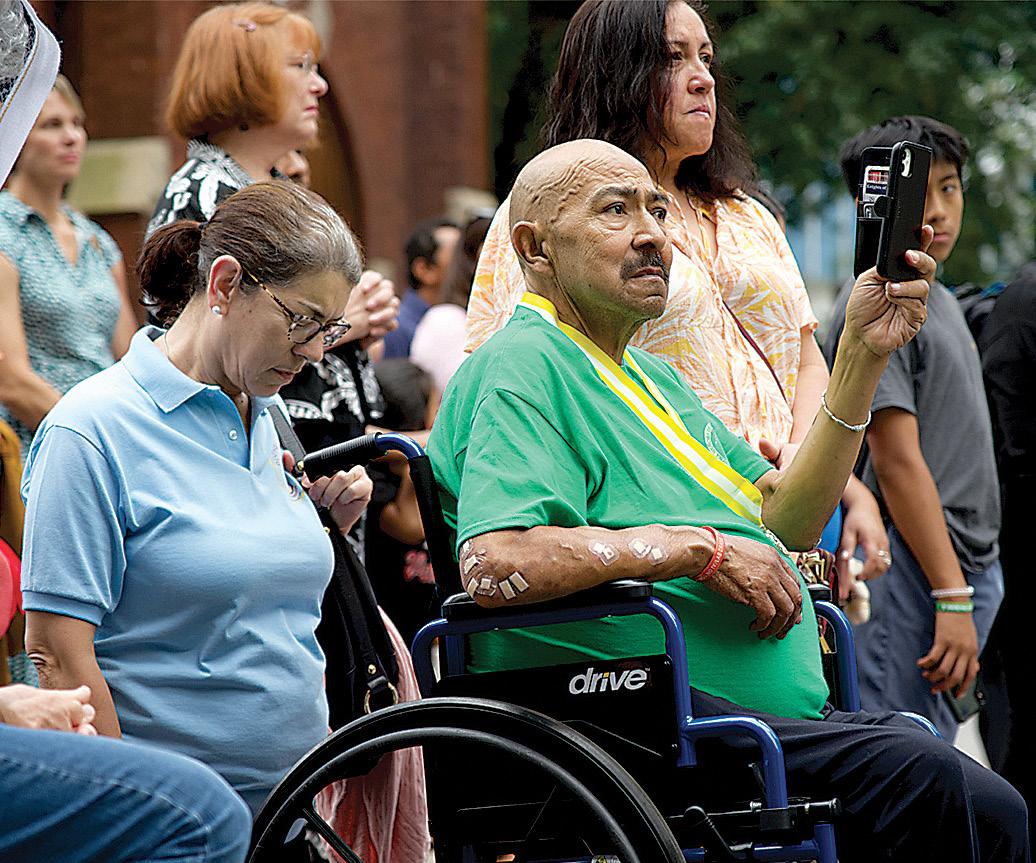

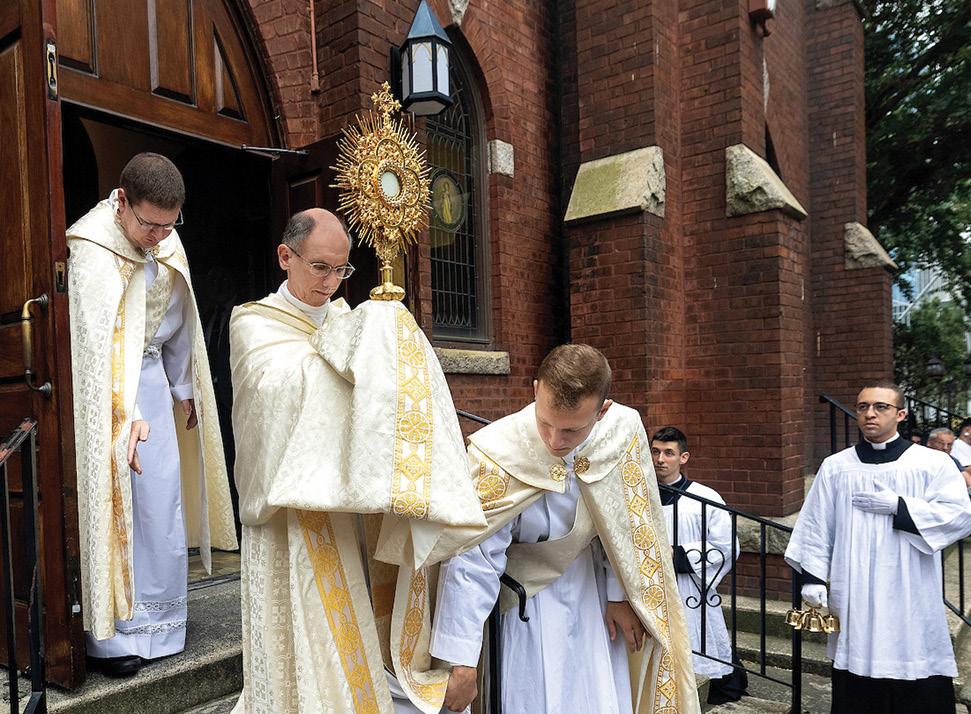

‘The Eucharistic Congress is the closest thing to heaven on earth because we’re all here, we’re all part of the faith. There’s just pure joy when I come to the Eucharistic Congress.’—
Steven Sheppard,member of Our Lady of Grace Parish in Greensboro
Eucharistic Procession, the Blessed Sacrament is carried through the streets of procession took over an hour to complete the .08-mile route as more than 8,000 Catholics carried banners representing parishes and ministries. The faithful kneeled as Jesus in then joined the procession as it wound its way into the Charlotte Convention Center.

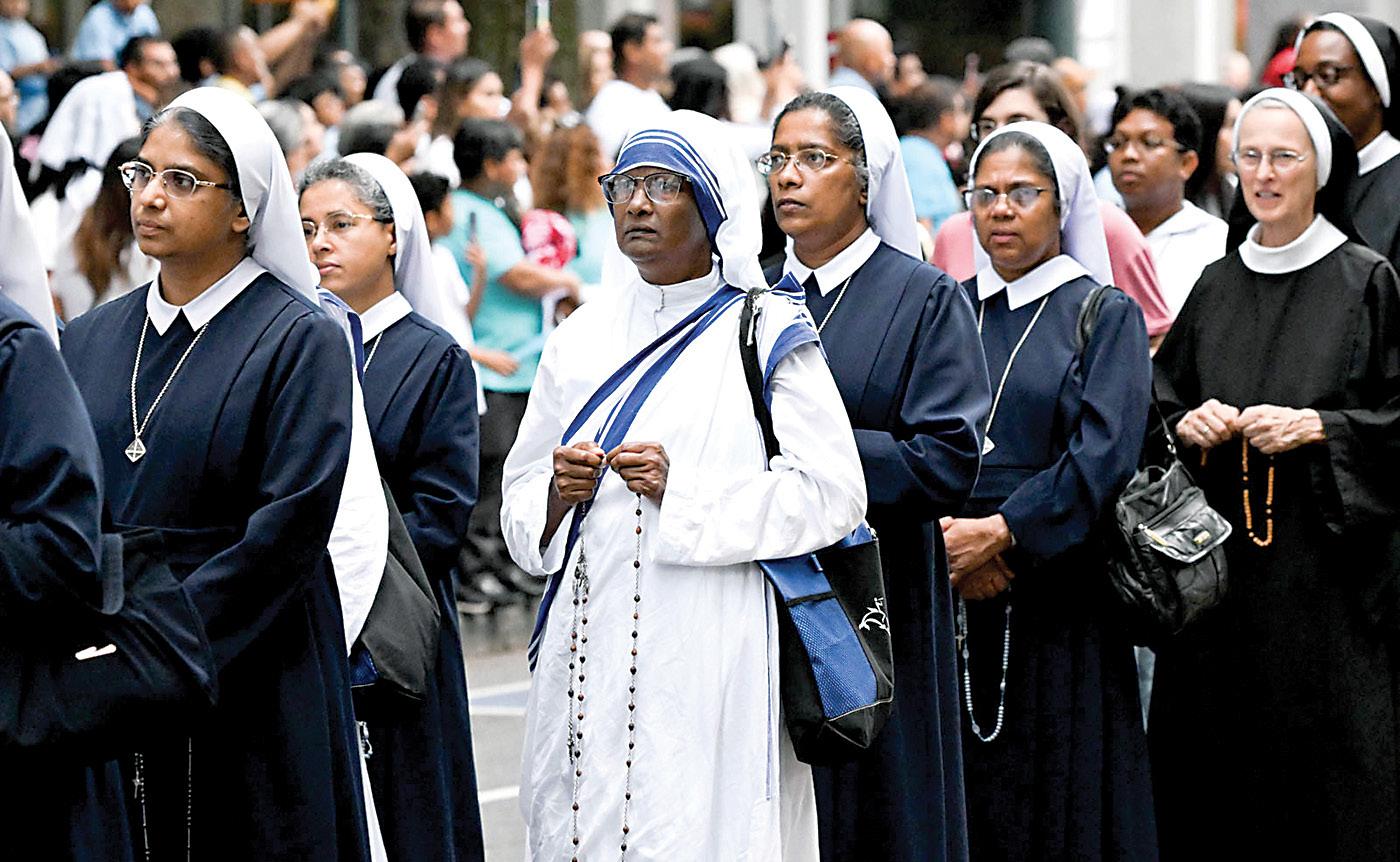
‘I am so thankful to Bishop Jugis for this gift of the Congress. I love being part of His flock here in western North Carolina.’
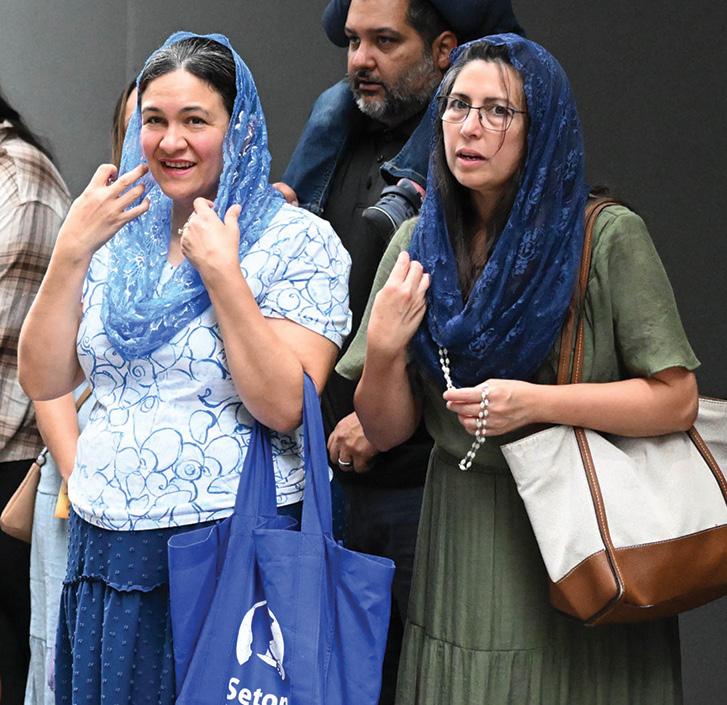

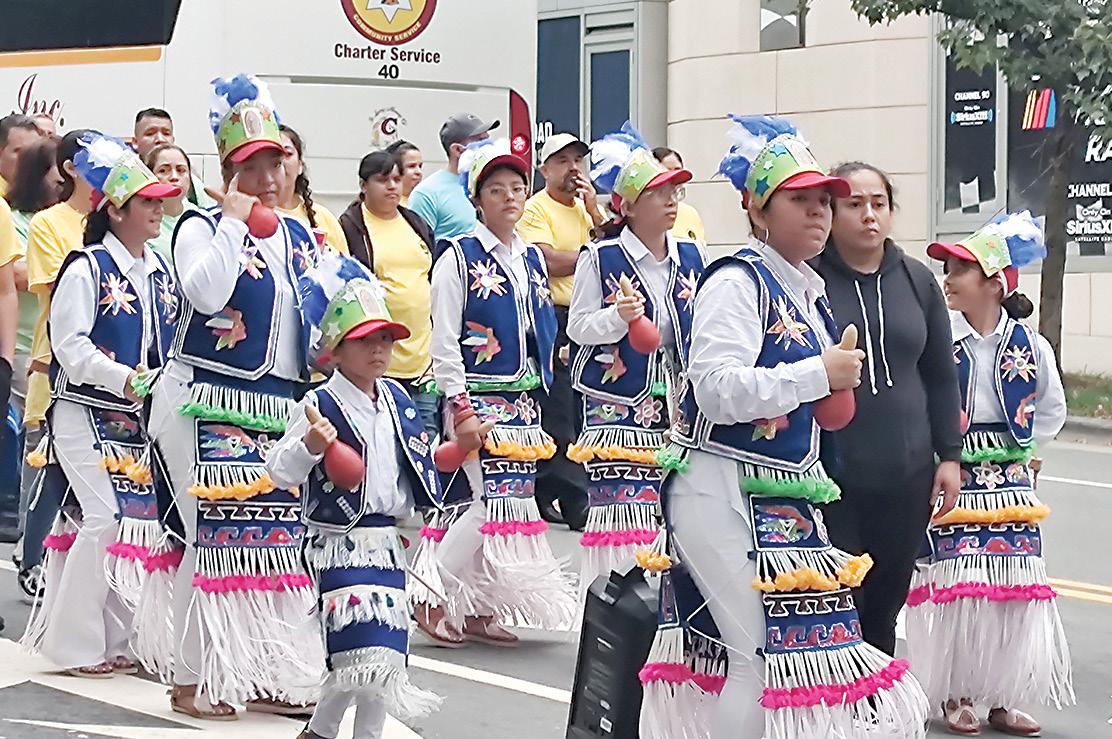
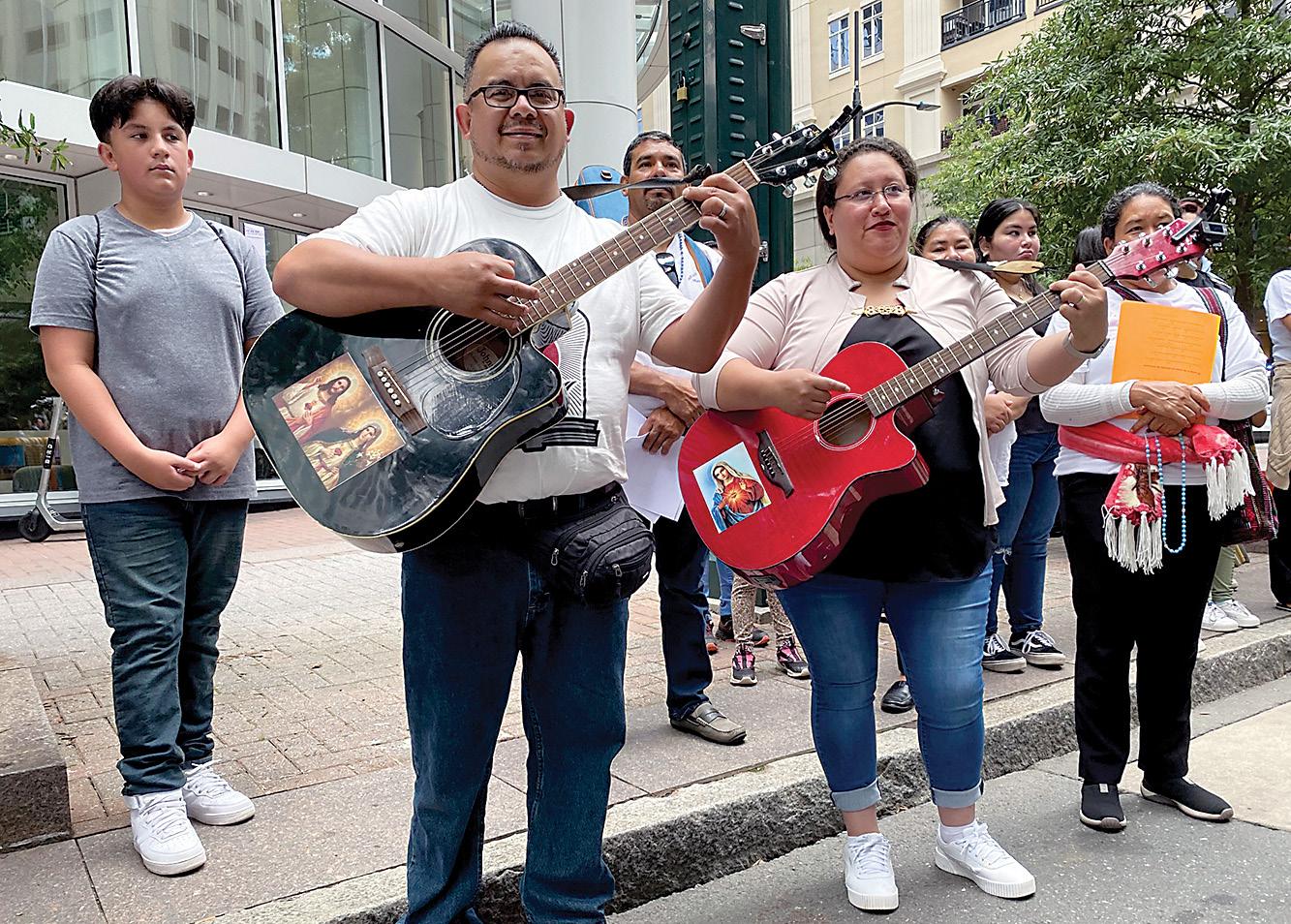
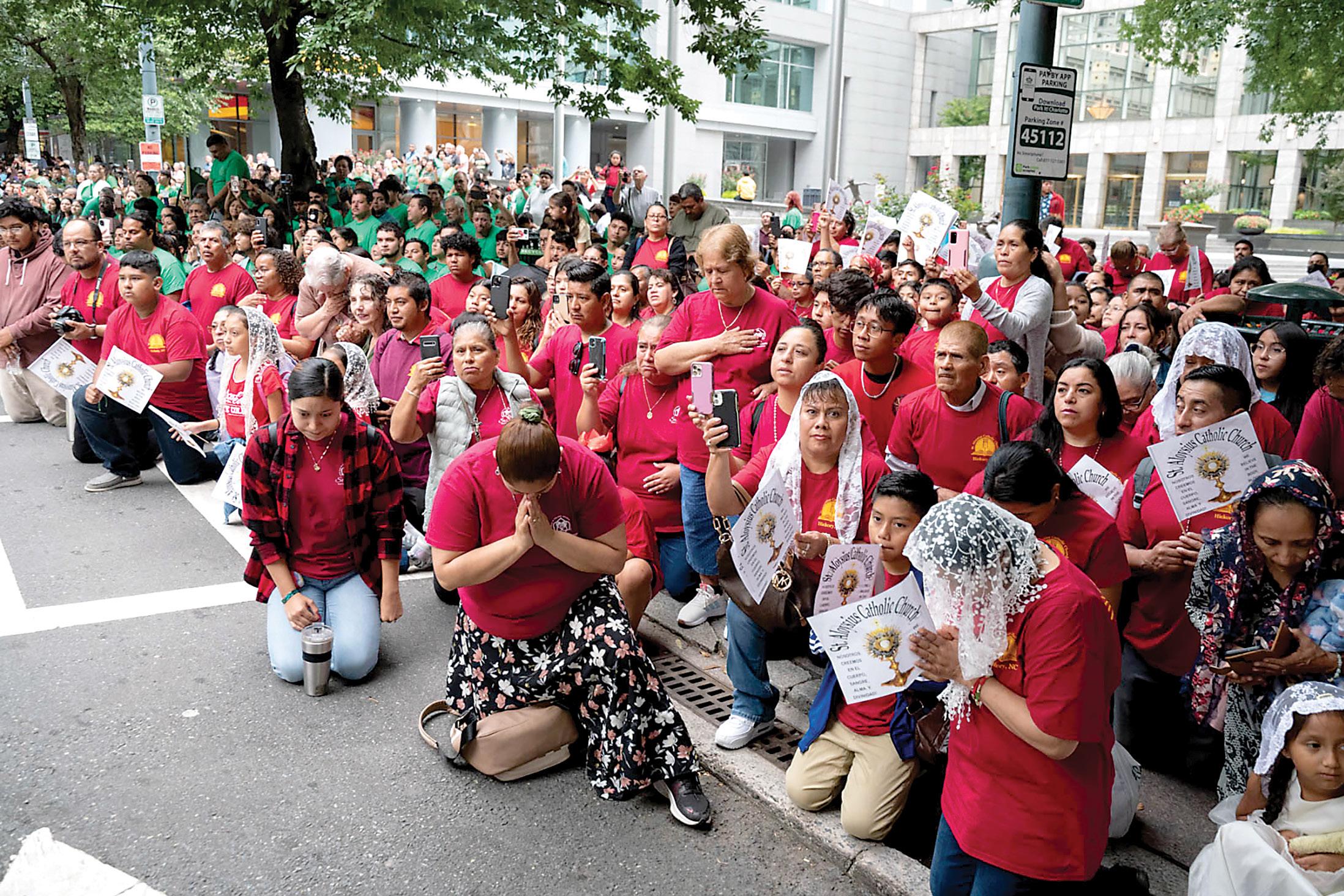
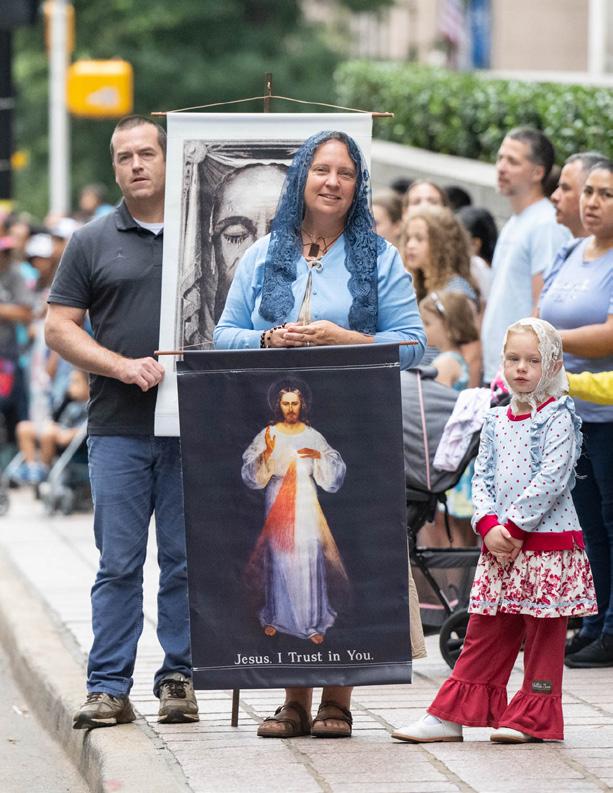
‘Being here as a new priest has been a very beautiful experience. It’s wonderful to see people from different parishes I served as a seminarian and to see people from my parish as a priest.‘— Father Christopher Brock, parochial vicar of Holy Cross Church in Kernersville
10,000 Communion hosts distributed at Mass
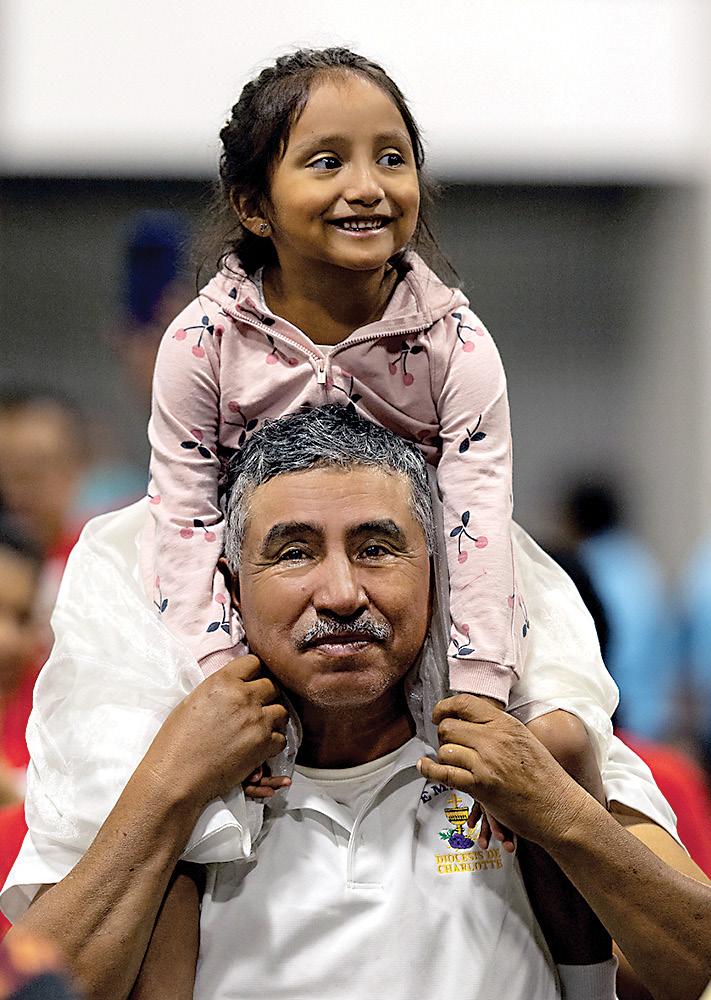


8,000 People walking in Eucharistic procession

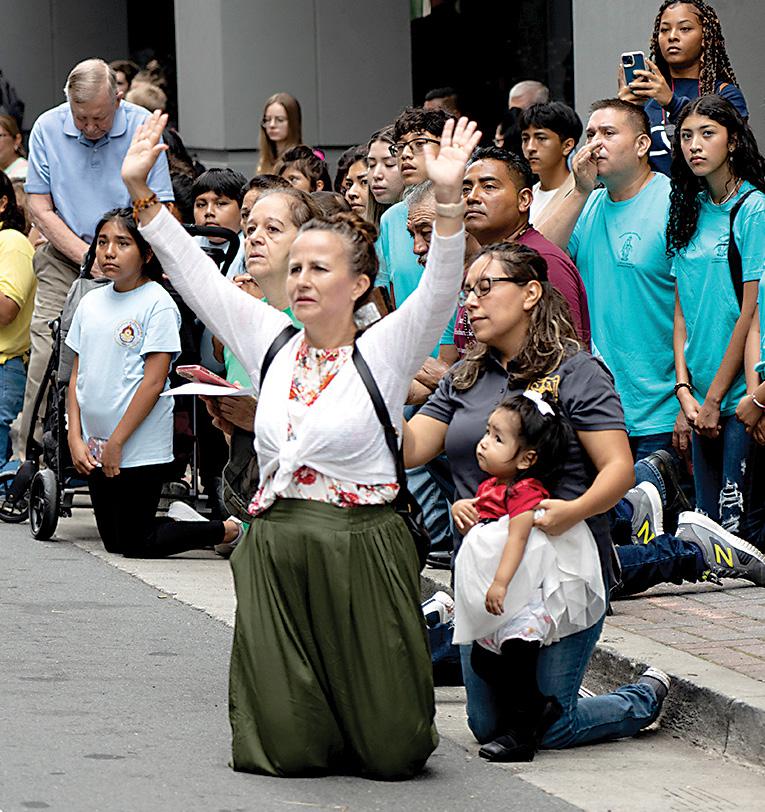
1,800 Steps in the 0.8-mile procession route
1,020 Minutes of Eucharistic Adoration
81 Banners and flags from parishes, schools and groups
79 Vendors offering information and merchandise
75 Minutes the procession lasted
10 Speakers in six educational tracks
1 Standing ovation for Bishop Peter Jugis in honor of his 20th anniversary
‘This is my 10th time attending the Congress. I love coming to it because for me it is a gathering of all of us, children of God coming together to honor Him and be with Him.‘
—Graciela Lopez, member of St. Michael Parish in Gastonia
The Congress offered talks in English, Spanish and Vietnamese, and special tracks for families and people with special needs. A highlight among the speakers in the Spanish track were two Nicaraguan priests, Fathers Ramiro Tijerino and Óscar Danilo Benavides Dávila (pictured below), who came to the diocese in February after being imprisoned in their home country.
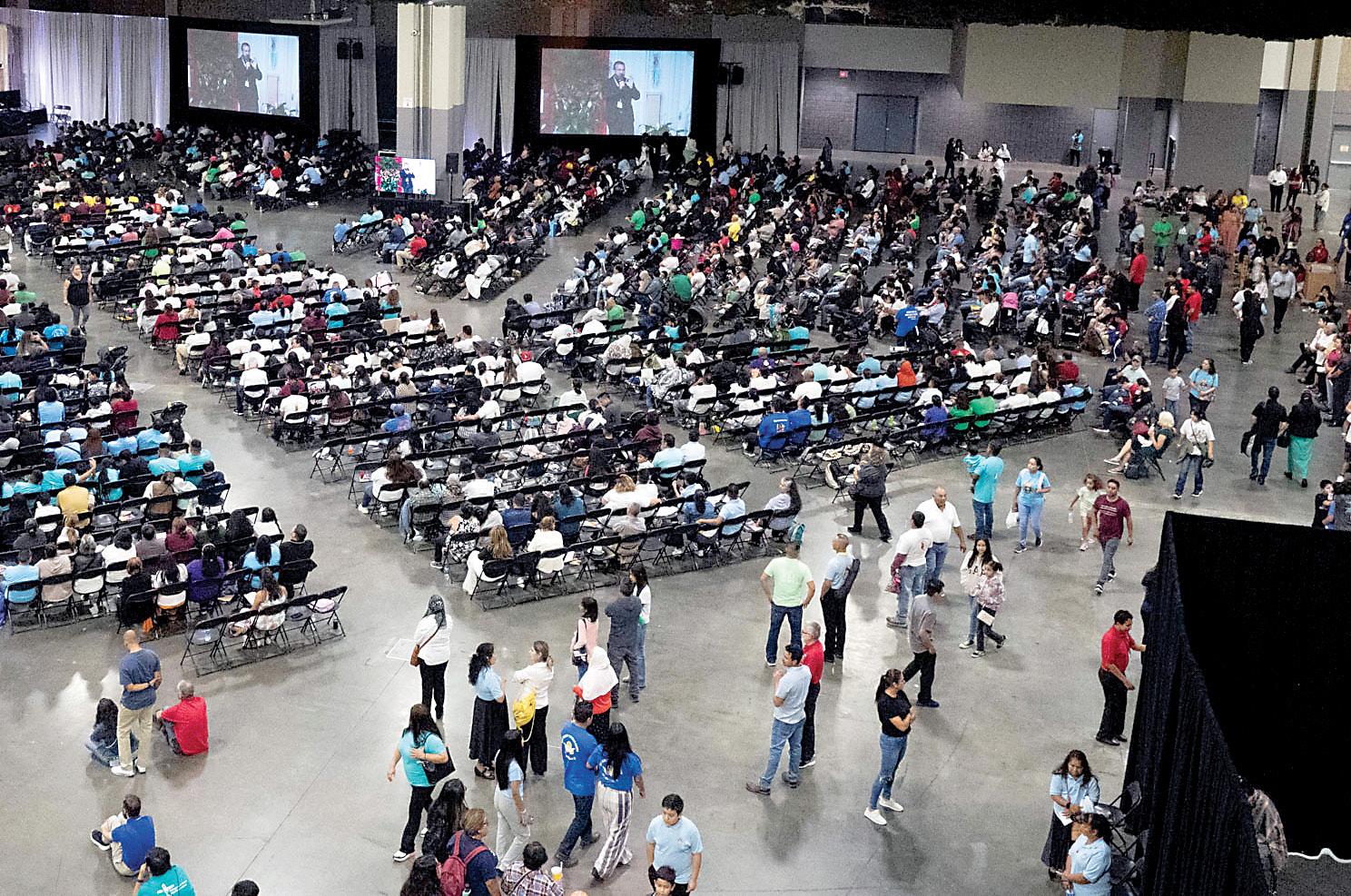
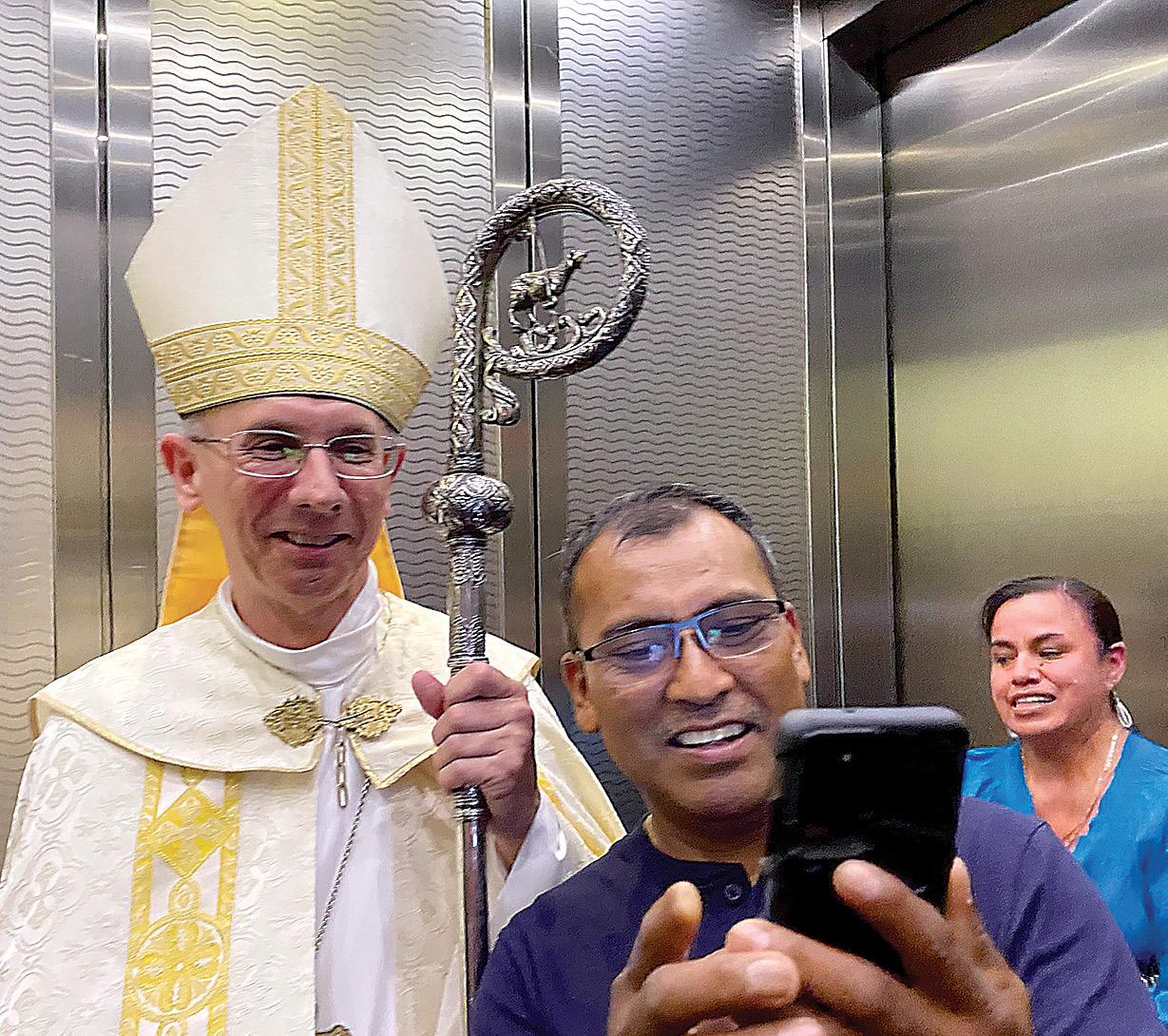
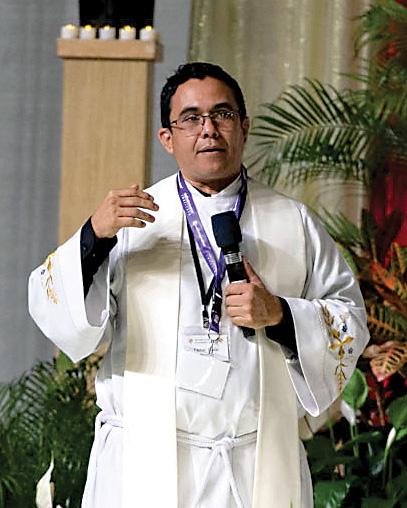
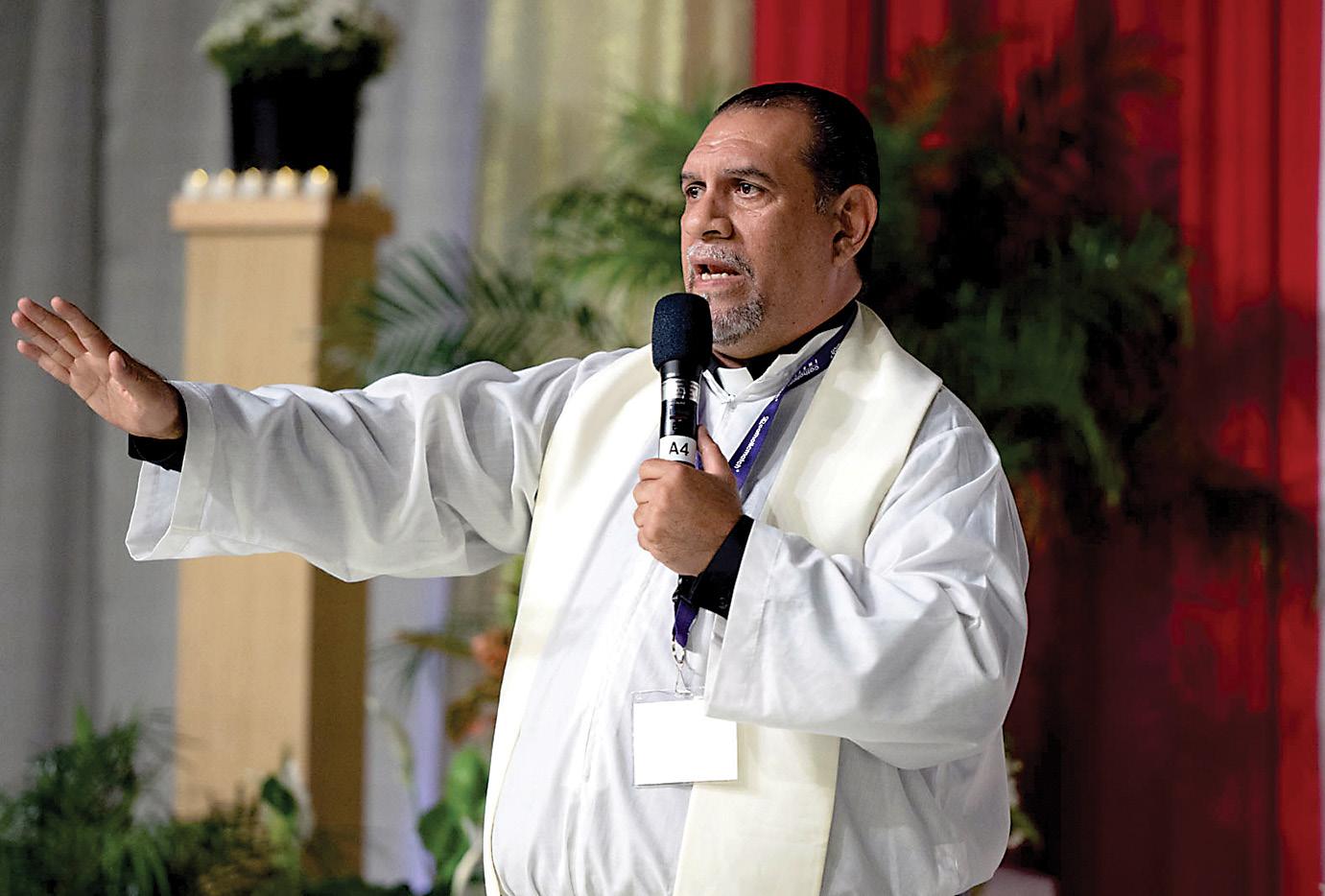


Following the largest Eucharistic Procession since 2016, the faithful gathered for the opening Holy Hour. To a standing-room-only congregation of nearly 10,000, Father Matthew Kauth, rector of St. Joseph College Seminary, delivered a homily focused on what it means to be present and growing our sensitivity to Jesus’ Real Presence in the Eucharist. He noted that St. Thomas Aquinas describes three ways in which God is



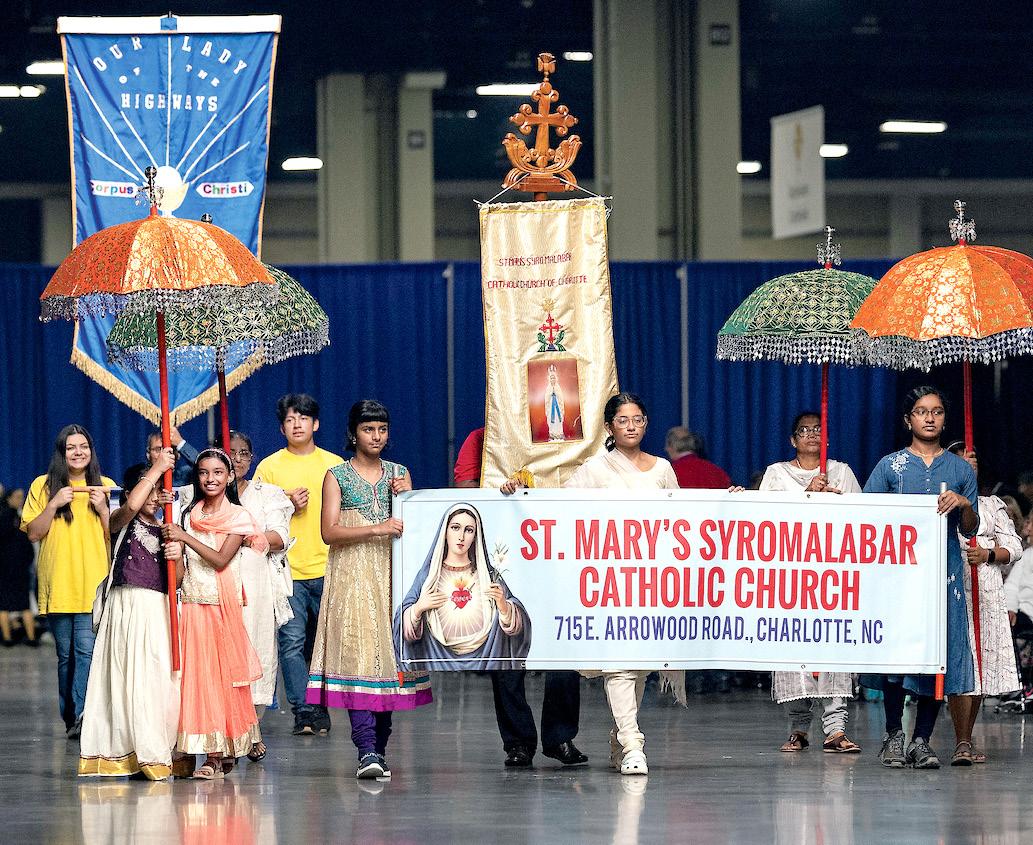
present with us: in His knowing, in His power, and by His essence. Yet, too often we do not know Him, Father Kauth added while mentioning a fourth presence – grace.
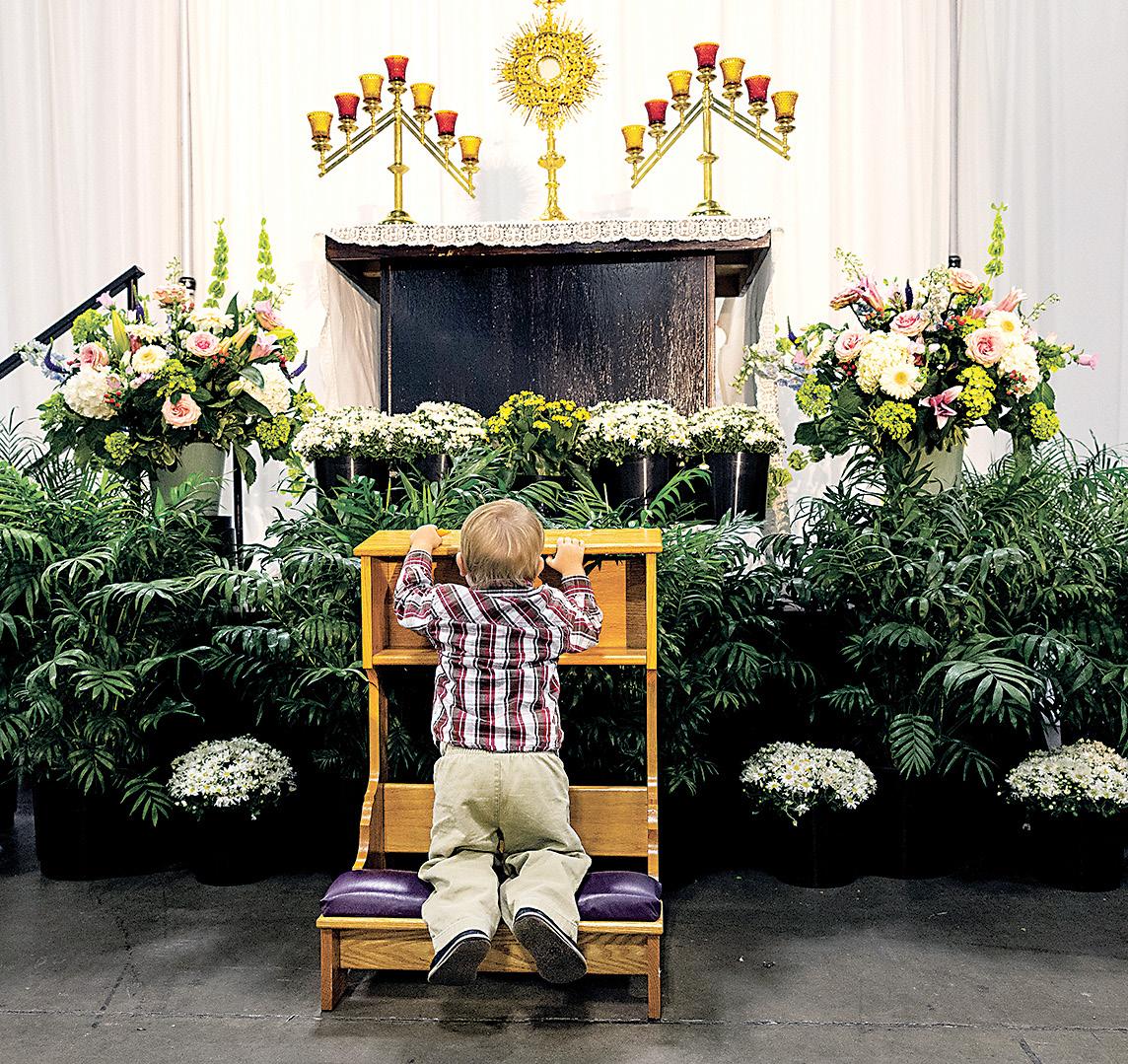
“Why is it that our diocese is so blessed? Why are we so graced?” Father Kauth said. “I guess maybe because we do what we just did. We throw ourselves at Him in recognition and we say, ‘I love you ... I adore You.’”
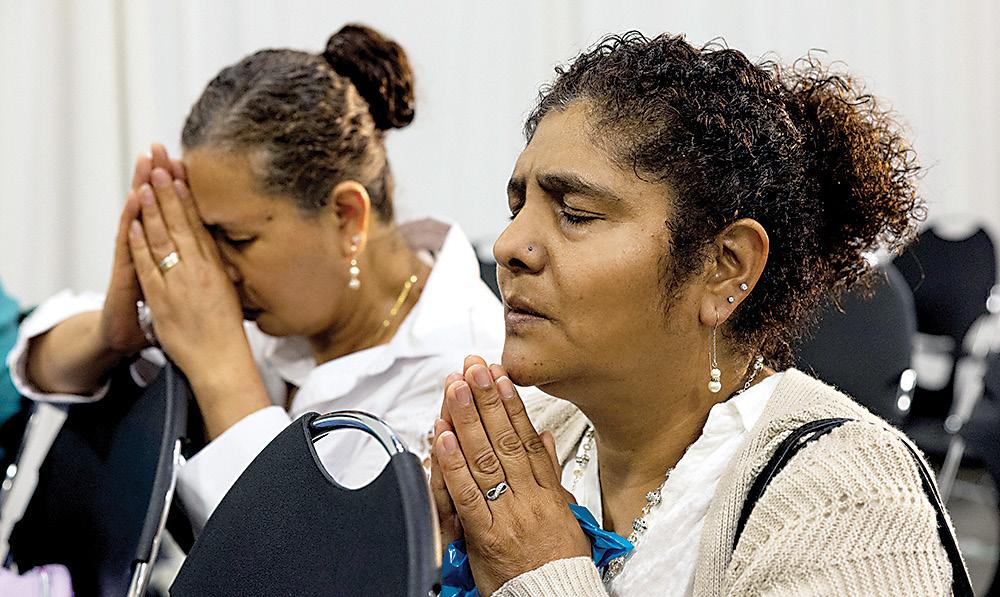

‘We walked the streets with the Body of Christ. We worshiped Him because we know Him. We are sensitive to His Eucharistic Presence, and we love Him.‘
The focus of the two-day celebration was the Eucharist and the reality of Christ’s Real Presence in the Blessed Sacrament. In his homily, Bishop Jugis focused on the vital importance of that Real Presence.
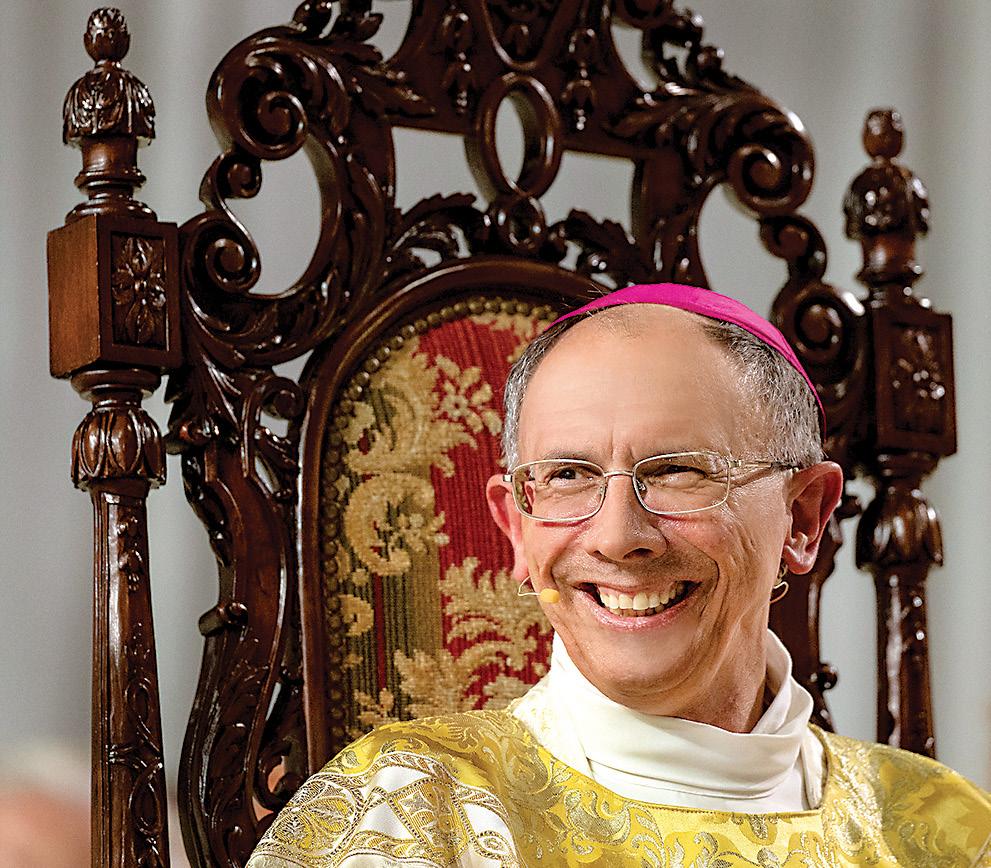

“We have arrived at the high point of the Eucharistic Congress, the offering of the Holy Sacrifice of the Mass,” Bishop Jugis told the crowd. “All the events of the Congress lead up to this point because the Mass is the source and summit of the Christian life.”

Holly. “We throw ourselves at Him in recognition and we say, ‘I love you.’”
The Eucharistic Congress offered programs in English, Spanish and Vietnamese and featured special programming for families, high school and college students, and people with special needs. A highlight was testimony from Fathers Ramiro Tijerino and Óscar Danilo Benavides Dávila, two Nicaraguan priests who came to the diocese in February after months of imprisonment in their home country.
“We live in difficult times of religious persecution,” Father Tijerino told a crowd of 3,000 in an emotional talk in the Spanish track. “In 2022, a group of priests and lay people from the Diocese of Matagalpa were arrested along with Bishop Rolando Álvarez.”
They described the hardships of their days in the notorious El Chipote prison and the comfort of their steadfast devotion to Our Lord amid persecution.
“They thoroughly checked the clothes we took off and passed us the prison uniform,” Father Tijerino recalled. “One of the officers shouted at Father Benito, ‘Give me what you have in your hand!’ Father replied, ‘No.’ He would not give him what he was hiding in his hands.”
The officer insisted, but Father Benito still refused. Then a higher-ranking officer confronted the priest, demanding to see what he was hiding.
“It was there that we realized that it was the Eucharist, Jesus in the Blessed Sacrament, which he had smuggled in,” Father Tijerino said. “The officer told him to consume the Host, but again Father refused, saying he wanted to give it to us, too. By then, it had been more than three months without celebrating Holy Mass and therefore without receiving Communion.”

The congregation stood in applause, sharing in the faithful witness of Christ’s Real Presence and the desire to remain connected to Him.
The Mass drew the Congress to a
close the same way it had begun – with thousands of people celebrating their faith in the Eucharist. The sound of brass instruments and choral voices greeted a stream of colorful banners, clergy, and dozens of children wearing white suits and dresses, recent celebrants of their first Holy Communion.
“We have arrived at the high point of the Eucharistic Congress,” Bishop Jugis told the crowd. “All the events of the Congress lead up to this point, because the Mass is the source and summit of the Christian life.”
He spoke at length about the Real Presence of Jesus in the Eucharist, in a year when the Catholic Church in the U.S. is renewing its focus on this basic Church teaching through the National Eucharistic Revival.
Bishop Jugis also reminded people that Christ would remain with them in their daily lives after the Eucharistic Congress.
“There are many, many ways that Jesus is with you always,” the bishop said.
“He is with you in your prayer. He is present where two or three are gathered in His name. He is with us in His Word. He is with us in the person of His sacred minister: the bishop, the priest, or the deacon. He is present in the poor, the sick, and the imprisoned.”
“Let this Eucharistic Congress be the start of something new for your spiritual life,” he urged. “Go deeper in your relationship with the Lord in the Eucharist.
“Someone is waiting for you to visit Him. It is really Jesus.”
More online
At www.catholicnewsherald.com : Browse lots more photos, video highlights and further coverage of the 19th annual Eucharistic Congress
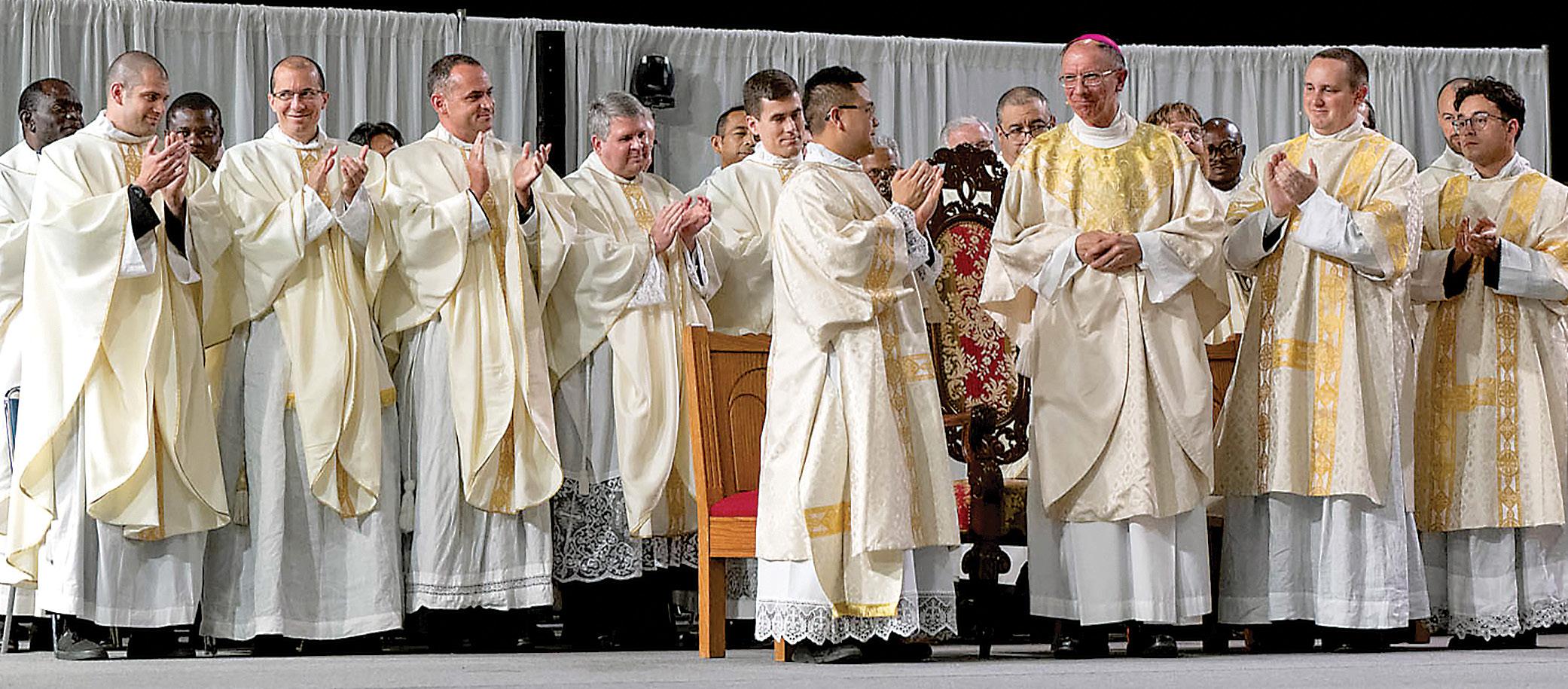
rector del Seminario Universitario San José en Mount Holly. “Nos lanzamos a Él en reconocimiento y le decimos: ‘Te amo’”.
El Congreso Eucarístico ofreció programas en inglés, español, vietnamita y contó con programación especial para familias, estudiantes de secundaria, universitarios y personas con necesidades especiales. Destacó el testimonio de los Padres Ramiro Tijerino y Óscar Benavides, dos sacerdotes nicaragüenses que llegaron a la diócesis en febrero después de meses de encarcelamiento en su país de origen.
“Vivimos en tiempos difíciles de persecución religiosa”, dijo el Padre Benavides a una multitud de personas en una emotiva charla en español. “En 2022, un grupo de sacerdotes y laicos de la Diócesis de Matagalpa fueron arrestados junto con el obispo Rolando Álvarez”. Describieron las dificultades de sus días en la infausta prisión de El Chipote y el consuelo de su firme devoción a Nuestro Señor en medio de la persecución.
“Revisaron minuciosamente la ropa que nos quitamos y nos pasaron el uniforme de la prisión”, recordó el Padre Tijerino. “Uno de los oficiales le gritó al padre Benito: ‘¡Dame lo que tienes en la mano!’
El padre respondió: ‘No’. No le daría lo que estaba escondiendo en sus manos”.
El oficial insistió, pero el Padre Benito aún se negó. Entonces un oficial de mayor rango se enfrentó al sacerdote, exigiendo ver lo que estaba escondiendo.
“Fue allí donde nos dimos cuenta de que era la Eucaristía, Jesús en el Santísimo Sacramento, a la que había introducido de contrabando”, dijo el Padre Tijerino.
The Mass concluded with a special video featuring a dozen priests reflecting on the bishop’s impact on the diocese and its people. The crowd applauded in a standing ovation for the bishop, who will celebrate his 20th anniversary as shepherd of the diocese in October.
“El oficial le dijo que consumiera la Hostia, pero nuevamente el Padre se negó, diciendo que también quería dárnosla. Para entonces, habían pasado más de tres meses sin celebrar la Santa Misa y, por lo tanto, sin recibir la Comunión”.
La congregación se puso de pie en aplausos, compartiendo el testimonio fiel de la presencia real de Cristo y el deseo de permanecer conectados con Él.
La Misa llevó al Congreso a su fin de la misma manera que había comenzado: con miles de personas celebrando su fe en la Eucaristía. El sonido de los instrumentos de metal y las voces corales saludaron a una corriente de coloridas pancartas, clérigos y docenas de niños vestidos con trajes y vestidos blancos, con los que recientemente celebraron su Primera Comunión.
“Hemos llegado al punto culminante del Congreso Eucarístico”, dijo el Obispo Jugis a la multitud. “Todos los eventos del Congreso conducen a este punto porque la Misa es la fuente y cumbre de la vida cristiana”.
Habló extensamente sobre la Presencia Real de Jesús en la Eucaristía, en un año en que la Iglesia Católica en los Estados Unidos está renovando su enfoque en esta enseñanza básica de la Iglesia a través del Avivamiento Eucarístico Nacional.
El Obispo Jugis también recordó a las personas que Cristo permanecería con ellos en su vida diaria después del Congreso Eucarístico.
“Hay muchas, muchas maneras en que Jesús está con ustedes siempre. El está con ustedes en su oración. Él está presente donde dos o tres están reunidos en Su nombre. Él está con nosotros en Su Palabra. Él está con nosotros en la persona de su ministro sagrado: el obispo, el sacerdote o el diácono. Está presente en los pobres, los enfermos y los encarcelados”.
“Que este Congreso Eucarístico sea el comienzo de algo nuevo para su vida espiritual”, instó. “Profundicen en su relación con el Señor en la Eucaristía. Alguien está esperando que lo visiten. Es realmente Jesús”.
Más online
En www.catholicnewsherald.com : Encontrará muchas más fotos, videos destacados y más cobertura del XIX Congreso Eucarístico anual.
CINCINNATI — A Stations of the Cross display on privately owned wooded land seems an unlikely subject for a federal case.

Yet, just such a case has come out of Genoa Township in Livingston County in southeastern Michigan, escalating from a local government dispute over a special-use permit all the way to the 6th U.S. Circuit Court of Appeals based in Cincinnati.
On Sept. 11, a three-judge panel ruled unanimously in favor of Missouri-based Catholic Healthcare International, which controls the 40-acre parcel purchased from the Diocese of Lansing, Michigan. The ruling said the township was violating Catholic Healthcare International’s right to install the “prayer trail” honoring the day Jesus Christ was crucified, dead and buried. Three days after this event, Christ rose from the dead, according to Scripture and the teaching of the Catholic Church.
“We are now allowed to gather to pray and return the Pray, Hope & Don’t Worry Altar Table, the Our Lady of Grace Mural Wall, and the Stations of the Cross,” the organization said in a statement. It will now seek a permanent federal injunction to allow the displays. The dispute had dragged on for three years.
Plans for the “Casa USA” campus -with backing from other Catholic health care organizations, individuals and the patronage of Lansing Bishop Earl A. Boyea -- call for duplicating Padre Pio’s hospital complex for the first time outside of Italy, including an exact replica of the original friary church of the Capuchin Franciscan who is also known as St. Pius of Pietrelcina.
Jere D. Palazzolo, director, chairman and president of Catholic Healthcare International, also founded Marian Medical Services.
Township officials had claimed that the “prayer trail” was the equivalent of a church building, and the Missouri-based health organization responded with two revised plans, both of which were denied.
In May 2021, the township board denied the second special-use-permit application, stating, “The proposed use involving a 95-seat, 6,090-square-foot church with associated parking lot, site lighting, building lighting, and outdoor accessory structures” was “not consistent” with the township’s master plan.
The township sued Catholic Healthcare International that September, after which the religious displays were removed from the trail.
Writing for the three-judge panel, Judge Raymond Kethledge noted, “None of the religious displays were visible from outside
Got stock?
Giving appreciated stock to your parish, Catholic school, agency, the diocese or the Foundation creates a gift that will benefit your desired beneficiary and provide you tax benefits.
For more information, go to www.charlottediocese.givingplan.net or call Gina Rhodes at 704/370-3364.
plaintiffs’ 40-acre parcel.”
According to the township’s zoning code, “the religious displays are ‘structures’: the Stations of the Cross are structurally akin to large birdhouses, and the altar and mural were indeed set on the ground,” Kethledge wrote.
“But a church is a structure ‘wherein’ people gather to worship. And no person – much less ‘persons’ – could gather to worship inside any of these structures. The ordinance’s definition of ‘church’ comports with the term’s ordinary meaning. The ordinance therefore gave plaintiffs no reason to think the township would treat their trail (with) religious displays as a church.”
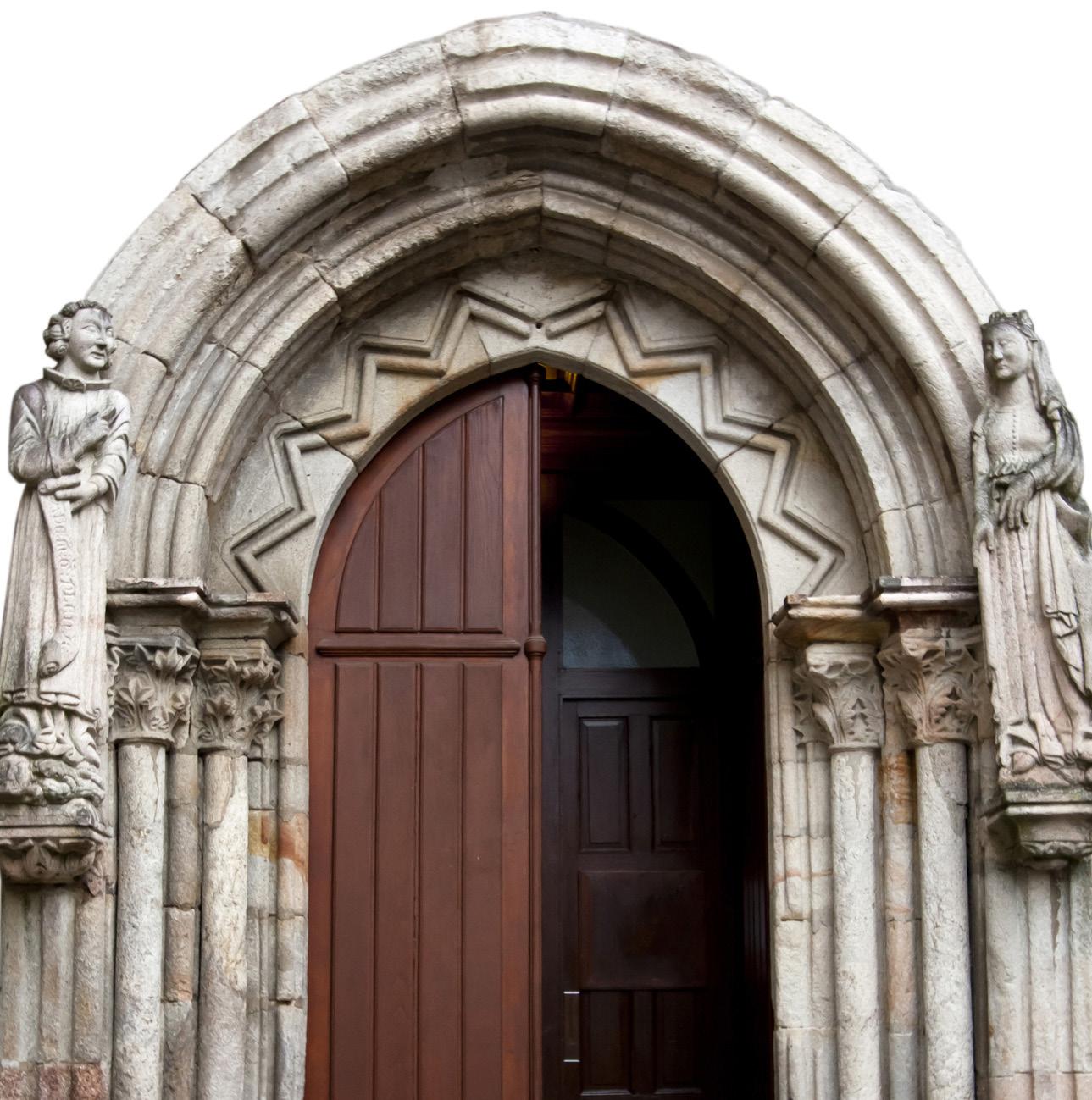
The appeals court also asked that Catholic Healthcare International be able to restore those structures before Sept. 23 – the feast day for Padre Pio.
WASHINGTON, D.C. — The Justice Department and the manufacturer of an abortion drug asked the U.S. Supreme Court Sept. 8 to overturn a lower-court ruling that would limit access to the drug, setting the stage for the high court to weigh in on the future of the drug’s availability.
A coalition of pro-life opponents of mifepristone, the first of two drugs used in a medication or chemical abortion, previously filed suit in an effort to revoke the U.S. Food and Drug Administration’s approval of the drug, arguing the government violated its own safety standards when it first approved the drug in 2000.
However, proponents argued mifepristone poses statistically little risk to women using it for abortion early in pregnancy and claim the drug is being singled out for political reasons.
In its filing on behalf of the FDA, the Justice Department called the appeals court ruling an “unprecedented decision,” arguing its logic “would threaten to severely disrupt the pharmaceutical industry and prevent FDA from fulfilling its statutory responsibilities according to its scientific judgment.”
The filing argued the drug is safe and that “study after study” has shown “serious adverse events are exceedingly rare” when mifepristone is taken under the approved conditions. The filing added, “For many patients, mifepristone is the best method to lawfully terminate their early pregnancies.”
It stated that revoking approval of the pill “would be damaging for women and health care providers around the Nation.”
But in a statement, Erik Baptist, senior
counsel for Alliance Defending Freedom, which is representing the pro-life coalition challenging mifepristone’s approval, said the FDA “has been entrusted to serve as the nation’s gatekeeper of legal drugs.”
“By repeatedly and unlawfully removing critical safeguards in the chemical abortion regimen, the FDA has failed to protect the safety of women and girls,” he said. “Two courts have now held the FDA accountable for the damage it has done to the rule of law and the harm it has caused to countless girls and women. We hope the Supreme Court does the same.”
Earlier this year, the Supreme Court blocked a lower court’s restrictions on mifepristone, leaving the abortion pill on the market while litigation proceeds. That decision froze the lower court’s ruling to stay the FDA’s approval of the drug.
The two-drug chemical abortion regimen is currently legal in some form in 36 states and the District of Columbia. It is permitted in 21 states, but with some additional restrictions in the remaining 15, according to data from the Guttmacher Institute, which supports abortion access.
The Catholic Church opposes abortion, teaching that all human life is sacred from conception to natural death and that society must extend support to mothers and children. Earlier this year, Bishop Michael F. Burbidge of Arlington, chairman of the U.S. Conference of Catholic Bishops’ Committee on Pro-Life Activities, denounced Biden administration’s attempts to loosen regulations around the abortion bill, saying the U.S. bishops “decry the continuing push for the destruction of innocent human lives and the loosening of vital safety standards for vulnerable women.”
For the latest news 24/7: catholicnewsherald.com


WASHINGTON, D.C. — Legal abortions most likely increased in the United States in the first six months of 2023 compared with 2020, according to a New York Times analysis of data from the Guttmacher Institute, which opposes abortion restrictions. The data from Guttmacher, which is based on what it calls a representative sample of legal abortion providers, is from the first half of 2023; it follows the U.S. Supreme Court’s 2022 decision in Dobbs vs. Jackson Women’s Health Organization decision that overturned prior rulings by the high court making abortion access a constitutional right. Following the Dobbs ruling, 22 states have moved to ban or restrict abortion, although not all of those efforts are currently in effect amid court challenges. The analysis found that about 511,000 abortions were estimated to have occurred in states or territories where the procedure was legal within the first six months of 2023, an increase from about 465,000 abortions nationwide in a six-month period of 2020. Most states where abortion remains legal saw increases, the analysis found, particularly states like Illinois that border states greatly restricting the procedure.
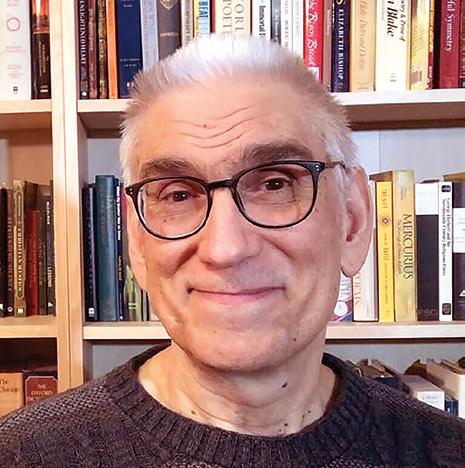
SANTA FE, N.M. — A New Mexico archbishop said the state’s temporary ban on openly carrying firearms in and around Albuquerque is not “a threat to the Constitution.” “I believe Governor Michelle Lujan Grisham is correct to point out the crisis we are experiencing in Albuquerque and the County of Bernalillo. The number of gun deaths we witness here is deplorable and tragic,” said Archbishop John C. Wester of Santa Fe in a Sept. 11 statement. On Sept. 7, Lujan Grisham signed executive order 2023-130, which declared a state of public health emergency due to gun violence. The governor’s order, set to remain in effect until Oct. 6, cited a 45% rise in gun deaths from 2009 to 2018 and an increase in mass shootings. Lujan Grisham also noted that gun violence is the leading cause of death among the state’s children, with three slain in recent weeks. The following day, she signed a public health order announcing a statewide enforcement plan for gun violence, as well as a plan for reducing deaths from the synthetic opioid fentanyl. The plan includes a 30-day suspension of concealed and open carrying of firearms in Albuquerque and surrounding Bernalillo County. Lujan Grisham’s orders have evoked backlash from gun rights advocates and fellow lawmakers, both Republicans and fellow Democrats, several of whom have called the move unconstitutional.
CHICAGO — St. Jude may be best known in the United States for being the patron saint of St. Jude Children’s Research Hospital in Memphis, a cancer treatment center founded by Lebanese-American entertainer Danny Thomas. Thomas credited St. Jude – also well known among Catholics as the patron saint of hopeless causes and desperate situations – with reviving
his career during a particularly low moment. He founded the hospital in gratitude. Now more Catholics are going to learn about this faithful apostle, martyr and saint as his relic – bone fragments from an arm believed to be his –leaves Italy for the first time in centuries. The tour, sponsored by the Treasures of the Church ministry, extends into May 2024. It begins in Chicago on Sept. 9 at St. John Cantius Church. Scheduled stops for the remainder of 2023 include parishes in Illinois, Minnesota, South Dakota and Iowa, followed by Kansas, Iowa, Missouri, Nebraska, Indiana and Michigan. The relic’s tour then veers east to parishes in Ohio and central Pennsylvania – some 45 parishes. There are to be 100 stops in all. The 2024 stops into May have not yet been announced.
BALTIMORE — Archbishop William E. Lori told Catholics Sept. 5 that the Archdiocese of Baltimore is considering Chapter 11 bankruptcy reorganization as one option to deal with lawsuits expected to be filed when the state’s Child Victims Act takes effect Oct. 1. The law, passed by the Maryland General Assembly earlier this year, removed any statute of limitations for civil suits involving child sexual abuse. It caps suits against public institutions such as government schools at $890,000, and for private individuals or institutions such as churches at $1.5 million. The previous law allowed such suits for people up to age 38, an increase from the previous age limit of 25. At the time, the Maryland Catholic Conference –which includes the Archdiocese of Baltimore as well as the Archdiocese of Washington and the Diocese of Wilmington, Delaware, which both include Maryland counties – supported the increase to age 38. In his Sept. 5 letter, the archbishop said he has two overarching goals as the archdiocese considers its response: “the healing of victim-survivors who have suffered so profoundly from the actions of some ministers of the church” and “the continuation and furtherance of the many ministries of the Archdiocese that provide for the spiritual, educational, and social needs of countless people – Catholic and non-Catholic – across the state.”
NEW HOPE, Ky. — A new movie in which Father Matthew Hardesty served as an unofficial consultant presented him with a rare opportunity to share the Gospel message with a group of Hollywood moviemakers and to see his ministry with fresh eyes. “Wildcat” – directed by actor Ethan Hawke and starring his daughter Maya Hawke – takes a look at the life of Catholic author Flannery O’Connor as she tried to publish her first book in the 1950s. The film had a premiere Sept. 11 during the Toronto International Film Festival. Before that it premiered Sept. 1 at the Telluride Film Festival in Colorado. It was filmed over a four-month period in various locations in Kentucky including St. Vincent de Paul Church in New Hope and St. Catherine Church in New Haven, parishes where Father Hardesty serves as pastor. Some scenes were also filmed at St. Boniface Church in Louisville. “I take it as a sign God wanted to refresh me by helping me see more concretely the fruits of priestly ministry,” said Father Hardesty during a recent interview with The Record, newspaper of the Archdiocese of Louisville. Father Hardesty and St. Vincent de Paul’s choir were filmed in scenes for the movie. His main contribution, however, was guiding the actors and crew members in understanding aspects of the Catholic faith that would give authenticity to the film, he said.
FAITH FAMILY FRATERNITY
Knights of Columbus
Consider joining the over 2 million members of the largest, lay Catholic order in the world by signing up online today at: www.kofc.org/joinus
For a Limited Time – FREE Online Membership –Use Promo Code (BLESSEDMCGIVNEY)
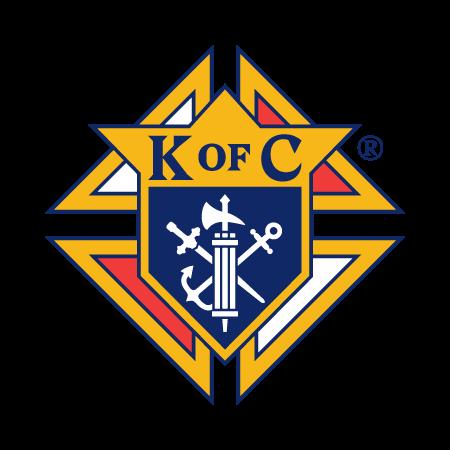
MEXICO CITY — Mexico’s Supreme Court overturned a state-level abortion ban, a decision observers say could hasten the removal of restrictions on the procedure nationwide.
The first bench of the Supreme Court ruled Aug. 30 against a law banning abortions in the western state of Aguascalientes, instructing the local congress to revise its legislation. The bench, or panel of justices, also ordered the state government to guarantee access to abortion in its hospitals.
“The court’s argumentation sets a binding precedent for all local and federal judges, who will have to resolve any similar matters based on the court’s decision, which was approved by four votes (out of five),” the Information Group on Reproductive Choice, one of the litigants, said in a statement.
“This achievement brings us closer to the decriminalization of abortion throughout the country,” said the group, known as GIRE for its Spanish acronym.
GIRE director Rebeca Ramos told OSV News, “We are presenting injunctions in other states where (abortion) is criminalized. So we’re now expecting that they’re resolved in accordance with what the court decided.” She described the expected resolution of future cases as a “domino effect.”
The decision continued the trend of the Mexican high court in striking down restrictions on abortion. It followed a 2021 decision, which decriminalized abortion during the first 12 weeks of pregnancy in the northern state of Coahuila and established jurisprudence for future cases.
“It was Mexico’s Roe v. Wade,” Luis Martínez, Human Life International’s representative at the Organization of American States, told OSV News.
“The Supreme Court established general criteria of unconstitutionality and with
(that) in any state of the republic, even if the constitution was pro-life, abortions could be done, but after (the woman) filed and won an amparo,” Martínez said. An “amparo,” he explained, is a Mexican legal concept comparable to an injunction, but usually for individuals, not groups.
Martínez continued: “Normally, the Supreme Court has shaped abortion policy through rulings on the constitutionality of the laws regulating abortion or jurisprudence. In Aguascalientes, it was through an amparo.”
The decision means 12 of Mexico’s 32
states have decriminalized abortion since Mexico City approved the first law doing so in 2007.
“This first bench cannot be indifferent to the situation in which women and pregnant persons in Aguascalientes are and have been subjected to in an unjust manner,” Justice Juan Luis González Alcántara Carrancá, author of the decision, said in his ruling.
“(It is) imperative that the constitutional courts break the cycle of discrimination and take the necessary measures to repair the damage caused that society
A woman holds a cross as she takes part in a March for Life against abortion in Mexico City May 7, 2022. Mexico’s Supreme Court overturned a statelevel abortion ban Aug. 30, a decision observers say could hasten the removal of restrictions on the procedure nationwide.

and the justice system itself could cause or has caused, ensuring that the causes that originated such damage are not perpetuated,” the justice said.
Martínez said the strategy of many prolife groups to influence policy on the state level is likely to prove ineffective as the Supreme Court quickly assumes cases –and rules against local laws.
“I see a very complicated situation here in Mexico,” Martínez said. “The only way to reverse the situation would be explicitly putting the right to life from conception in the constitution.”
KATE SCANLON
OSV News
JUÁREZ, Mexico — A shelter near the U.S.-Mexico border for pregnant migrants run by a pro-life leader is preparing to welcome the first infant born while the mother is staying at the shelter, its cofounder told OSV News.
Destiny Herndon-De La Rosa, founder and president of New Wave Feminists and co-founder of the Stellar Shelter, also known as the “New Wave Feminists Consistent Life Ethic Center” in Juárez, Mexico, called the process of opening that shelter “kind of a wild journey.”
“We opened Feb. 6 and already have seen over 100 women and children come to our shelter and then be processed for asylum,” she told OSV News Sept. 7. “We currently have two pregnant mamas; one’s going to be giving birth this coming week, which
is amazing. It’ll be our first baby actually born while the mom is staying at the shelter. So we’re all very, very excited for that.”
Immigration and U.S.-Mexico border policy have become increasingly partisan and divisive topics in American politics. Juárez is right over the border from El Paso, Texas.
Herndon-De La Rosa said that the U.S. immigration system is a broken “manmade crisis,” alleging both sides of the political aisle are disincentivized from fostering an immigration policy that is both humane and orderly.
“We kind of see that a lot with abortion too,” she said. “The right tends to make that a big issue because that’s where their voting base is. And the left tends to make migration a really big issue. But nobody’s actually doing anything that is solving the problem. You end up with the actual
vulnerable people falling through the cracks.”
Herndon-De La Rosa said in both New Wave Feminists’ work at the shelter and in the pro-life movement, “what we try to do is humanize human beings.”
“You hear these women’s stories of just the most horrific things ever that they’ve been put through in their home countries and how literally going through a jungle -- where people lose their lives and their children lose their lives and everything all the time -- that is a better option than staying where they currently are,” she said, noting that women and children who make such a trek are vulnerable to sex trafficking and violence.
After such a journey, Herndon-De La Rosa said, migrants are sometimes greeted with an American culture that sees them as criminals or there to take jobs, and makes them part of a “nameless, faceless
monolith that makes it easy for us to dehumanize people.”
“A big part of our work is giving them faces and names and showing what they’ve been through; telling their stories and platforming their experiences, so that people realize these aren’t just nameless, faceless masses,” she said. “These are human beings. For believers, these are your brothers and sisters in Christ. And we have to have empathy for that.”
As pro-life feminists, Herndon-De La Rosa said, her group felt called to help women at the border.
“You know, just like our humanity doesn’t begin at the birth canal, it doesn’t end at a border,” Herndon-De La Rosa said. “We’re all still human beings and the unborn child in a migrant mother’s womb is just as human as an unborn child in an American mother’s womb.”
ABUJA, Nigeria — In an endless cycle of violence against Christians in Nigeria, seminarian Na’Aman Danlami Stephen of the Diocese of Kafanchan was burned to death on Sept. 7 when a terrorist group called Fulani herdsmen attacked the rectory at St. Raphael Church in Fadan Kamantan. Bishop Julius Kundi of Kafanchan told the Catholic agency Aid to the Church in Need that the parish priest, Father Emmanuel Okolo, and the assistant priest were able to escape the fire at the rectory, while the 25-year-old seminarian died in the attack. Bishops meeting for their 2023 plenary in the capital city of Abuja celebrated Mass Sept. 10 in memory of the seminarian. “We offer this Mass for the happy repose of Na’Aman Danlami Stephen, the seminarian who was killed two days ago when bandits attacked and burnt the rectory in (Fadan) Kamantan. We pray also for all those who have suffered similar fate and for peace in Nigeria,” said Father Michael Banjo, deputy secretary-general of the Catholic Secretariat of Nigeria. The latest killing is just one in a long list of attacks that have targeted churches and Christians in Africa’s most populous nation, and Kafanchan in particular has been hit hard by the kidnapping of clergy, seminarians and other Christians. According to a January report by the research organization SB Morgen Intelligence, not fewer than 39 Catholic priests were killed by gunmen in 2022, while 30 others were abducted. Meanwhile the April 10 report by Intersociety said that more than 50,000 Christians have been killed in Nigeria over the last 14 years.
VATICAN CITY — Pope Francis said he knows people wonder why he traveled close to 6,000 miles to Mongolia to visit a Catholic community of only 1,450 people. “Because it is precisely there, far from the spotlight, that we often find the signs of the presence of God, who does not look at appearances, but at the heart,” he told thousands of people gathered in St. Peter’s Square for his weekly general audience Sept. 6. Following his usual practice of speaking about a trip at the first audience after his return, the pope said that during his Sept. 1-4 stay the country’s capital, Ulaanbaatar, he encountered “a humble and joyful church, which is in the heart of God,” but one that was excited to find itself at the center of the universal church’s attention for a few days. “I have been to the heart of Asia, and it has done me good,” the pope said. The missionaries who arrived in Mongolia in 1992 “did not go there to proselytize,” the pope said. “They went to live like the Mongolian people, to speak their language, the language of the people, to learn the values of that people and to preach the Gospel in a Mongolian style, with Mongolian words.” Pope Francis ended his four-day visit to Mongolia where Catholic missionaries began –with charity.
VATICAN CITY — The polarization Pope Francis sees in the Catholic Church in the United States is not only a U.S. problem, Cardinal-designate Christophe Pierre, Vatican
nuncio in the United States, told Vatican News. “Polarization exists all over the world today, and we see it especially in politics,” the 77-yearold French-born prelate said in the interview published Sept. 7. The divisions and hardening of positions come “when one shuts down or forgets people, concrete situations, and goes toward ideas,” he said, adding that in the United States it often is referred to as a “culture war.” The cardinal-designate was responding to a question about Pope Francis’ remarks to Jesuits in Lisbon, Portugal, in August that the Catholic Church in the United States has “a very strong reactionary” element. As an example of how polarization occurs, the cardinal-designate pointed to the issue of migration, which is “a concrete problem; there is no other way out but to solve it. But, especially in the United States, society seems unable to solve it and (instead) polarizes around solutions that are never put into practice.” The Catholic Church in the United States, on the other hand, “has done extraordinary work over the last 50 years in defending real values: the value of life and the fight against abortion, the defense of the poorest,” he said. “The American Church is extraordinary in defending the poorest.”

MARRAKECH, Morocco — Rescuers continue searching for survivors after a powerful earthquake struck Morocco the night of Sept. 8, killing nearly 2,800 people and causing widespread destruction. Search and rescue teams continue their attempt to reach those in isolated villages closer to the earthquake’s epicenter in the High Atlas mountains, about 44.7 miles southwest of historic Marrakech, which also was affected. The rural villages suffered the worst destruction, with buildings falling and killing many villagers while they were asleep. Most of the dead – nearly 1,500 – were reported in the Al Haouz district in the High Atlas Mountains. The country’s ministry confirmed Sept. 11 that 2,500 people were injured by the 6.8 earthquake – the strongest to hit that part of Morocco in 120 years, according to the U.S. Geological Survey. Even as some aid was starting to reach the villages Sept. 9 and 10, survivors were struggling to find food, water and shelter. After expressing “deep solidarity” via a Sept. 9 telegram, Pope Francis prayed for the Moroccan people after the Angelus prayer Sept. 10. He also thanked “the rescue workers and those who are working to alleviate the suffering of the people,” while calling for concrete help. “Let us be close to the people of Morocco!” he said. The Archdiocese of Rabat urged prayers for those affected and expressed solidarity “especially for those Moroccan families who are mourning or who have injured family members.”
MARKOWA, Poland — In one of the most significant moments in Polish post-war history, the Ulma family was beatified in Markowa on Sept. 10. “I think it will only get me at night, when I come back home, because now I still can’t believe it,” Jerzy Ulma, nephew of Blessed Józef Ulma, said. His uncle, Józef, along with wife Wiktoria and seven children: Stanislawa, Barbara, Wladyslaw, Franciszek, Antoni, Maria and a child without a name born during the martyrdom of their mother were declared
shelter to eight Jews in their house. “It would be a mistake if the day of the Ulma beatification would be used only to remember the terror and atrocities committed by the perpetrators,” Cardinal Semeraro said in a homily. “We would like this day to be a day of joy,” he said. In 1942, Wiktoria and Józef accepted a Jewish family into their home. “Today, along with the new blessed, we would like to remember their names,” Cardinal Semeraro said. “They were: Saul Goldman with sons Baruch, Mechel, Joachim, Moses as well as Golda Grünfeld and Lea Didner with little daughter Reshla,” he listed. “The gesture of Józef and Wiktoria was a sign of obedience to God’s commandment,” the cardinal said. “It was a ‘yes’ to God’s will,” he said, emphasizing that a man “despised,

Mario Sacasa, Ph.D.
Defending Children’s Right to Their Mother and Father
Katy Faust, Them Before Us
Pro-Life Laws and Women’s Health



Faith Daggs, M.D., OB/GYN
Fr. Noah Carter On
As entire Ulma family beatified in Poland, pope hails them as ‘ray of light in the darkness’
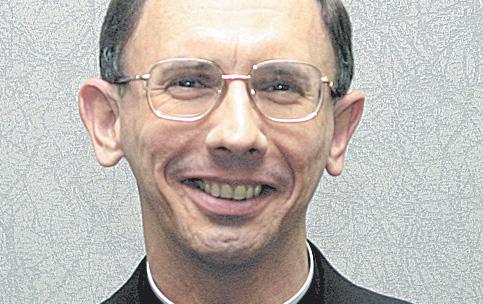
We have arrived at the high point of the Eucharistic Congress, the offering of the Holy Sacrifice of the Mass. All the events of the Congress lead up to this point, because the Mass is the source and summit of the Christian life. The Mass is the source and summit of the Eucharistic Congress.
Why do we have the Eucharistic Congress? The purpose of the Eucharistic Congress is to celebrate our faith in the Real Presence of Jesus Christ in the Holy Eucharist – to affirm our Catholic faith in His Real Presence.
Some years ago (in the mid-1990s) a New York Times/CBS poll surveyed Catholics about their faith, in which they were asked which of the following two statements best represented their faith about the Eucharist: 1. The bread and wine are changed into the Body and Blood of Christ, or 2. The Eucharist is a symbolic reminder of Jesus. A majority of adult Catholics between the ages of 18 and 65 were not able to say that the bread and wine are changed into the Body and Blood of Christ. Jesus, however, says differently.
In this Gospel, we have just heard Jesus say, “Whoever eats my flesh and drinks my blood remains in me and I in him” (Jn 6:56). In other words, He says, I personally remain in the one who eats My flesh and drinks My blood. Christ Himself lives in us through the Eucharist, and His living in us is possible because Jesus is really and truly present in the Eucharist. It is the Real Presence of Christ in the Eucharist.
The theme of our Eucharistic Congress this year is Jesus’ promise to His apostles: “I am with you always.” The Holy Eucharist is the entirely unique way that Jesus fulfills His promise to remain with us, because the Eucharist is Jesus.
There are many, many ways that Jesus is with you always.
He is with us in the sacraments. When you are baptized, He is with you. When you go to confession, He is with you as you confess your sins. When you are at Mass, He is with you. He is with you in the sacrament of confirmation. He is with you when you receive the anointing of the sick. He is with the married couple in the sacrament of holy matrimony.
He is with you in your prayer. He is present where two or three are gathered in His name. He is with us in His Word. He is with us in the person of His sacred minister: the bishop, the priest, or the deacon. He is present in the poor, the sick, and the imprisoned.
Jesus says that He is with you always, meaning that it is a forever promise to be with you. You are always the object of His love, at any time of day, through all
the hours of the night, through all the days of your life. He has made a covenant of love with you. With compassion He accompanies you on your life’s pilgrimage. He does not forget you or abandon you.
But, of all these ways that Jesus is with us always, He is especially with us in a totally unique way in the Holy Eucharist. In the Eucharist, He is present in the fullest sense of the word “present,” meaning it is a substantial presence of Jesus Christ (Catechism of the Catholic Church 1374) unlike the other presences of Christ. The whole Christ is truly present, His Body and His Blood, together with His Soul and Divinity. And this is the way Jesus wanted it.
At every Mass, we offer Jesus to God the Father for the salvation of the world. Jesus is the sacred offering we lift up to heaven at the consecration as our sacrifice of reconciliation, for the forgiveness of sins. He offered Himself on the cross as the sacrifice of forgiveness for the world’s sins, and the Father was pleased to accept Jesus’ gift of Himself. And Jesus commanded us to continue to offer Him to the Father as our sacrifice of reconciliation, our thanksgiving sacrifice for the forgiveness of sins. And so at every Mass we lift up to heaven our sacred offering to the Father, asking God for His mercy. The Mass is a sacrifice, and Jesus is the sacrifice we offer.
Jesus says, “I am with you always.” Yes, it is really Jesus who is present.
We have celebrated this Eucharistic Congress together as one diocesan family, with brothers and sisters from parishes all across the diocese. Let this Eucharistic Congress be the start of something new for you. Resolve to deepen your relationship with Jesus in the Eucharist.
You are probably very busy, as most people are nowadays. But there is someone waiting for you at church, in the tabernacle. And I do say Some-One, not some-thing. It is the Lord Jesus who is waiting for you. Don’t you need to visit someone who loves you? – to visit the Lord in the tabernacle when the church is open during the day outside of Mass times? – to visit Him in Eucharistic Adoration? – or to be at Mass at least one time during the week in addition to your Sunday Mass?
Someone is waiting for you to visit Him. It is really Jesus.
Let this Eucharistic Congress be the start of something new for your spiritual life. Go deeper in your relationship with the Lord in the Eucharist.
Hemos llegado al punto culminante del Congreso Eucarístico, la ofrenda del Santo Sacrificio de la Misa. Todos los acontecimientos del Congreso conducen a este punto, porque la Misa es fuente y cumbre de la vida cristiana. La Misa es fuente y cumbre del Congreso Eucarístico. ¿Por qué tenemos el Congreso Eucarístico? El propósito del Congreso Eucarístico es celebrar nuestra fe en la Presencia de Jesucristo en la Sagrada Eucaristía, para afirmar nuestra fe católica en Su Presencia. Hace algunos años, a mediados de la década de 1990, un estudio del New York Times/CBS encuestó a los católicos sobre su fe, preguntándoles cuál de las siguientes dos declaraciones representaba mejor su fe sobre la Eucaristía: 1. El pan y el vino se transforman en el Cuerpo y la Sangre de Cristo, o 2. La Eucaristía es un recordatorio simbólico de Jesús. La mayoría de los católicos adultos entre las edades de 18 y 65 años no pudieron decir que el pan y el vino se transforman en el Cuerpo y la Sangre de Cristo. Jesús, sin embargo, dice lo contrario.
En el Evangelio, acabamos de escuchar a Jesús decir “El que come mi carne y bebe mi sangre permanece en mí y yo en él” (Jn 6:56).
En otras palabras, dice, yo personalmente permanezco en el que come mi carne y bebe mi sangre. Cristo mismo vive en nosotros a través de la Eucaristía, y su vida en nosotros es posible porque Jesús está real y verdaderamente presente en la Eucaristía. Es la Presencia Real de Cristo en la Eucaristía.
El tema de nuestro Congreso Eucarístico de este año es la promesa de Jesús a sus apóstoles: Yo estoy con ustedes todos los días. La Sagrada Eucaristía es la forma completamente única en que Jesús cumple su promesa de permanecer con nosotros, porque la Eucaristía es Jesús.
Hay muchas, muchas maneras en que Jesús está siempre con ustedes.
Él está con ustedes en los sacramentos. Cuando son bautizados; cuando van a confesión, Él está con ustedes mientras confiesan sus pecados. Cuando están en Misa, Él está con ustedes. Él está en el sacramento de la confirmación. Él está con ustedes cuando reciben la unción de los enfermos. Él está con la pareja casada en el sacramento del santo matrimonio.
Él está con ustedes en sus oraciones. Él está presente donde dos o tres están reunidos en Su nombre. Él está con nosotros en Su Palabra. Él está con nosotros en la persona de su sagrado ministro: el obispo, el sacerdote o el diácono. Él está presente en los pobres, los enfermos y los encarcelados.
Jesús dice que Él está con ustedes siempre, lo que significa que es una promesa para siempre estar con ustedes. Siempre son el objeto de su amor, en cualquier momento del
día, a través de todas las horas de la noche, a través de todos los días de tu vida. Él ha hecho un pacto de amor con ustedes. Con compasión los acompaña en la peregrinación de sus vidas. Él no los olvida ni los abandona.
Pero, de todas estas formas en que Jesús está con nosotros, siempre, Él está especialmente con nosotros de una manera totalmente única en la Sagrada Eucaristía. En la Eucaristía, Él está presente en el sentido más amplio de la palabra “presente”, lo que significa que es una presencia sustancial de Jesucristo (CIC 1374) a diferencia de las otras presencias de Cristo. Todo Cristo está verdaderamente presente, su cuerpo y su sangre, junto con su alma y divinidad. Y esta es la forma en que Jesús lo quería.
En cada Misa, ofrecemos a Jesús a Dios Padre para la salvación del mundo. Jesús es la ofrenda sagrada que elevamos al cielo en la Consagración como nuestro sacrificio de reconciliación, para el perdón de los pecados. Se ofreció a sí mismo en la cruz como sacrificio de perdón por los pecados del mundo, y el Padre se complació en aceptar el don de Jesús de sí mismo. Y Jesús nos ordenó que continuáramos ofreciéndolo al Padre como nuestro sacrificio de reconciliación, nuestro sacrificio de acción de gracias por el perdón de los pecados. Y así, en cada Misa, elevamos al cielo nuestra sagrada ofrenda al Padre, pidiendo a Dios su misericordia. La Misa es un sacrificio, y Jesús es el sacrificio que ofrecemos. Jesús dice: Yo estoy con ustedes todos los días. Sí, es realmente Jesús quien está presente.
Hemos celebrado este congreso juntos como una familia diocesana, con hermanos y hermanas de parroquias de toda la diócesis. Que este Congreso Eucarístico sea el comienzo de algo nuevo para nosotros. Resuelvan profundizar su relación con Jesús en la Eucaristía. Probablemente estén muy ocupados, como la mayoría de la gente hoy en día. Pero hay alguien esperándolos en la Iglesia, en el tabernáculo. Y digo alguien, no algo. Es el Señor Jesús quien los está esperando. ¿No necesitan visitar a alguien que los ama? Visiten al Señor en el tabernáculo cuando la iglesia está abierta durante el día fuera de los horarios de misa, visítenlo en la Adoración Eucarística, o en Misa al menos una vez durante la semana además de la Misa dominical. Alguien está esperando que lo visiten. Es realmente Jesús.
Que este Congreso Eucarístico sea el comienzo de algo nuevo para sus vidas espirituales. Profundicemos nuestra relación con el Señor en la Eucaristía.
Twenty-plus years ago my Yankee schoolteacher wife Laurie and I had a swimming pool installed at our home, affectionately known as High Grass Manor due to my aversion to yard work. Since our backyard slopes downhill and to the right, we got one of those nice fiberglass jobs. They hauled loads of sand and dirt and covered it with riprap rock, which ultimately gives it the look of volcanic mountain with a pool in the middle.
It was finished just as school let out, so Laurie spent the summer sitting in a floating chair, drinking cold drinks and reading cheap romance novels.
Meanwhile, I’d recently taken up beekeeping again and had placed two hives at the right and rear of the pool mountain. The bees chose to make their final approach to the hives over the pool – and in so doing discovered their closest and cleanest water source. They also discovered Laurie and decided that she made the perfect island for them to land on and then suck water off her bathing suit.
Now, friends, you haven’t lived until you have seen a woman contentedly floating in a swimming pool covered in thirsty, buzzing bees!
THE REMARKABLE LIFE OF BEES
When it comes to God, some people don’t believe there is one. Some are well educated, brilliant folks who have more degrees than a thermometer. Some are just common folks like me. Their reasons for disbelief are many and varied. And when it comes to creation, most tend to believe that all this happened through some type of evolution – just a big cosmic accident. But that seems too thin.
Take bees, for example. They’re relatively small insects who live in hives averaging somewhere between 50,000 to 60,000 bees. They function together as a team focused on the survival of their hive. Inside the hive, three types of bee can be found. The queen’s sole purpose is to continuously lay eggs. A few male bees’ only job is to mate with a new queen, after which the male dies. The rest are worker bees.

Among the worker bees, there are many distinct roles. Some find and bring back nectar to make honey. Others find and transport water, used in making honey. Some make the honey. Others feed the queen and the drones and tend to the eggs and larvae. Some stand at the entrance to protect the hive, while others continuously fan, serving as the HVAC for the hive. The worker bees also produce four specific substances. Honey, of course, which they use for food. Wax, which they make and shape into hexagon-shaped storage systems for eggs and honey. Propolis, or bee glue, which they use to seal the hive and everything in it. And finally, they produce royal jelly, which they feed to certain eggs to create a new queen.
Bees also communicate with each other through pheromones or by movements within the hive that tell other bees where to find nectar. And they can fly – very well, in fact. If you’ve ever gotten crossways with them, you know they can fly coordinated combat missions and effectively deliver their weapon payload – a painful, venom-laced stinger –right on target. They also have a precision navigation system on board that gets them to and from the hive.
Now, in all of this, the bees consult no manuals for effective hive operations. They receive no flight, combat, or navigation training. They receive no courses and consult no recipes for any of the substances they produce. Yet every hive does it the same way. Perfectly. Every time, in every hive.
So for my country boy self, it just makes no sense that all this complexity in just one species of insect could happen accidentally. Or as the result of cosmic explosion. Unless, of course, God is behind the evolution or set off the explosion, with everything then guided by the Master’s Hand.
In the end, some just don’t believe that God and science are compatible, when in fact they most certainly are. It is interesting to note that the Big Bang Theory, which essentially says creation started with a singular explosion, was the product of a mathematician and cosmologist named Georges Lemaître, who was also a Roman Catholic priest! He absolutely believed God created the universe, and that science and mathematics were the doors through which its truths could be discovered by human beings
This is the first part of a series. In my next essay, we’ll take a deeper dive into the hive, to find out how we can discover God more clearly through His creation.
Dear Readers: We are pleased to share a new puzzle column, “Words of Wisdom,” starting with this edition of the Catholic News Herald. The puzzles are created by Charlotte resident Pat Battaglia. These puzzles are fun and satisfying to solve and feature amusingly worded Christian truths. Battaglia is an expert in devising word games. He has had a newspaper puzzle column for more than 30 years and has written seven books of brain games. Battaglia is also known as “Dr. Fun,” where he challenges audiences with his brain games while dressed in his hilarious rocket scientist costume, reminiscent of his former career of working on rockets for the United States’ moon landing program.

We hope you enjoy!
Mother Teresa reminded us, “Do not wait for leaders. Do it alone. Person to person.” We may continue her legacy by sponsoring a child or family in her name.
I have recently procured two additional sponsorships by splitting the cost among family members in honor of my deceased father and my wife’s father, who recently passed away. Certainly the same idea of splitting costs may be applied to friends, coworkers, schools, etc. Be sure to search for reputable child sponsorship sites.
The Holy Spirit will give us the courage
@CatholicNewsCLT
The Catholic News Herald welcomes letters from readers. We ask that letters be originals of 250 words or fewer, pertain to recent newspaper content or Catholic issues, and be written from a perspective of Christian charity.
To be considered for publication, each letter must include the name, address and daytime phone number of the writer for purpose of verification. Letters may be condensed due to space limitations and edited for clarity, style and factual accuracy.

to sacrifice some of our wants to fulfill others’ needs.
As the holiday season looms, many will be waiting for their “Christmas Star” to appear in the form of a person providing basic necessities. Mother Teresa is waiting in heaven to help us love our neighbor, especially those frequently forgotten.
The Catholic News Herald does not publish poetry, form letters or petitions. Items submitted to The Catholic News Herald become the property of the newspaper and are subject to reuse, in whole or in part, in print, electronic formats and archives.
E-mail: catholicnews@charlottediocese.org


Mail: Letters to the Editor Catholic News Herald

1123 S. Church St. Charlotte, N.C. 28203

the Gentiles, and for glory to thy people Israel.’
And his father and his mother marveled at what was said about him; and Simeon blessed them and said to Mary his mother, ‘Behold, this child is set for the fall and rising of many in Israel, and for a sign that is spoken against (and a sword will pierce through your own soul also), that thoughts out of many hearts may be revealed’” (Lk 2:25-35).
WHAT ARE THE SWORDS THAT PIERCED MARY’S HEART?
n The prophecy of Simeon (Luke 2:25-35)
n The flight into Egypt (Matthew 2:13-15)
n Loss of the Child Jesus for three days (Luke 2:41-50)
n Mary meets Jesus on His way to Calvary (Luke 23:27-31; John 19:17)
n Crucifixion and Death of Jesus (John 19:25-30)
n The body of Jesus taken from the Cross (Psalm 130; Luke 23:50-54; John 19:31-37)
n The burial of Jesus (Isaiah 53:8; Luke 23:50-56; John 19:38-42; Mark 15:40-47)
WHAT IS THE CHAPLET OF THE SEVEN SORROWS OF MARY?
Also known as the “Rosary of the Seven Sorrows” or the “Servite Rosary,” this chaplet includes seven sets of seven beads, as well as seven medals that depict the Sorrows of Mary.
In 1239, the newly formed Order of the Servants of the Blessed Virgin Mary decided to devote their order to the Sorrows of Mary, meditating especially on her seven sorrows.
The Servites particularly promoted this chaplet during the Black Death in the 14th century.
During the Rwandan genocide of the 1980s, Our Lady of Kibeho, in an apparition recognized by the Church, greatly recommended the Chaplet of the Seven Sorrows during her appearances to three teenage girls. This practice could be a model for ourselves in times of trial. — EWTN.com
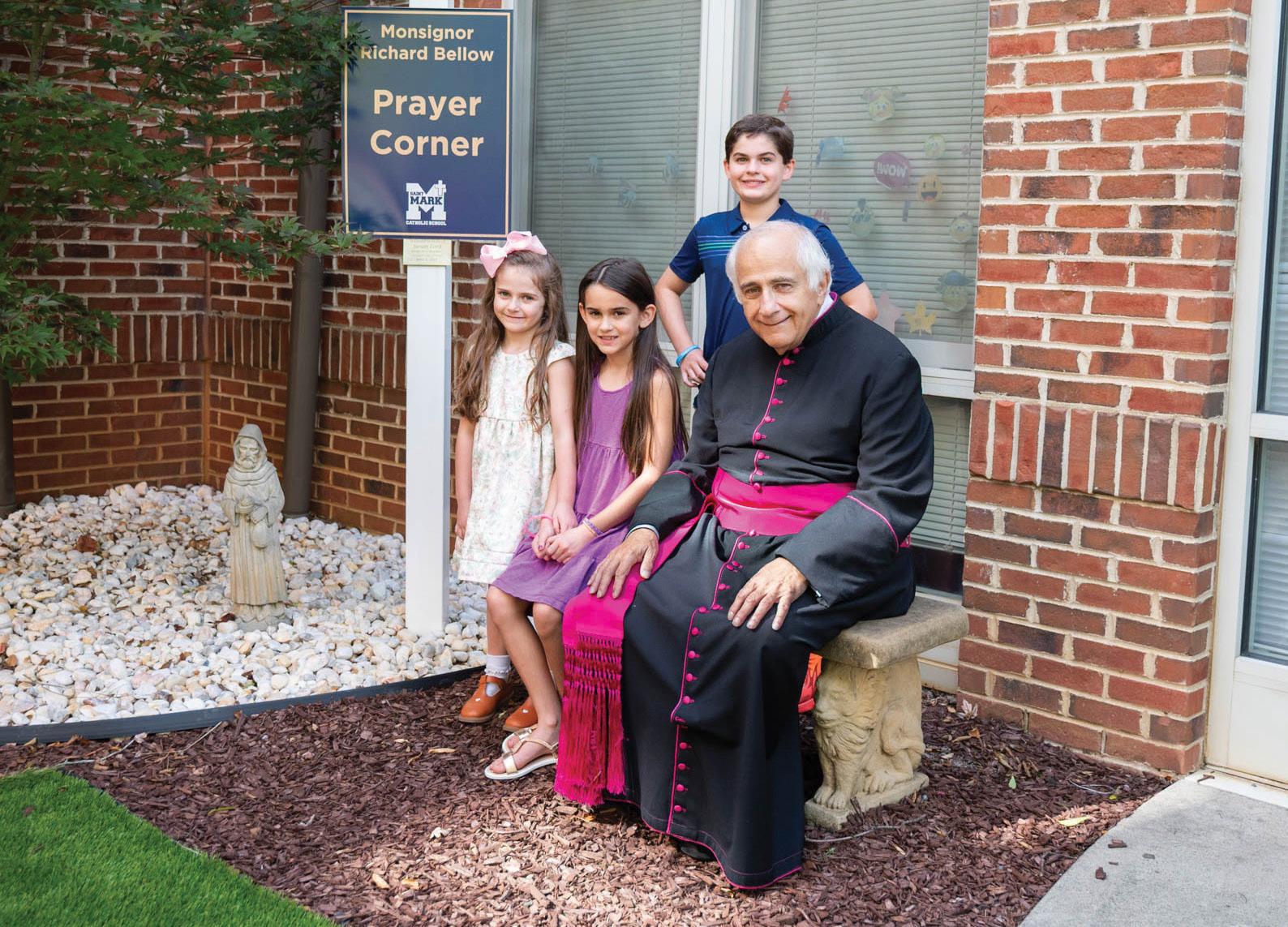
Your contribution to the Priests’ Retirement and Benef its Collection provides for the future pension and retiree health benefits of the 162 priests from our diocese, other dioceses and religious orders who are currently involved in active ministr y and ser ving the faithful of western Nor th Carolina.
The collection will be t aken up at all Masses during the weekend of September 23-24, 2023
You can also make a gif t online at: charlottediocese.org/donate, then click Priests’ Retirement & Benefits Collection

Thank you for your suppor t!
in east Asheville every Tuesday morning and drop it off at the pantry. More volunteers organize the food and pack boxes. Then others pack special orders for non-food items distributed through the pantry such as diapers, toiletries, feminine hygiene products, pet food, toilet paper and other supplies not provided by the food bank.
After that, five volunteers operate the food pantry with setup, operation and breakdown. Another volunteer arrives on Thursdays to reorganize everything and get ready for the following week.
MANNA and Catholic Charities also run a monthly mobile food pantry, an outreach started during the pandemic. Primarily held at local Catholic churches, “MANNA Express” is held on the second Thursday of each month. The most recent event, held at Dora Reed Qualla Boundary Head Start in Cherokee, fed 110 families – a total of 467 people. Catholic parishes hosting these mobile events include Sacred Heart in Burnsville, St. Margaret Mary in Swannanoa, St. Joan of Arc in Candler, Immaculate Conception in Hendersonville, St. John the Evangelist in Waynesville, St. Lawrence Basilica in Asheville and St. Mary Mother of God in Sylva. Boeckermann says the churches are the perfect location for this outreach because they have lots of volunteers and large parking lots – and he is grateful for the parishioners’ tremendous response.
Through 31 MANNA Express events, Catholic Charities has helped 2,136 families – a total of 8,603 people – across western North Carolina. And they aren’t slowing down anytime soon. The next MANNA Express event will be held Oct. 12 at St. Margaret Mary Church in Swannanoa.
Another local need became apparent during the summer of 2020. The principal of Woodfin Elementary School near Asheville contacted school volunteer Judy Butler to tell her
about school families who had no food. Butler was already involved with MANNA Foodbank, so it was easy for her to go to the food bank and explain the need in Woodfin.
As it turns out, MANNA did not yet have a community partner in Woodfin, so they paired the community with Catholic Charities, whose office is just 10 minutes away.
“That worked out perfectly because we have a very large Hispanic population in this immediate area. Many of the same people also attend my parish, St. Eugene Catholic Church in Asheville, so it just all came together,” says Butler, who was recognized this year for her volunteer work when she received Catholic Charities’ Spirit of Hope Award.
What started as a drive-through distribution of food during the pandemic has turned into a true market. On the second Tuesday of each month, MANNA drives two truckloads of food to Woodfin Community Center, where from 3 p.m. to 5 p.m. Catholic Charities sets up a “MANNA Community Market” where clients shop for the items they want. The next event will take place Oct. 10.
“All we ask for anybody coming through the line is how many people are in their families,” Butler says. “We also let people shop for multiple families.”
Earlier this year, the Woodfin market peaked when it served 184 families, a total of 752 people, in only two hours. Like MANNA Express, these events also include the chance to pick up diapers, toiletries and other necessities, easing the burden on families in need. Through August 2023, the Woodfin Community Market has served 18,545 people. Butler and Boeckermann say they sense God’s hand in the work they’re doing.
“I was in the right place at the right time and had the necessary knowledge as well as familiarity with the people who needed assistance,” Butler says. “I don’t credit myself with being smart enough to figure all of this out on my own, but I’m very humbled by what we’ve been able to do. This is an incredible service to the community.”
Boeckermann adds, “We couldn’t do the work we do with our small staff and dedicated volunteers if it weren’t for the grace of God and how He provides through the love that’s shown through Catholic Charities every day. Catholic means universal, and charity means love. We see the universal love of God on display every day in the work we do in western North Carolina and throughout the Diocese of Charlotte.”